Never-Before Seen Scrapbook Sheds New Light—Provides Valuable Insights

New York State Militia and the Union Defence Committee Mobilize for War
 by Leon Reed
by Leon Reed
In the heated days following the fall of Fort Sumter and President Lincoln’s call for 75,000 troops, northern governors raced to declare their full support and promise that their state would meet or exceed the president’s quota for volunteer troops. Lincoln and his nervous cabinet cared little about promises. Troops on the ground, in Washington, D.C., were what mattered to a group of people increasingly concerned about the possibility of Virginia troops, or southern sympathizers in Washington, swooping in to kidnap Lincoln and his cabinet.
A never-before seen scrapbook maintained by Hiram Roosa of Rondout, N.Y., the corresponding secretary of the New York Military Association, provides valuable insights into the secession crisis and the nation’s progress toward civil war. The collection consists of photos, original correspondence, souvenirs sent to Roosa by various New York soldiers, and a collection of approximately 300 patriotic envelope covers that commented on various aspects of the crisis and the war. The collection provides particular insights into the pivotal role played by New York militia regiments in the early days of the war.
New York and Secession
While much of the north reacted calmly to the initial round of secession and felt that, like always, a compromise would be worked out; the New York State militia organization took the crisis more seriously. In January 1861, Major General Charles
Sandford, commander of the 1st Division NYSM, offered the entire division to be ready to march “on an hour’s notice.” The lame duck Buchanan administration wasn’t eager to provoke a confrontation at this time, so the offer was politely declined.
Even earlier, on January 9, 1861, after South Carolina forces fired on the Star of the West, a ship attempting to resupply the Fort Sumter garrison, the New York Military Association (NYMA) notified Major Anderson of a resolution of support. 1
After the Star of the West confrontation, the standoff over Fort Sumter simmered on for almost three months. The issue was brought back to the front burner when Lincoln ordered another resupply expedition. This was approaching Charleston in mid-April when CSA forces in Charleston opened fire on the fort. The attack on and surrender
of Fort Sumter shook the North out of its complacent attitude.
The reaction in New York City was instantaneous. Democratic newspapers and politicians who had opposed Lincoln now supported the war policy. Politician Dan Sickles wrote: “The city of New York will sustain the government… Democrats are no longer partisans. … The attack on Fort Sumter has made the North a unit.” Even the New York Herald, previously highly critical of Lincoln’s policy, came out in support of Lincoln’s war program.
All the northern governors quickly issued statements of support, but Lincoln needed to defend Washington NOW and troops parading in Indianapolis or being recruited in Lansing wouldn’t help defend the national capital. Massachusetts raised four regiments immediately. Two were sent to reinforce
Fort Monroe; the other two were among the first to head toward Washington. Other than these regiments, the state of New York was in the best position to dispatch significant numbers of reinforcements.
The reason for New York’s comparatively fast mobilization was that, under the sponsorship of the NYMA, many regiments already existed. An active New York militia was organized into two divisions and regiments often had officers and at least partially full rosters. In some cases, militia units had their own armory, some weapons, and a regular drill schedule.

In fact, New York militia units were regularly activated in peacetime to perform ceremonial duties or maintain law and order. Regiments were frequently called up to deal with fires, riots, or other local emergencies and several regiments were paraded to honor the Prince of
Wales (later King Edward VII) in 1860.2
In these early days, militia regiments would be dispatched immediately and serve as gap-fillers until the adjutant general could recruit volunteer regiments that would serve for two years.
Union Square
On Monday, April 14, Horace Greeley’s Tribune called for a patriotic assembly to be held in New York City the following Saturday. A group described as “the solid men of Wall Street” met to plan the rally and speakers. By the time the rally was held, word had already reached New York that a Massachusetts regiment had been ambushed while passing through Baltimore, and New York City was totally aroused.
Vol. 46, No. 12 48 Pages, December 2020 $3.50 America’s Monthly Newspaper For Civil War Enthusiasts 36 – American Battlefield Trust 47 – Advertiser Index 10 – Black Powder, White Smoke 40 – Book Reviews 35 – Central Virginia Battlefield Trust 38 – Emerging Civil War 26 – The Graphic War 30 – Inspection, ARMS! 2 – Letters to the Editor 18 – The Source 8 – The Unfinished Fight 14 – This And That 20 – Through The Lens 5 – Trivia H Scrapbook . . . . . . . . . . . . see page 4
“America’s Havelock”
Civil War News
Published by Historical Publications LLC
520 Folly Road, Suite 25 PMB 379, Charleston, SC 29412
800-777-1862 • Facebook.com/CivilWarNews mail@civilwarnews.com • www.civilwarnews.com
Advertising: 800-777-1862 • ads@civilwarnews.com

Jack W. Melton Jr. C. Peter & Kathryn Jorgensen
Publisher Founding Publishers
Editor: Lawrence E. Babits, Ph.D.
Advertising, Marketing & Assistant Editor: Peggy Melton
Columnists: Craig Barry, Joseph Bilby, Matthew Borowick, Salvatore Cilella, Stephanie Hagiwara, Gould Hagler, Tim Prince, John Sexton, and Michael K. Shaffer
Editorial & Photography Staff: Greg Biggs, Sandy Goss, Michael Kent, Bob Ruegsegger, Gregory L. Wade, Joan Wenner, J.D.
Civil War News (ISSN: 1053-1181) Copyright © 2020 by Historical Publications LLC is published 12 times per year by Historical Publications LLC, 520 Folly Road, Suite 25 PMB 379, Charleston, SC 29412. Monthly. Business and Editorial Offices: 520 Folly Road, Suite 25 PMB 379, Charleston, SC 29412, Accounting and Circulation
Offices: Historical Publications LLC, 520 Folly Road, Suite 25 PMB 379, Charleston, SC 29412. Call 800-777-1862 to subscribe.
Periodicals postage paid at U.S.P.S. 131 W. High St., Jefferson City, MO 65101.
POSTMASTER: Send address changes to: Historical Publications LLC 520 Folly Road Suite 25 PMB 379 Charleston, SC 29412
Display advertising rates and media kit on request. The Civil War News is for your reading enjoyment. The views and opinions expressed herein are those of its authors, readers and advertisers and they do not necessarily reflect the official policy or position of Historical Publications, LLC, its owners and/or employees.
P UBLISHERS :
Please send your book(s) for review to: Civil War News
520 Folly Road, Suite 25 PMB 379 Charleston, SC 29412
Email cover image to bookreviews@civilwarnews.com. Civil War News cannot assure that unsolicited books will be assigned for review. Email bookreviews@civilwarnews.com for eligibility before mailing.
ADVERTISING INFO:
Email us at ads@civilwarnews.com Call 800-777-1862

MOVING?
Contact us to change your address so you don’t miss a single issue. mail@civilwarnews.com • 800-777-1862
SUBSCRIPTION RATES
U.S. Subscription rates are $41/year,
Letters Editor to the
LETTER TO THE EDITOR:
In regard to secession, let it be known that Virginia, New York, and Rhode Island all joined the voluntary Union of sovereign states with the expressed condition that they reserved the right to withdraw from it. All states being equal under the constitution, the right of secession applied to all. Secession is nothing more than the inalienable right to freedom of association in the political sphere. To those who argue that the Southern states submitted their right of secession to the arbitration of arms is no more valid than to say a pedestrian submits his right to the money in his pocket to the arbitration of a hold-up man. The money might be gone, but his right to it is not. The Southern states may have been driven back into the Union at the point of the bayonet and “overwhelming numbers and resources,” but the right of secession remains.
H.V. Traywick Jr. Richmond, Va.
LETTER TO THE EDITOR:
First, I want to thank you for one of the greatest articles I’ve ever had the honor to read. Your “10 Favorite Books” deserves to be included in the list of many fine books mentioned in your articles! Thank You!
Now that being said and I have your attention, I’d like to say that your fine writers missed several of the period’s most important books:
Much of the War’s written material strikes me as scholarly attempts to find a magic formula that will make the suffering and destruction understandable or almost mathematically inevitable. This magic formula will ease
our souls reading about our ancestral blood and neighbors trying to kill each other for some “justifiable” reason. To describe the War without horror being the major theme is an attempt to find the unicorn. War is the lowest measure of humanity. It is evil, it is brutal, and it is something that should be expressed as such. To not include books that attempt to describe this distress leaves the list short of real history.
If I could add another book, it would be one not yet written, as there is no Confederate version of the Red Badge of Courage! Why not? If only Buster Kilraine had survived the War and written a diary to expand on his description of a “Killer Angel” and his attempt to restart a meaningful life after his experiences! (Hmmm, maybe a new novel idea?)
Thank you again for an excellent publication, and more importantly, a well-thought-out, quality scholarship!
Dan Cashin Havertown, Pa.
LETTER TO THE EDITOR:
I do not know about anyone else, but no one has to tell me why copies of the CWN are being destroyed and damaged at the US Post Office. We all know that we are under attack, law enforcement officers are being killed, our cities burned, and our monuments destroyed.
Like you, I sit here on Lost Mountain, Ga., and there is not a damn thing I can do, until now. My twelve-year-old great grandfather did not roll over when President Lincoln sent the call out. He and brothers marched south with the 69th New York Militia to Bull Run. Somebody later shot one of the brothers in the forehead at the North Anna. By then, they were called the Fighting 69th of the Irish Brigade.
I’m tired of rolling over. I did not roll over in the Marines or the state police. I can’t grab my gun and protect my flag. But tomorrow, I will put a check in the mail to cover my $2.50 polybagging cost and that of a few of the brothers under the weather because of the Corona Virus.
Furthermore, I just decided that I’m going up to Remembrance Day in Gettysburg. The politicians can cancel the SUVCW parade, but the 69th New York will be at our monument and visiting the graves.
If you can, please join me by sending in a check to the CWN to cover the added cost of polybagging.
Steve Reilly Lost Mountain, Ga.
Publishers Note:
Since we decided to begin mailing copies of Civil War News inside a polybag with a cover sheet starting with the November 2020 issue, we are delighted to announce that we have not received one complaint of a missing or damaged paper, a first since the beginning of 2020. The response from our readers to the addition of the polybags has been so positive. We have received donations in support of this additional cost, and based upon the numbers of renewals coming in, the additional charge of $2.50 does not appear to be a problem for most of our readers.
Friends of Civil War News have graciously made generous donations to help support the paper. We appreciate any and all help in the preservation of our publication. It is no secret that these are challenging times for publications such as ours, with loss of event advertising due to the Covid-19 social distancing requirements and necessary cancellations to prevent the spread of the virus. We fully expect to regain advertising revenue as businesses open back up and events are rescheduled. Some of our long-time advertisers have found it too difficult to remain in business this year, so we have permanently lost the revenue from their support. Sadly, we will miss their friendships and we wish them the best.
Civil War News is not a 501(c) non-profit; however, we are starting to feel like we should be. In spite of the lost advertising revenue this year, the price for our printing has gone up while the price we pay for other services to provide you with a top-notch publication has remained the same. Peggy and I have personally had to dig into our savings this year to keep the paper afloat. That being said, we know that there are those among our readers who have professions that have protected them from the financial burdens put upon many of us this year. We are not too proud to ask that if you love what we produce, month after month, year after year, then please consider making a donation to the
2 Civil War News December 2020 2 Civil War News December 2020
$71/2 years, digital only $29.95/year, add digital to paper subscription for only $10/year more. Subscribe at www.CivilWarNews.com






The rally on Union Square was the largest held in the United States up to that point. An estimated 200,000 people rallied in favor of the Union, and businessmen pledged financial support for the then-forming
volunteer regiments. At the conclusion of the rally, business leaders agreed to form the Union Defense Committee to help organize regiments, equip them, and transport them to the front.
On April 17, the New York adjutant general issued General Order No. 15, ordering Gen. Sandford to dispatch one regiment for immediate service; Sandford sent the 7th NYSM. The best-known New York militia regiment, the 7th, was ordered to report immediately. The 7th was a “silk stocking” regiment, made up primarily of children of the city’s elite. The 7th was regularly called out for law enforcement duties, including election riots, the abolition riot (1834), stevedore riot (1835), anti-rent war (1839), Croton water riot (1840) and many others. The regiment was also highly prized for ceremonial duties. It earned particular fame in 1858 for escorting President Monroe’s remains back to Virginia. The



Seventh’s journey and its visit to Mount Vernon was a major national story. The 7th was celebrated in every city and participated in a parade and review by the president and his cabinet during its visit to Washington, D.C. The New York Herald wrote a 7-column front page story on their July 12, 1858, return home.3
By April 19, the 7th and 69th had offered their services; the 7th NYSM and 8th Massachusetts paraded down Broadway that day. A 7th militia soldier, writer Pvt. Ted Winthrop, wrote about the excitement of the event for Atlantic magazine:
It was worth a life, that march. Only one who passed, as we did, through that tempest of cheers, two miles long, can know the terrible enthusiasm of the occasion. I could hardly hear the rattle of our own gun-carriages, and only once or twice the music of our band came to me muffled and quelled by the uproar. … Handkerchiefs, of course, came floating down upon us from the windows, like a snow. Pretty little gloves pelted us with love-taps.4
New York’s response was complex. The militia units were the first to go, but the majority of the militia regiments only enlisted for 90 days. In all, 11 militia regiments signed up for three months service. Once the administration said it would accept no more 90 day regiments, four additional regiments enlisted for 3 years (2nd, 9th, 14th, and 79th). Thirteen of these 15 regiments were from either New York City or Brooklyn; the other two came from Albany and Kingston.
It might have seemed to the marchers and onlookers watching the 7th NY and 8th Mass. parade that the resources needed to relieve Washington were well in hand, but as the regiments prepared to move south, the seemingly routine rail passage through Baltimore to Washington was becoming more complicated.

Pratt St./Annapolis
On April 19, soldiers from the 6th Massachusetts Infantry had to fight their way through an angry pro-secession mob in Baltimore. That night, the governor and mayor insisted to President Lincoln that no more Federal reinforcements should be sent through Baltimore.
The same night, the Maryland militias took more direct action. Parties led by the Baltimore police chief and
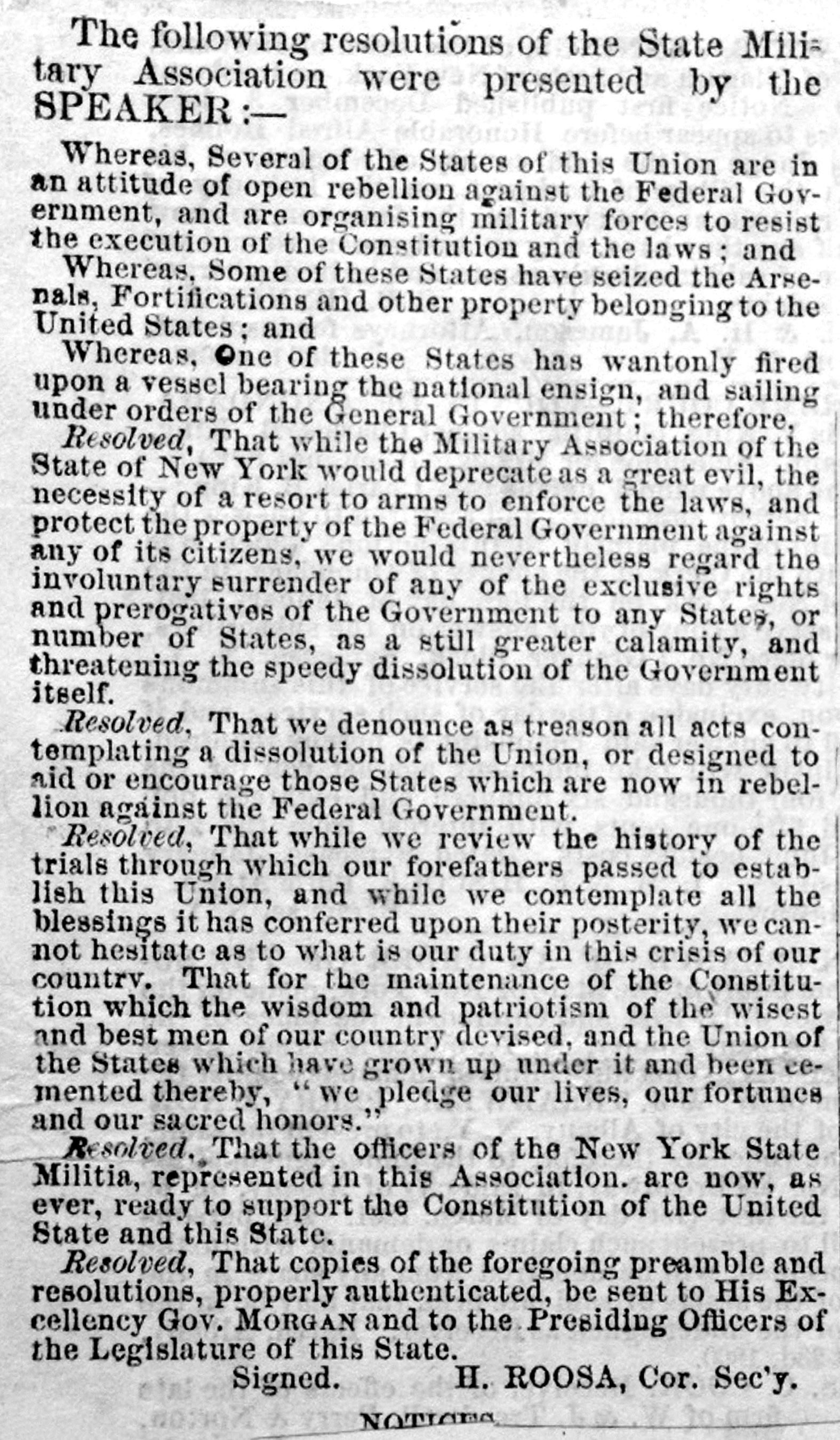
4 Civil War News December 2020 4 Civil War News December 2020 H Scrapbook . . . . . . . . . . from page 1
7th New York Militia
NYMA resolution of support for Anderson’s actions at Fort Sumter.
Columbia, Awake at Last.
“Excelsior,” New York State motto.
7th NYSM parades in Washington, D.C., 1858.
NY State Volunteer Militia.
the pro-secessionist state militia commander burned railroad bridges and cut telegraph lines north of Baltimore. With the direct route by rail through Baltimore cut off, it was necessary to establish a new route through Annapolis. Units traveled by ship to Annapolis, then follow the branch railroad to a junction with the main northsouth line south of Baltimore. The two first regiments to follow this route were the 7th New York and the 8th Massachusetts.
To open this route, it was necessary to repair the branch railroad from Annapolis to the junction, guard the branch line and bridges, and get a locomotive into working order. The job
of repairing and guarding the branch line fell to the 7th New York, while the Massachusetts regiment was responsible for maintaining law and order in Baltimore.
The Seventh finally linked up with the Washington rail line, and its arrival in Washington on April 25, is considered the event that finally secured the nation’s capital. The flood of other New York regiments followed closely behind. The 6th, 12th, and 71st, gathering in their armories on April 20, embarked on steamers April 21.

Not all newspapers celebrated the 7th or accepted that the regiment had made a bloodless passage through Maryland. One
southern newspaper reported gleefully:
An engagement … on Annapolis Heights … the New York City 7th regiment … were literally cut to pieces. The dispatch spread like electricity all over the city.5
According to a history of the Union Defense Committee, the public was indignant about the actions in Maryland and the cry “To Washington via Baltimore” expressed their view that the Annapolis bypass was unacceptable and U.S. troops should force their way through Baltimore.6
 By Lawrence E. Babits
By Lawrence E. Babits
Civil War
Alphabet Quiz - H
H as in...December
1. Confederate submarine
2. US Navy vessel sunk by #1
3. Admiral Farragut’s flagship
4. Mississippi Union supply base destroyed by Van Dorn in 1862
5. US military Rail Road chief
6. Triumvirate of US generals commanding at Gettysburg’s “Inner Angle”

7. He commanded the “Light Division” under Jackson





8. “Gallant” Texas Brigade commander and, later, the Army of Tennessee’s
9. “Fighting Joe”
10. Tennessee Governor who “seceded” Tennessee before a vote was taken
Answers found on page 46.

5 December 2020 Civil War News 5 December 2020 Civil War News Subscribe online at CivilWarNews.com Buying and Selling The Finest in Americana 11311 S. Indian River Dr. • Fort Pierce, Florida 34982 770-329-4985 • gwjuno@aol.com George Weller Juno
Handwritten vignette about Major Robert Anderson.
7th NYSM parades down Broadway, April 19, 1861.
9th NYSM “By Reason or by Force.”
For the time, passage would still be via Annapolis. This passage, plus the raising and equipping of regiments, would be aided by a new organization.
Union Defence Committee (UDC)
The original purpose of the
UDC was to collect funds to use to help raise and transport troops. The new organization set about its work immediately, chartering the Kill von Kuil to open the transport route via Annapolis, helping equip newly forming regiments, and providing financial assistance to families left behind.


Lincoln was so desperate to get troops dispatched that he authorized direct payments to the UDC from the Treasury and for a while the UDC became a sort of mobilization coordinator and purchasing agent. Among the actions taken by the UDC during the first hectic months were:
1. Chartering the Quaker City to protect Chesapeake Bay shipping from privateers,
2. Surveying loyal governors in early May, to determine the number of troops they were raising and their condition.
3. Purchasing cannon to equip New York regiments.
4. Purchasing 5,000 rifles for the “Union men” in western Virginia and another 1,000 stand of arms and ammunition for the “Union men” in Kentucky.
5. Directly sponsoring the equipping and raising of four regiments, Garibaldi Guard (39th NY), Mozart (40th), Dekalb (41st), and
Tammany (42nd).
6. Advocating with the national government and the governor, and then accelerating the equipping and forwarding of regiments in the second wave of deployments.
7. Supplying weapons to General John C. Fremont in Missouri.
One of the committee’s last actions, in November 1861, was to provide $1,000 in aid to “the loyal inhabitants” in the area of Cape Hatteras.
Occupation of Northern Virginia
Elmer Ellsworth was a bit of a celebrity, having introduced the Zouave concept to the United States and toured the country with his Zouave troupe. He was also a friend of Lincoln’s and had accompanied him on his journey to Washington. On May 24, 1861, the day after Virginia voted to ratify the articles of secession approved by the legislature, Ellsworth’s regiment played a leading role in the first offensive operation of the war. The New York Times listed eight NYSM units (plus “Ellsworth’s Zouaves,” the 11th New York Volunteers) as making up about two-thirds of a Union force that crossed the Potomac River to occupy Arlington County and Alexandria. While the 69th New York led a column of troops across the Chain Bridge, the 12th, 25th, and 7th marched over the Long Bridge (near today’s 14th Street Bridge) into
Virginia, and Ellsworth and his Zouaves took a steamer down the Potomac to the Alexandria city dock. Most Confederate troops had fled the occupation of the city was relatively smooth. Pvt. Theodore Winthrop, who had provided the description of the April 19 march in New York City, marched across the Long Bridge with the 7th New York. His vivid account of the march is an example of the idealism and enthusiasm that still gripped some soldiers at this point before the casualty lists started to lengthen. Winthrop was killed a few weeks later at the war’s first battle, the Battle of Big Bethel.
The outer world is vague in the moonlight. Objects out of our ranks are lost. I see only glimmering steel and glittering buttons and the light-stepping forms of my comrades. Our array and our step connect us. We move as one man. A man made up of a thousand members and each member a man is a grand creature,—particularly when you consider that he is self-made. And the object of this self-made giant, men-man, is to destroy another like himself, or the separate pigmy members of another such giant. We have failed to put ourselves—heads, arms, legs, and wills—together as a unit for any purpose so thoroughly as to snuff out a similar unit. Up to 1861, it seems that the business of war compacts men best.7
6 Civil War News December 2020 6 Civil War News December 2020
H Scrapbook . . . . . . . . . . . see page 13
Zouve in uniform next to signpost from Washington via Baltimore.
The Gallant 69th of New York, ready to receive their Secession friends from the South, Arlington Heights, June 1861.






Wedding Rings who served during the Civil War. Presumably those who chose to wear a wedding ring could not afford the luxury of jewelry in solid gold.
While the wearing of wedding rings by married women has been traced back to ancient times, it is only in the latter part of the last century that more than a small minority of married men began doing the same. Historically, one reason a wedding ring was worn only by a woman was because it served, at times, to represent ownership by her husband, or at least that she “belonged” to someone.
While wedding rings were not the norm for men during the Civil War era, they are occasionally found while digging for relics in Civil War campsites. They are almost always copper or brass although sometimes the brass ring is gold plated. The expense of a solid gold ring would have put such a luxury out of reach for the working-class men

In the book Tenting Tonight (Time/Life Books) on both pages 39 and 43 there are photos of married men wearing rings on their little (pinky) fingers.
A recent biography of General Ulysses S. Grant provides an account of him losing his wedding ring while he was stationed at Fort Humboldt on the northern California coast during 1854; he became quite despondent over the loss. Grant was married in 1848; ironically future

Confederate General James Longstreet was the “best man” at Ulysses and Julia Dent Grant’s wedding in St. Louis. Grant’s time at Fort Humboldt was a low point for him overall. He wrote, “I do nothing here but sit in my room and read and occasionally take a short ride. I have not
been a quarter of a mile from my room for about one week. I am enjoying good health but growing more lazy every day for want of something to do.”
In a number of period images, men with what are assumed to be wedding rings are shown wearing it on their little finger. Grant is also pictured wearing his wedding ring on his little finger. In period images of General J.E.B. Stuart, he wears his West Point signet ring on the little finger.

Of course, not all rings were wedding rings. Union soldier N.H. Panghorn, recalling the
1865 surrender at Appomattox, wrote, “Our boys and the Rebels would be in each others camps talking and exchanging pen knives, finger rings, hats and caps and all kinds of little keepsakes…or as the Rebels say ‘trick’…there were a good many instances where we had but for a few hours before been trying to kill each other.” There were also accounts of soldiers sending personal possessions of a fallen comrade-in-arms back home to his loved ones. It is not specified if they included wedding rings or not.

An account from The Civil War in Louisiana: Military Activity notes, “the Confederate prisoners were driven into a back corner and compelled to lie down…Union soldiers arrived and looted one officer, cutting off his gold uniform buttons and the wedding ring from his hand.” Clearly the officer wore a wedding ring, but it is not clear on which finger he preferred to wear it.
There was also an ethnic component to men wearing wedding rings in the mid-19th
century. It was not uncommon for German men to wear wedding rings on their right hand, at least as far back as the 18th century; in Scandinavia the wearing of wedding rings for men is a tradition that dates back to the Viking-era.
It is believed that World War II heralded a seismic shift as far as men wearing wedding rings. Western men fighting overseas may have chosen to wear wedding rings as a comforting reminder of their wives and fam-
8 Civil War News December 2020 8 Civil War News December 2020
ilies back home. A colleague of mine who works for a jewelry store confirmed as much. In
Unidentified soldier in Union uniform, woman, and baby. Note the ring on his left pinky. Liljenquist Family Collection of Civil War Photographs, Library of Congress.
Close up of the soldiers hand with his wedding ring.
their retail training materials it states that it was not customary for men to wear wedding rings prior to World War II.







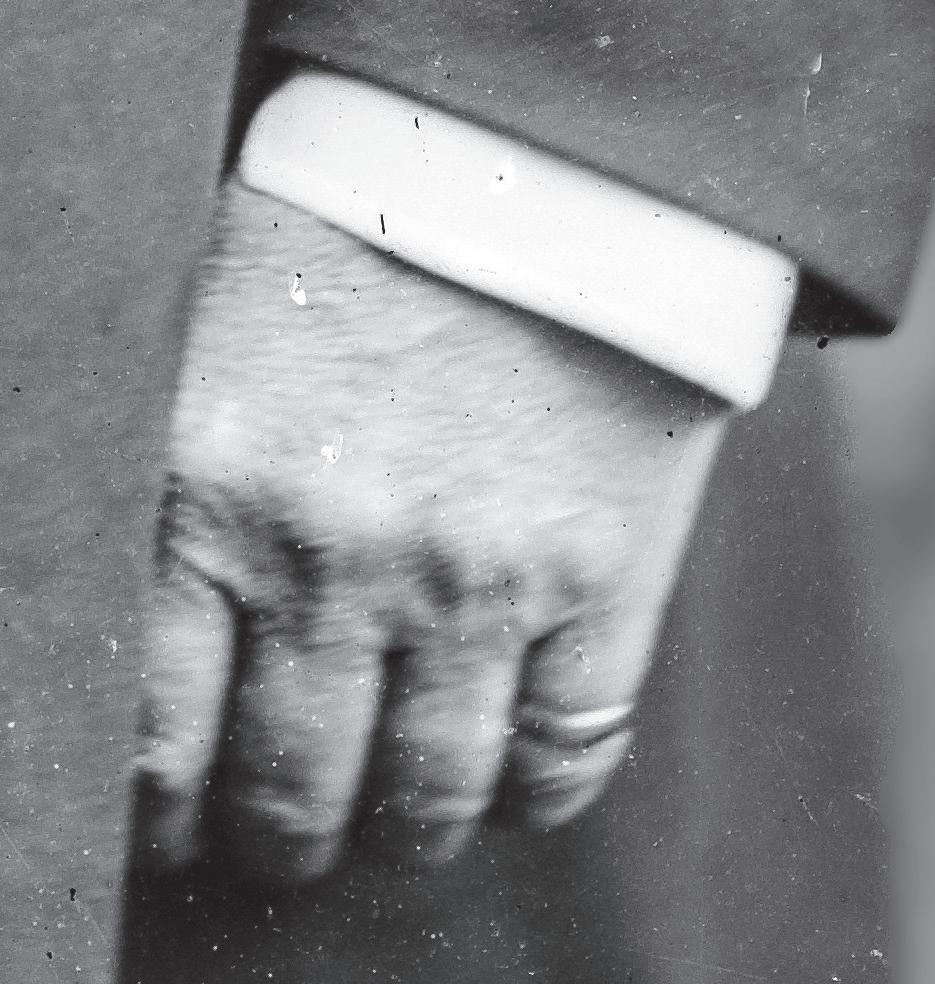
Craig L. Barry was born in Charlottesville, Va. He holds his BA and Masters degrees from the University of North Carolina (Charlotte). Craig served The Watchdog Civil War Quarterly as Associate Editor and Editor from 2003–2017. The Watchdog published books and columns on 19th-century material and donated all funds from publications to battlefield preservation. He is the author of several books including The Civil War Musket: A Handbook for Historical Accuracy



9 December 2020 Civil War News 9 December 2020 Civil War News
President Ulysses S. Grant wearing a gold ring on his left pinky finger. Library of Congress.
– MAKER –LEATHER WORKS (845) 339-4916 or email sales@dellsleatherworks.com WWW. DELLSLEATHERWORKS.COM
Left: Close up of Grant’s left hand.
A Look at a Popular Magazine’s Civil War Weapons Stories

GUNS Special Issue
As the editor of GUNS Magazine, sponsor of this abundantly illustrated publication, notes, “Guns tell stories, and those associated with the Wild West surely have thrilling tales to share.” The magazine also noted, much to my satisfaction, that “Unfortunately, much of this mystique was fabricated by scriptwriters from the 1930s through the 1960’s.” It is time to correct this situation, and this publication sets about doing it. The large number of articles in the Old West Special Edition covers a multitude of subjects, from original arms, ammunition, leather gear, replicas, and restorations. Tom Laemlein’s “Native American Arms: An Unsustainable Fire,” was particularly interesting to me as it gives us a new perspective on Native American acquisition of firearms. Although some were captured, some found, most
actually came into native hands through trade with white folks. It was ever thus, back to colonial days, as I have documented in my book New Jersey: A Military History.


The Civil War makes an appearance in some articles as well and an edition such as this would not be complete without a fascinating tale of buried treasure. Interestingly they are one and the same. Dr. Will Dobbs shares how a Civil War-era revolver was discovered under layers of Mississippi mud. Jeff Houston, an acquaintance of Dobbs and owner of the “Rebel” gun store in Oxford, Miss., was using a backhoe to improve drainage on his property when he noted the unusual shape of a dirt clod he unearthed. When he examined it, Houston found it was a rusty Remington .44 caliber percussion revolver, that he cleaned, conserved, and then put on prominent display in his gun shop.
Dr. Dobbs was curious about how the revolver ended up where it was found and did some local research on the possible
by Joe Bilby
origin of the gun. According to Dobbs, in 1864, an unsuccessful Union cavalry raid in pursuit of General Nathan Bedford Forest ended up in Oxford where some Yankee horse soldiers found a hoard of whiskey and burned some buildings. As they left, heading toward the property owned by Houston today, the cavalrymen encountered a small group of Confederate infantry, who fired a few volleys and retreated. According to Dobbs, the Confederate musketry killed one man on Houston’s property, Lieutenant Theophilus Milhouse, and he concluded that this handgun was probably Milhouse’s revolver. Whether it was or not remains a mystery. Records of serial numbered weapons and who they were issued to, while not nonexistent, are rare, since they were not required. I have occasionally seen Quarterly Ordnance Reports bearing the serial numbers of, for example, Sharp carbines issued to a regiment, but not individual soldiers. I made a brief check on my usual reference in these cases, Civil War Database, but found no one of that name and rank killed in the Civil War. Of course, spelling errors are common. If anyone discovers otherwise, let me know. At any rate, it makes a good story, and guns tell stories, sometimes with a little assistance.
Chiappa Spencer
A more verifiable story in the magazine is Frank Jardim’s article on the Chiappa reproduction Spencer carbine. The weapon differs from the original in that it features minor improvements made over the years of production, including an extractor developed in 1867, none of which are readily visible, making the gun useful in both Civil War reenactments, and Cowboy Action Shooting matches. It is available in three calibers, .45 Colt, .44-40, and a centerfire version of the original .56.50 rimfire round. Prices range from $1,400 to $2,000.
loading .56-50 centerfire rounds for his gun. The .45 Colt and .4440 ammunition is widely available. If you want to be super authentic with your Spencer, you should choose the .56-50, as it approximates the initial rimfire round. Fortunately, all you need, providing you are a hand loader, is readily available. Cartridge cases are available from Buffalo Arms and Starline Brass; bullet molds and handles come from Lyman. The components are not cheap but if you can afford a Chiappa Spencer, you can probably afford the ammo components.
Jardin used smokeless powder in his Spencer, with a load of 23 grains of Dupont IMR 4227. You can, of course, load black powder, although the Starline cartridge case has smaller interior dimensions, since the brass is modified to be stronger than the original Spencer rimfire



round.
All in all, the Old West Special Edition is an entertaining read; there is even an article on tavern whiskey of the era. Well worth the modest price.
Joseph G. Bilby received his BA and MA degrees in history from Seton Hall University and served as a lieutenant in the 1st Infantry Division in 1966–1967. He is Assistant Curator of the New Jersey National Guard and Militia Museum, a freelance writer and historical consultant and author or editor of 21 books and over 400 articles on N.J. and military history and firearms.

He is also publications editor for the N.J. Civil War 150 Committee and edited the award winning New Jersey Goes to War. His latest book, New Jersey: A Military History, was published by Westholme Publishing in 2017. He has received an award for contributions to Monmouth County
Jardim gives the gun a complete review, which includes GUNS
10 Civil War News December 2020 10 Civil War News December 2020
Old West Special Edition
All Hands on Deck! Support Our Mission to Bring You the Naval History “This is the magazine for all things Civil War Navy. From ‘Uncle Sam’s web-feet’ to the ‘grey jacket navy’ raised by Jeff Davis! It is all here thoroughly researched and illustrated by beautiful contemporary navy images.” Ron Field, military historian and author of over 45 books, including Bluejackets: Uniforms of the United States Navy in the Civil War Period, 1852-1865. 1 Year—4 Issues: $37.95 Subscribe Now at civilwarnavy.com Or send a check to: CSA Media, 808 Drayton St., Savannah, GA 31401 International subscriptions subject to postage surcharge. Sailors and Marines on the deck of the U.S. gunboat Mendota 1864. National Archives (Identifier 524548). ESTATE SALE CIVIL WAR ITEMS Questions contact: keenerkk@gmail.com or call 937-371-4230 To download a PDF list of the items go to: civilwarnews.com/images/other/estatesale.pdf






“Conduct Unbecoming an Officer and a Gentleman…”
by Bruce Allardice and Wayne Wolf
During the Civil War President Lincoln put the nation’s capital under military rule (martial law), fearing that otherwise crime and sedition would flourish. The officers in charge performed normal police duties, along with combatting specific wartime vices such as hunting down deserters. Three recently discovered letters highlight the problems one such officer faced.
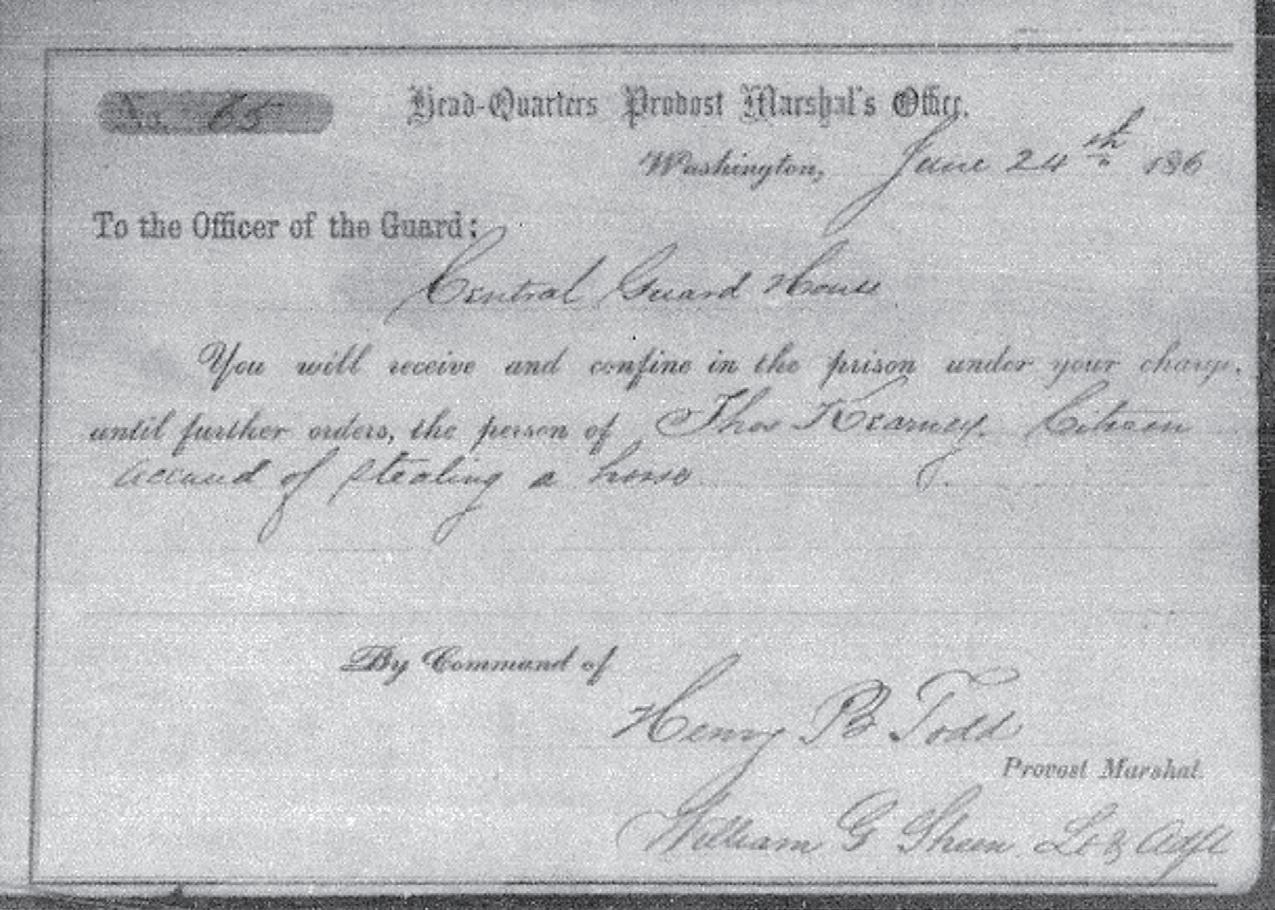
Henry Baldwin Todd (1822–82), a prewar ice manufacturer and custom house clerk, enlisted in 1861 as captain of the 1st New York Cavalry. Todd was detailed to take the onerous position of provost marshal of wartime Washington, D.C. In this post Todd arrested deserters and enforced martial law in the city. The job involved numerous interactions with a variety of shady people.
The letter below details how one such interaction led to Todd being charged with embezzling property and converting silver into a teaspoon set for this wife. The court martial found him guilty, and dismissed from the service.1
The politically-well-con-
was “not necessarily criminal.”2 Stanton thereupon reversed the decision and reinstated him.3 The conviction didn’t seem to harm Todd’s reputation and he went on to a long and prominent postwar career.
Although Todd was not a relative of Mary Todd Lincoln, his photo nonetheless was found in President Lincoln’s personal album.
Washington, Feby. 25, 1864 W. E. Doster,4
Dear Sir:
nected Todd then complained to four Congressmen (all Democrats) from his home state of New York, recounting the case as set forth below, and asking that he be allowed to resign his commission rather than be dismissed from the service.
The Congressmen duly urged Todd’s case on Secretary of War Stanton, averring that Todd was “incapable of doing the act complained of for any purpose of personal gain or emolument” and that though Todd’s conduct “may have been indiscrete,” it
Your favor of yesterday is duly received. Many thanks for your sympathy as well as your offer of assistance so frankly offered—The charge against me ostensibly is this (although I think the truth is I was too popular5 and in some one’s way).
Last May a pawnbroker named Pella [German-born John Pella (1814–72)] was arrested by the detectives of the Treasury Dept. for dealing in counterfeit Postal Currency and receiving stolen goods.6
A few days after his arrest a woman called on me and said she had some things pawned there. They were forfeited within a few days, and wished my assistance. I told her I would do what I could personally for her and sent word to Lieut. Cooper7 at the guardhouse to say to Pella if he would send me the things—12 oz. old silver and a ten stone diamond ring—I would become personally responsible for them and either see the things returned or be paid for them. Pella assented and sent the things. He was cleared in May and called for a settlement. I put him off not having again seen the woman, who was to call with the money in a few days and who gave the name of Cammak. I set the detectives to find her in vain. July 17 Pella came with his lawyer [Samuel
Simms Williams (1822–64), described in the newspapers as “a well-known local lawyer”] and demanded a settlement on my promise. I paid him for them out of my own funds and took his receipt in full for them signed by Pella and witnessed by his lawyer, a regular bill of sale. No Mrs. Cammak yet heard from or to be found. The silver was old broken silver, the ring an old one, stones loose and unsafe to wear. I had the silver cast into a set of tea spoons and the ring reset in August. Pella had the right to sell after 20 days from May 4th.
Nov. 28 Mrs. Cammak came for her things under the name of Rodriquez8 but had no money. I told her I had bought them of Pella and what I had done. She left and made complaint to the War Dept. It was referred to Genl. Martindale9 who investigated and said I had better return her the rings (the silver she did not count). I did so, gave her the ring but the $18 paid for resetting paid her the value of the old silver and recd. the balance that I had paid Pella in money and supposed the thing ended. The 12th of this month I was put under arrest for conduct unbecoming an officer and a gentleman.
This is the whole case. I am prepared to prove it and do not fear the result. Have lots of friends here who will do or die for me. I intend to be restored to my old place. If I resign the next day Baker10 is still in the office as efficient and reliable as ever, one of the best officers I ever knew. I showed him your letter. With many thanks for your kindness, I am, Your obedt. Servt.
Henry B. Todd, Captain 452 6th St.
Endnotes:
1. The trial was reported in the
Washington Evening Star, March 4, 1864. See the National Republican, April 22, 1864 for the verdict.
2. Todd’s letter to the four Congressmen, and their April 7, 1864 letter to Stanton, courtesy of Todd’s descendant Patricia Todd Pender.
3. See The Star of the North (Bloomsburg, PA), July 13, 1864.
4. Brigadier General William Emil Doster (1837–1919) was provost marshal of Washington 1862–63.
5. The Washington Evening Star, January 1, 1864, recounts how provost marshal office employees gave Todd a “handsome gold chain” in recognition of “their attachment and esteem.”
6. The arrest was reported in the Washington Evening Star, April 11, 1863. The forgery was of 50 cent postal notes, some of which were passed (inadvertently or not) by Pella.
7. Lt. John S. Cooper, 10th New Jersey, commander of the DC guardhouse.
8. The name change and the fact that the Provost Marshall’s department couldn’t locate her, led Todd to suspect her of illegal doings. In the letter to the Congressmen, Todd expressed his belief that she was “an abandoned and transient woman.”
9. General John H. Martindale (1815–81), Military Governor of Washington from 1862 to 1864.

10. Lt. Arthur S. Baker (1836–93) of the 86th New York, a pre (and post)-war newspaper editor in Hornellsville, New York

Bruce S. Allardice is Professor of History at South Suburban College in Illinois. He is a past president of the Civil War Round Table of Chicago.
Wayne L. Wolf is past president of the Lincoln-Davis Civil War Roundtable.
12 Civil War News December 2020 12 Civil War News December 2020
Capt. Henry B. Todd. Courtesy Patricia Todd Pender. Arrest order signed by Todd. National Archives.
General W. E. Doster. Wikimedia.
Deadlines for Advertising or Editorial Submissions is the 20th of each month. Email: ads@civilwarnews.com
from page 6
Battle of Manassas
By the first major battle of the war, other states had managed to get troops to Washington, but still more than one third of the Union infantry regiments participating in First Manassas were from New York. General William T. Sherman’s Brigade, made up of the 13th, 68th, and 79th New York, plus a Wisconsin regiment, suffered the most killed and wounded (328). Brigades commanded by Porter (8th, 14th, and 27th New York plus three battalions of Regulars—232 killed and wounded) and Willcox (11th and 38th New York plus two Michigan regiments—243 killed and wounded) were also among the four Union brigades suffering the highest casualties. The 71st New York was heavily involved in covering the army’s retreat and took severe casualties.
After the battle, a southern newspaper showed its delight at the reported slaughter of the regiment most associated with the first offensive of the war and the death of James Jackson, the southern hotel keeper who killed Ellsworth:
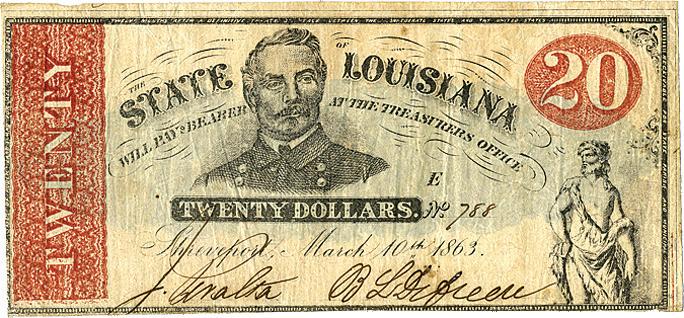
… the Zouaves of Ellsworth – have fled from the field with two hundred only left of the entire regiment. Retributive justice has overtaken the first of the enemy who put their feet on the sacred soil of Virginia, and from six to eight hundred of them have been cut down dead upon the land which they insolently dared to invade.8
Enchantress Affair
Two New York State Militia officers who were captured at Manassas played an inadvertent part in one of the war’s early dramas. When the Confederates began granting letters of marque
authorizing private ship owners to attack enemy shipping, the first privateers captured were put on trial for piracy and threatened with execution. In return, the Confederates took 14 prisoners captured at First Manassas or Ball’s Bluff and transferred them from POW facilities to prison, threatening to execute man for man in retaliation for any executions of privateers.
Two men who are mentioned in Roosa’s scrapbook, Col. Michael Corcoran of the 69th New York militia and Col. A.M. Wood of the 14th NY militia, were among these hostages. Lincoln relented and both Woods and Corcoran were eventually exchanged.
90 day terms expire/ regiments re-enlist
The 90 day regiments came home in August, were celebrated, and given parades in their hometowns. Most of the soldiers re-enlisted, the 20th en masse, and many others formed the nucleus for newly forming New York Volunteer regiments.
The “New York State Militia” designation was retired in favor of the newly mandated New York Volunteers designation. Even regiments that enlisted for three years, except the 69th, were given new designations as volunteer regiments. The New York State Militia had done its duty in the first days of the crisis but henceforward all New York infantry units would fight as volunteers. While the New York authorities could change the official designation of the regiments, they could not change the men’s hearts. All five regiments continued to show loyalty to their old regiments.
In fact, the designations even survived the end of the war. When the 80th NY (20th NYSM) was appointed to patrol Richmond at the end of the war, the captain assigned as administrator of military prisons identified himself on official documents as an officer of the 20th
New York State Militia, a unit that hadn’t existed for nearly four years.
All five NYSM regiments in the Army of the Potomac fought hard at Gettysburg. The 14th was in the first infantry division to arrive and was part of the bloody attack on the unfinished railroad cut. The 9th fought July 1 on Oak Ridge. The 20th was literally the second regiment from the army’s left flank on the afternoon of July 1, and on July 3, along with the 2, helped crush the right flank of Pickett’s Division.
When the time came to erect monuments at Gettysburg, all four regiments who had their number changed paid tribute to their old NYSM units.

Casualties
The most definitive postwar study of Union army casualties9 concluded that the clearest identifier of “hard fighting regiments” was the number killed and mortally wounded in battle. Precisely 300 (of more than 2,000) Union regiments had more than 100 killed and mortally wounded, including all NYSM regiments that re-enlisted:
69th NYSM (69th NY Vols.): 259 killed and mortally wounded (KMW). Its principal casualties
were incurred at the Seven Days battles, Antietam, Fredericksburg;
• 20th NYSM (80th NY Vols.): 128
KMW. Its principal battles were 2nd Manassas and Gettysburg;

• 2nd NYSM (82nd NY Vols.): 181
KMW. Its major fights were 1st Manassas, Antietam, and Gettysburg;
• 9th NYSM (83rd NY Vols.):
156 KMW. Principal battles: Fredericksburg, Wilderness, and Spotsylvania;
• 14th NYSM (84th NY Vols.):
162 KMW. Principal battles: 1st Manassas, 2nd Manassas, and Gettysburg;

79th NYSM (79th NY Vols.)
Principal battles: Major battles
First Manassas, James Island, S.C. 119 KMM.
NYSM After the 90 Days



Once volunteer forces replaced the militia units in the active forces, the NY militia resumed its normal duties of organizing reserve forces ready to be activated in an emergency. These regiments were called to active duty several times. On May 21, 1862, 12 regiments (8,500 men) were called up to defend against a feared invasion after the Union defeat at Winchester. An even larger force of 26 regiments was activated in June 1863, to deal with Lee’s
invasion.
Finally, a large force was called out the following month to quell the New York City draft riots.
Endnotes:




1. Hiram Roosa’s scrapbook contains original correspondence, including Anderson’s letter from Fort Sumter to Roosa, thanking him for the association’s support.

2. One regimental commander, Col. Michael Corcoran of the 69th New York, had been removed from command and threatened with court martial when he refused to parade the 69th for the Prince of Wales as a protest against English oppression of Ireland. He was restored to his command when the mobilization started.
3. “The ‘Seventh’ at Home, Full Account of the Visit to Washington, Parade and Review by the President and Cabinet,” New York Daily Herald, July 12, 1858.


4. Theodore Winthrop, “Our March to Washington,” Atlantic Magazine, July 1861.
5. Fayetteville North Carolinian, April 27, 1861.
6. John Austin Stevens, The Union Defence Committee of the City of New York: Minutes, Reports, and Correspondence with a Historical Introduction.

7. Adam Goodheart, “In Death, a Young Author Is Born,” June 19,






13 December 2020 Civil War News 13 December 2020 Civil War News Greg Ton • P.O. Box 9 • Franklin, TN 37065 901-487-5944 • GTon1@aol.com Greg Ton Buying and Selling the Finest Confederate, Obsolete and Southern States Currency Since 1978 GregTonCurrency.com
. . . . . . . . . .
H Scrapbook
Confederate 25 cent bill sent to Roosa by Col. A. M. Wood, 14th NYSM.
In Tuesday’s paper the editors wrote of the “signal victory” achieved two days before. As the Confederates withdrew westward, into and over the mountains, they suffered “a shameful and overwhelming defeat.” The threat was ended. The editors believed that the enemy could not avoid “utter annihilation, or, at best, the virtual surrender of his position.”

History’s First Draft –The Maryland Campaign as it Happened
How fast did the news travel?
How accurate were the reports in the press? What did Northern readers know during the middle of September 1862, as Lee’s forces marched from place to place in western Maryland, and McClellan followed, in the days leading up to the great battle of September 17? What did they know, in the days that followed, of the battle and its aftermath?
We can read any number of books and articles about the Maryland Campaign and the Battle of Antietam, or Sharpsburg, written decades after the events. Historians have been able to study official reports, memoirs, correspondence and other sources, sift through the data, and craft comprehensive and comprehensible accounts of these events.

That is now. How about then, as these events were unfolding? To find out, I picked a daily, the Philadelphia Press, and examined several issues. Most of what follows comes from the editions published from Monday, September 15 to Saturday, September 20. In this column I will try to answer three
questions. What did the readers know? When did they know it? What did they know that wasn’t so?
The August 28-30 Confederate victory at Second Manassas, or Bull Run, opened the way for Lee’s invasion of Maryland. However, the early reports in the Press presented the action on the old 1861 battleground as a resounding Federal victory.
Well, this was something the readers knew that just wasn’t so. Soon the Philadelphia paper was writing that Lee had crossed the Potomac and was marching about in the Old Line State; that Pope had been sent west to battle the Sioux; and that McClellan, back in charge in the East, was pursuing Lee. Let’s now look at the news the week of the battle.
Monday, September 15
By Monday, Pennsylvanians were well aware that Lee was in Maryland in force and that their own state was threatened. The bank headlines on page one of that day’s edition summarized the situation. The main rebel army was at Boonsboro, Md.; Confederate pickets extended to the Pennsylvania border; Longstreet and 10,000 men were at Hagerstown; a four-hour battle had been fought south of Hagerstown; and Jackson was
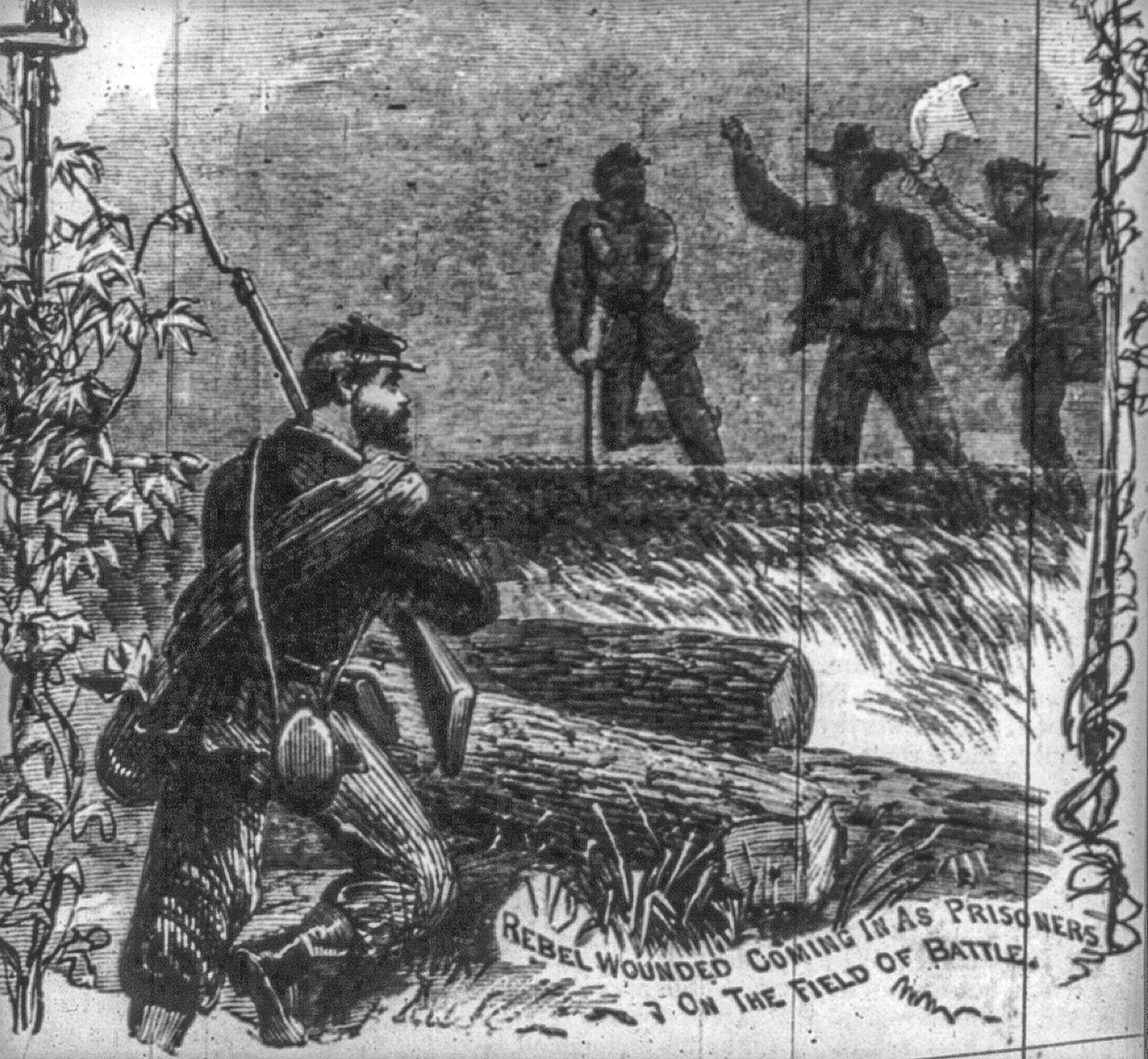
GEORGIA’S CONFEDERATE MONUMENTS

In Honor of a Fallen Nation
Gould B. Hagler, Jr.

This unique work contains a complete photographic record of Georgia’s memorials to the Confederacy, a full transcription of the words engraved upon them, and carefully-researched information about the monuments and the organizations which built them. These works of art and their eloquent inscriptions express a nation’s profound grief, praise the soldiers’ bravery and patriotism, and pay homage to the cause for which they fought.
www.mupress.org
866-895-1472 toll-free
get the bad news that Harpers Ferry had fallen on the 15th. Wednesday’s edition also contained more details about South Mountain, with varying estimates of casualties on both sides.
at Williamsport with a force of 16,000.
As was always the case in this era, the editors relied on dispatches written at different places and times. The news conveyed on Monday was based on six dispatches, the earliest sent from Chambersburg the previous Friday and the most recent from Harrisburg at 11 p.m. on Saturday.
The Monday paper also ran an article taken from the Saturday Baltimore American, which reported a Confederate attack on Harpers Ferry that was “repulsed with great slaughter.” According to this account, the effort to force a crossing of the Potomac by Confederate cavalry and infantry was broken by “grape and canister, causing the river actually to run with blood.”
Of course, by the time Philadelphians read their Monday paper Harpers Ferry had already surrendered.
Tuesday, September 16
The Sunday battle was the Battle of South Mountain. After a day of hard fighting, the Confederates were forced to withdraw from the gaps and move westward. The Federals had achieved a victory, but it was far from the decisive triumph announced by the Press on Tuesday. The editors relied on McClellan’s dispatches to Halleck, printed in the same edition. In a Sunday night dispatch McClellan proclaimed “a glorious victory.” On Monday morning he assured the general-in-chief that Lee’s force was “making for the river in a perfect panic” and that Lee had admitted that his troops had been “shockingly whipped.” In a second dispatch that morning McClellan wrote “It is stated that General Lee gives his losses at 15,000.”
Three brief dispatches in Tuesday’s edition hinted that the garrison at Harpers Ferry was in serious danger.
Wednesday,
September 17
As the opposing armies battled along Antietam Creek, Philadelphia readers could
One report on South Mountain included news of a chance discovery in an abandoned Confederate camp near Frederick. In small print, just above a casualty list, was the news that Lee’s Special Order No. 191 (misnamed as No. 119 in the paper) had been found by Union troops. This was the famous “Lost Order” detailing the movements of Lee’s dangerously divided army. McClellan was now armed with the knowledge of Lee’s bold plan. Philadelphia readers knew also, as the Press quietly summarized Lee’s plan. Every edition of the Press contained a column in which the editors attempted to digest the flood of news and create some order for the reader, surely confused by the contradictory dispatches appearing in news columns. On Wednesday, the editors’ digest presented South Mountain as a decisive Federal victory that would force the Confederates out of Maryland. “That they are recrossing the Potomac is certain, and, indeed by the time this meets the reader’s eye not a single rebel regiment may be in Maryland.” Lee’s army, the editors said, was a “demoralized mass…in full retreat.” Further down, however, the editors mentioned a report “that a battle was going on yesterday near Sharpsburg, Maryland. This
14 Civil War News December 2020 14 Civil War News December 2020
Philadelphia’s The Press newspaper masthead.
Reminiscences of the Maryland campaign—Rebel wounded coming in as prisoners on the field of battle. Both images courtesy Library of Congress.
President Lincoln posed with Union officers and soldiers during his visit to Antietam, Oct. 3, 1862.
looks as if McClellan was pushing the enemy hard to the river.”
The editors were right about the armies meeting at Sharpsburg, but a fierce battle would be fought before the Confederate retreat began.
Thursday, September 18
The Thursday edition contained the usual jumble of dispatches reporting on various matters related to the Maryland Campaign. Any reader would be mightily confused. The editors provided the usual summary, context, and interpretation. “Reports from the Army of the Potomac last night cover nothing but success….. Lee’s army, large as it is, will certainly be annihilated before it can get back to Richmond.”
A dispatch printed on Thursday erroneously reported that the Federals had reoccupied Harpers Ferry on Tuesday at 7 p.m. Relying on this false information; the editors opined that Federals’ possession of that point “almost precludes the possibility of the fording of the Potomac by the rebels.”

The big news on Thursday was the battle at Sharpsburg. Several dispatches (sent on Wednesday) reported on Tuesday’s fighting, mainly an artillery battle as the armies readied for the main event. Dispatches sent Wednesday night provided some information on the main fight that day: “The battle has continued all day today, but no official news has yet been received of its results,” one correspondent wrote. Another dispatch claimed “a glorious victory after a great battle.” This report noted that “no particulars of the battle have yet been received” but this much was known: “the carnage on both sides was
awful.” In addition to the news, there was also the usual optimistic speculation: a report from Hagerstown assured the readers that “the entire rebel army will be captured or killed.”
Friday, September 19
Friday’s paper provided more detail on Wednesday’s combat. Two dispatches from the Army of the Potomac headquarters, sent Tuesday night and Wednesday, described the action on those two days. These dispatches were accurate, but naturally they accentuated the positive. The Wednesday dispatch did imply that the victory was incomplete. After Burnside’s force crossed the bridge and ascended the hill, “our troops were forced to retire before a superior force, the rebels knowing that if they lost the ridge the complete rout of their army would be the result. They fought with great desperation.” The army’s dispatch estimated that each side suffered about 10,000 casualties.
The Press, a Democratic paper, was full of high praise for General McClellan. The editors’ summary commented on the “magnificent victory” achieved on Tuesday and Wednesday and predicted more victories as McClellan’s army “gather[s] up all its energies afresh to smite the audacious enemy.”
Saturday, September 20
On Saturday the Press ran a dispatch printed earlier in the New York Tribune. Through this dispatch, written on Wednesday night, Philadelphia’s readers got an accurate summary of the battle. The dispatch described the positions of the armies at day’s end, with the one road open for the Confederates’ retreat.
The assessment of the results: “Neither [side] can claim a complete victory….”
The editors’ summary displayed the usual optimism. McClellan, having won this great victory, “has completely changed the aspect of affairs in the north from gloom and uncertainty to cheerfulness and brightened hope.” The Press magnified McClellan’s achievement by exaggerating Confederate strength, claiming that on Wednesday he had “fought an enemy numerically equal to his own.” Still, the editors understood that as great as McClellan’s victory was, its strategic result was still in doubt. Would Lee’s army be annihilated or captured? The editors said “it is impossible to know.”
Another dispatch in Saturday’s paper must have arrived too late for the editors to take into account as they penned their summary. This dispatch, sent from Frederick on the 19th, said that Lee had gotten away. The correspondent seemed to anticipate the severe criticism that was about to come McClellan’s way, and began to make excuses for him. On the 18th, the reader was told McClellan was about to launch an attack on the Confederate left, “when it was discovered that the enemy were apparently posted on our right in some force, and threatening a flanking movement.” The perspicacious general “saw the ruse, and at once changed front,” thus checking the Confederate threat.
The correspondent put an interesting slant on the Confederates’ escape. Having crossed the river, they “were driven off…in the direction of Winchester.” A careful reader would note that the driving off was done by artillery north of
the stream, not by infantry nipping at Lee’s heels.
Lee was certainly appreciative of McClellan’s cautious disposition. Lincoln was not. McClellan failed to follow up his victory as his commander-in-chief wished. He was relieved of command on November 6.
A review of the Philadelphia Press in the days before and after the climactic battle at Sharpsburg indicates that readers in the North, at least those with access to daily newspapers in major cities, had information on the Maryland Campaign that was reasonably up-to-date.
As for accuracy, we need to repeat and stress the adjective “reasonably.” The correspondents often relayed news gleaned from questionable sources. I get the impression that the reader was implicitly told “take it for what it’s worth.” Lee was reported to be wounded; Longstreet to be killed; Hill to be captured (which Hill not specified). The Press also published wild overestimates of Confederate strength.
These limitations notwithstanding, an attentive reader could stay abreast of developments during the week and by Saturday read a coherent narrative of Wednesday’s battle.
Sources: The Philadelphia Press and much else can be accessed at https://panewsarchive.psu.edu/. My thanks to Stephen Davis and Bill Hendrick for allowing me to see the pertinent passages in their upcoming book which shed light on history’s first draft as read by Atlantans.
Philadelphia is 175 miles or so from Sharpsburg. What about a town in the Confederacy 650 miles away from the action? How long did it take the news to travel to Atlanta? How accurate was the story Atlantans were reading?
In their upcoming book The Atlanta Daily Intelligencer
Covers the Civil War, Stephen Davis and Bill Hendrick address these questions. As one would expect, the news Atlantans read was less up-to-date, less detailed, and less accurate than the first draft of history read by Philadelphians.
The first of Lee’s forces to enter Maryland crossed the Potomac on September 4. The Intelligencer reported this news on September 13. On September 17, as Georgia troops were defending the crossing at the Rohrbach Bridge, the Intelligencer’s editor wrote that he had no reliable information on developments in Maryland and that he would not print mere rumors.
News of the September 14 fighting at South Mountain reached Atlantans on the 20th. The paper reported the capture of Harpers Ferry on September 21, six days after the event. Also on the 21st, the Intelligencer published Lee’s September 8 proclamation to the people of Maryland.
The September 23rd edition contained a telegraphic dispatch about the battle fought on the 17th. The report announced a victory in that bloody clash, and, with even less accuracy, claimed that the enemy was routed when the fighting renewed the next day.
On September 24 the paper referred to a troubling report that Lee was back in Virginia. Ten days after the battle the editor repeated the claim of a Confederate victory and, with no apparent basis but wishful thinking, stated that Lee was still in Maryland, after Lee had been south of the river for five days.
For a detailed report on the Battle of Sharpsburg, Atlanta readers had to wait until the 28th. This came in a dispatch written just hours after the battle ended. It reported the repulse of the Federals. There was nothing on the retreat, of course, and no commentary on the earlier report of the rout said to have occurred on the 18th.
Civil War Artillery Book
Civil War Artillery Projectiles
– The Half Shell Book. This hardbound book has 392 pages, and is full-color with 850 photographs. For more information and how to order visit the website www. ArtillerymanMagazine.com or call 800-777-1862.
$89.95 + $8 media mail for the standard edition.
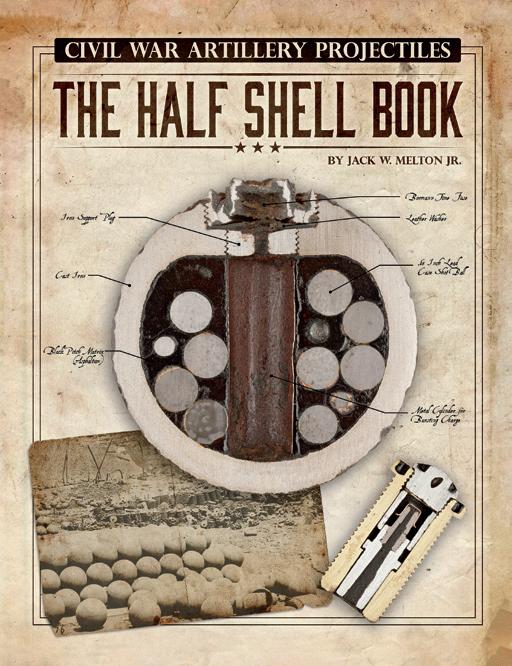
15 December 2020 Civil War News 15 December 2020 Civil War News
Barbara Fritchie’s home, Frederick, Md. Library of Congress.
Uniform of a Stonewall Brigade soldier killed at First Manassas



 by Shannon Pritchard
by Shannon Pritchard
The history associated with this uniform starts generations before it was made. For our purposes here, we will begin with Captain Fielden Hale of eighteenth century Franklin County, Va. The earlier Captain Hale fought at Kings Mountain and Guilford Courthouse during the American Revolution. He was a contemporary of Nathan Hale of “I only regret that I have but one life to give for my country” fame. Whether he was related to the hero I do not know. He raised six sons, all of whom fought in the War of 1812; at least one did not return. His son, Captain Louis Hale Sr. and his wife settled on what was probably a land bounty in Elk Creek, Va., in what is now Grayson County. In the following years of peace and plenty Elizabeth Bourne Hale bore a son prophetically named Peyton Nathan Hale, after the famous revolutionary Hale. As if by a familial curse, this Hale was to die a no less heroic death for his country in the Second War for Independence, than his namesake in the first.
By 1861 the Hale family was one of the most prominent in their section of Virginia, and when 35 year old Peyton called for volunteers to defend Virginia from invasion, the response was overwhelming. That section of Virginia had been settled by Revolutionary War veterans, and their offspring proved worthy of their sires. So many men volunteered that a shooting match was devised to sift the men. The men were required to shoot at a target 100 yards away while at a dead run; the best one hundred shots were selected to be members of the “Grayson Dare Devils.”
The men enlisted on April 24, 1861, with Nathan Peyton Hale Jr. as captain.
Almost immediately the men left for Richmond. They made such a striking appearance that newspapers from Ohio to Texas carried an account of their travels. This allows us to track their movements very closely. The May 4, 1861, edition of the Macon Telegraph writes:
“The Richmond Whig publishes the following extract from a letter received by a gentleman
from Lynchburg. With Whig, we share in the mortification expressed by the writer. “We were all much mortified today at the return of the Grayson Dare Devils–they numbered 100 precicely, all picked and unfailing rifle shots, and the finest looking body of men I ever saw. The services of such men ought never be rejected. I am told they shed tears at the Junction, [Manassas] when met with a dispatch ordering them to return. The state could not furnish them with arms; they were willing to fight to get them if they had to do it with rocks. Without intending to disparage any, I must say I never before saw, in one body, of more efficient looking men for war purposes, and I am very much mistaken if they cannot whip any four hundred Yankees that could be sent against them.”
Following this timeline, the men enlisted on April 24th and had already reached Manassas before being turned back, prior to May 5. This did not deter them long; they quickly armed themselves and returned to the front within a month. The June
5 edition of the Dallas [Texas] Weekly Herald, quoting the New York Day Book, described the “Famous Grayson Dare Devils” thus:
The “Grayson Dare Devils”, a company of mountaniers, all six feet high and terrible marksmen came in on Friday. These hardy and reckless backwoodsmen are picturesquely attired in blue shirts, red caps and black pants. Each man carries his own rifle and bowie knife, both of which he has used since boyhood. They are the same creatures I
wrote you about long ago, who, while at rifle practice shoot at when running. They look with undisguised contempt on an individual who is obliged to stand still in order to bore the bull’s eye.
The Dare Devils were armed and ready for service, but notice that in this early June article the men are described as being uniformed in their own unique way. A few days later, during the same month, June 1861, Confederate uniform regulations calling for a “light grey blouse, double
16 Civil War News December 2020 16 Civil War News December 2020
Front and back of Captain Hale’s uniform. All photos courtesy OldSouthAntiques.com.
Note the course homespun material and plain brass buttons.
Captain Hale’s homespun cap is adorned with a brass 4, acquired after the “Grayson Dare Devils” became part of Stonewall Jackson’s 4th Virginia Infantry.
breasted, with two rows of small buttons, seven in each row, and a small turn-over collar” Also for grey forage caps “similar in form to those known as the French Kepi” were issued.
Having armed themselves to the teeth they now found that their uniforms did not follow newly issued Confederate regulations. They wasted no time in correcting this; also notice that the uniform Captain Hale was wearing on July 21, 1861, follows the regulations very closely, especially when you consider that the uniform drawings we are familiar with today were not yet in existence. It was not only Captain Hale’s uniform, photographs of at least two other Dare Devils exist, and they wear the same style frock and pants with a stripe down the legs. So it is reasonable to assume the entire company was attired thus. Rather than being militia uniform this is actually an early
Confederate regulation enlisted man’s uniform.
The Grayson men assembled in Winchester, Va., with men from the counties of Wythe, Montgomery, Pulaski, Smyth, Grayson, and Rockbridge, and were designated the 4th Virginia Infantry. The Fourth was brigaded with the 2nd, 5th, 27th and 33rd Virginia regiments under General Thomas Jonathan Jackson.
The men of the Grayson Dare Devils had worked tirelessly in order to get to the front and prove themselves worthy of their sires. Their diligence placed them at a point in history to secure their fame forever. The scene was recorded by many, but here I quote excerpts from J.B. Caddall’s memoir of the 4th Virginia Infantry entitled:
The Original Rebel Yell Editor of The Times-Dispatch:

SIR,–In forming his line of battle at first Manassas Jackson placed the 4th Virginia Infantry, under Colonel James F. Preston, in rear of his artillery as an immediate support, and the 27th Virginia Infantry, under Lieutenant-Colonel John Echols, in close order directly behind the 4th. The two regiments, except without the line of the 4th, were larger than the 29th, on account of its larger numbers, appeared as one body, four ranks deep. To the left of those two regiments, and almost at a right angle, was the 5th Virginia, under Colonel Kenton Harper, and to their left in the woods, were the 2d Virginia, under Colonel James W. Allen (who was afterwards killed at Gaines’ Mill) and then the 33d Virginia, under Colonel Arthur Cummings, constituted the left flank of the brigade.
At about 3 o’clock the enemy had pushed forward a strong column of infantry and artillery, and had arrived in close proximity of Jackson’s left flank near the Henry House. At this time the men of the 4th Regiment were lying flat on their faces on the ground in the rear of the battery to escape the heavy artillery fire of the enemy.
When the critical juncture came, Jackson galloped to the right of the Fourth Virginia, called for Colonel Preston, told him in a few sharp words to “or der the men behind, up,” and to “charge and drive them to Washington!” We were called to attention and ordered for ward on the double-quick, and on an oblique move to the left over a stake and brush fence, through a skirt of pines and sub ject to a heavy fire of musketry. In a very few minutes we were in close contact with the ranks of the enemy of which a very conspicuous body was a Zouave Regiment from New York, with highly decorated uniforms, consisting of loosely fitting red breeches, blue blouses, with Turkish tassel as headgear.
Jackson’s men rushed at them, with fixed bayonets, every man yelling at the top of his voice. Here was the origin of the “Rebel yell,” which afterwards became so conspicuous in later battles of the Army of Northern Virginia. The men fired as rapidly as they could load their old smoothbore muskets, and in a few min utes the Confederates were in full possession of that part of the field, and a fine battery of field artillery, Ricketts, which was in position near the Henry House, was captured.
During the charge the flagstaff was shot in two, the color-bearer immediately repairing the

damage by lashing a bayonet over the break and proceeded with the regiment in the charge.
The charge of Jackson’s brigade on that day turned the tide of battle, which to that time had seemed against the Confederates, and in a short time there was not to be seen an organized body of Federals south of Bull Run, but their forces were in rapid retreat toward Washington.
The cost had been high; many brave boys fell to rise no more, among the fallen was the brave captain of the Grayson Dare Devils, Peyton Nathan Hale. Hale’s uniform coat is extremely heavy and hot; it had been laid aside that hot July day and so was not injured by the blow that took his life. His wound was on his right side as determined by the blood which ran down and through his trousers’ waist band.
Captain Hale had gone to battle in a plain enlisted man’s uniform, while at home loved ones had made a new Captain’s uniform for him. He was lovingly dressed in his new uniform and laid to
rest at home in Grayson County in the Summerfield United Methodist Church’s cemetery.
Captain Hale had stepped bravely into his ancestor’s and his namesake’s shoes and had filled them ably.
His uniform was made by a skilled tailor or seamstress as evidenced by the boot cut hem and the use of a selvedge edge to make the stripes incorporated in the trousers. His coat has false pocket flaps on the hips and genuine pockets in the tails. All the buttons are two piece, brass with a central star. While studying the coat I found remnants of tobacco in the pocket. The cap has a large, brass four fastened to the crown with wire hooks. The remnants of a makers label is pasted inside the cap’s top, indicating it was commercially made.

Shannon Pritchard has authored numerous articles relating to the authentication, care and conservation of Confederate antiques,

17 December 2020 Civil War News 17 December 2020 Civil War News
Note where the acids in Hale’s blood continued to eat the lining of his trousers for years afterward.
This shows the damage done to Hale’s trousers by the ball that killed him.
Newspaper Navigator
and change the portion in bold: https://newsnavigator.labs. loc.gov/prepackaged/1864_images.zip.


While researching this article using this link, up popped
https://news-navigator.labs. loc.gov/prepackaged/1861_ photos.zip
https://news-navigator.labs. loc.gov/prepackaged/1861_illustrations.zip
https://news-navigator.labs. loc.gov/prepackaged/1861_illustrations.zip
https://news-navigator.labs. loc.gov/prepackaged/1861_ comics.zip
https://news-navigator.labs. loc.gov/prepackaged/1861_cartoons.zip

1862
https://news-navigator.labs. loc.gov/prepackaged/1862_ maps.zip
https://news-navigator.labs. loc.gov/prepackaged/1862_ photos.zip
prepackaged/1863_photos.zip
https://news-navigator.labs. loc.gov/prepackaged/1863_illustrations.zip
https://news-navigator.labs. loc.gov/prepackaged/1863_illustrations.zip
https://news-navigator.labs. loc.gov/prepackaged/1863_ comics.zip
https://news-navigator.labs. loc.gov/prepackaged/1863_cartoons.zip
1864
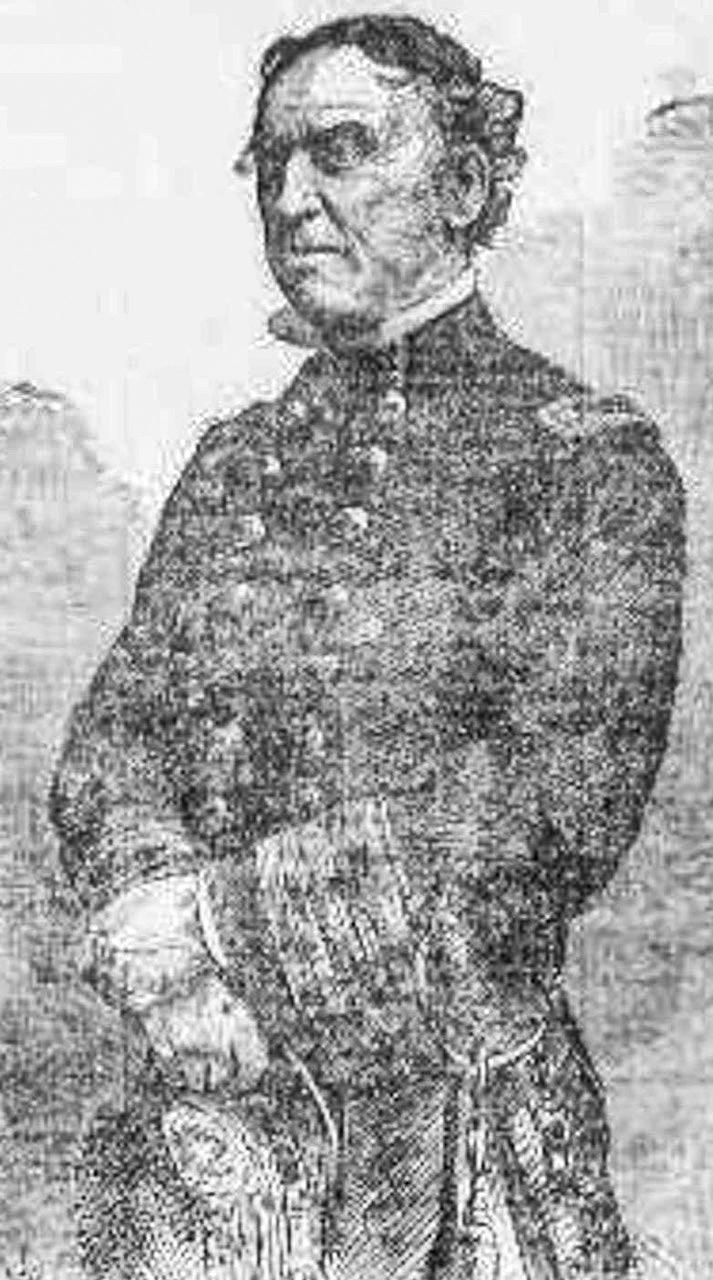
https://news-navigator.labs. loc.gov/prepackaged/1864_ maps.zip
https://news-navigator.labs. loc.gov/prepackaged/1864_ photos.zip
Kudos to Ben Lee and the staff at the Library of Congress, including all their wonderful volunteers in the Beyond Words crowdsourcing project, for developing an incredibly helpful tool to quickly search Civil Warera newspapers (and newspapers from other periods in our history)! As of late October, 1.56 million images from 16,358,041 newspaper pages populate the database. The Library of Congress continues its work in populating the Navigator with additional data, but a goldmine already awaits those researching the American Civil War. This writer will not pretend to understand the technology behind this fantastic tool. Still, thanks to Ben, who kindly provided this non-technology guru with preprogrammed datasets, hopefully, each reader will take the time to unlock the awaiting treasures. Begin your planning, and one will need to spend a little time mapping a search strategy at https://news-navigator.labs.loc. gov. Again, thanks to Ben, we can quickly turn the flanks of the technology defense in using what he terms “Pre-Packaged Datasets.” Before we look at the possibilities, the following represent the categories one can
search: photos, illustrations, maps, cartoons, and comics. For this exercise, let us focus on maps and photographs (check out the comics as time permits). The datasets Ben provided work as follows. For example, if seeking maps from 1861, enter https://news-navigator.labs.loc. gov/prepackaged/1861_maps. zip into your browser and download a .zip file containing many images. One word of caution, most of these files prove quite large, so perhaps one will enjoy a better user experience on a desktop/laptop versus a mobile device.


Thanks to Ben for explaining things, so even this historian could understand! To search for a different year and or search for something other than maps, follow this process. Let us look at the previous link: https:// news-navigator.labs.loc.gov/ prepackaged/1861_maps.zip
(hyperlink removed for explanation clarity). The standard part of the URL for various searches remains https://news-navigator.labs.loc.gov/prepackaged/; tweak the final part of the link to obtain different results. For example, if your research leads to images of individuals from, say 1864, start with the base URL
the “Damn the torpedoes!” man himself.
Below, one will find listed all the possible searches from 1861–1865. These links remain active, so if you subscribe to the electronic edition of Civil War News, click and enjoy!
Pre-Packaged Civil War Era Datasets
1861
https://news-navigator.labs. loc.gov/prepackaged/1861_ maps.zip
https://news-navigator.labs. loc.gov/prepackaged/1862_illustrations.zip
https://news-navigator.labs. loc.gov/prepackaged/1862_illustrations.zip
https://news-navigator.labs. loc.gov/prepackaged/1862_ comics.zip
https://news-navigator.labs. loc.gov/prepackaged/1862_cartoons.zip
1863
https://news-navigator.labs. loc.gov/prepackaged/1863_ maps.zip
https://news-navigator.labs.loc.gov/
https://news-navigator.labs. loc.gov/prepackaged/1864_illustrations.zip
https://news-navigator.labs. loc.gov/prepackaged/1864_illustrations.zip
https://news-navigator.labs. loc.gov/prepackaged/1864_ comics.zip
https://news-navigator.labs. loc.gov/prepackaged/1864_cartoons.zip
1865
https://news-navigator.labs. loc.gov/prepackaged/1865_ maps.zip
https://news-navigator.labs. loc.gov/prepackaged/1865_ photos.zip
https://news-navigator.labs. loc.gov/prepackaged/1865_illustrations.zip
https://news-navigator.labs. loc.gov/prepackaged/1865_illustrations.zip
https://news-navigator.labs. loc.gov/prepackaged/1865_ comics.zip
https://news-navigator.labs. loc.gov/prepackaged/1865_cartoons.zip
Identifying Sources
The procedure to identify the various images’ source proves Excel screenshot.
18 Civil War News December 2020 18 Civil War News December 2020
Map from 1864.
Opened .zip folder.
Admiral David Farragut
Sheridan’s Victory Map.
a bit more challenging for the non-tech folks (writer included). Trying to simplify things a bit, for any of the links provided above, open the .zip file to list view, choose the image (Farragut), as shown above. Then select and copy the filename (the number 186412201 may actually repeat for a number of images, but the full name should be unique). Now, return to the original link, again in this example, https:// news-navigator.labs.loc.gov/ prepackaged/1864_photos. zip. Change the extension from .zip to .csv, creating https:// news-navigator.labs.loc.gov/ prepackaged/1864_photos. csv, click, and an Excel spread sheet will download. Open the spreadsheet, and search for the name from above.



even read about Sheridan’s adventures in Virginia and enjoy the map, which accompanied the story.
Stay abreast of Ben’s latest work at https://github. com/LibraryOfCongress/

CHARLESTON IN THE WAR
CHARLESTON IN THE WAR


newspaper-navigator, and continued good luck in your research!
Michael K. Shaffer is a Civil War historian, author, lecturer, instructor, and a member of the Society of Civil War Historians, the Historians
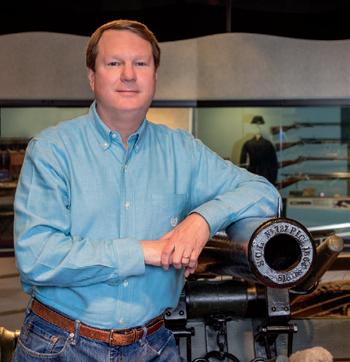

Your results will look some thing like this Excel screenshot, showing the URL to Farragut’s image, plus the publication date, name, and location of the news paper. This writer ‘hid’ many spreadsheet columns, providing a picture illustrating the information most important to historians. For those not particularly interested in determining the sources, you can skip the section after Identifying Sources. Try your skills in utilizing this tremendous source! You

19 December 2020 Civil War News 19 December 2020 Civil War News
may 100 Signi cant Civil War Photographs: Charleston in the War features newly restored images of scenes in the famed city, taken 1860–1865. e cameramen include the better-known, such as George N. Barnard and George S. Cook, as well as some lesser-known ones: Samuel Cooley, Charles Quinby, the partners Haas & Peale, Osborn & Durbec. Text by Stephen Davis and Jack Melton accompanies each featured photograph, describing the pictured scenes and the history surrounding them. e selected images depict a variety of settings: that portion of Charleston known as e Battery, the “Burnt District” (the area of the city destroyed by the Great Fire of December 1861), the Charleston Arsenal, and the many churches that allow Charlestonians to call theirs “the Holy City.” Special sections of this book are devoted to the huge Blakely guns imported from England by the Confederates and close-ups of Barnard’s views. e history of Civil War Charleston goes back to e Defense of Charleston Harbor (1890) by John Johnson, Confederate major of engineers, and to Reminiscences of Forts Sumter and Moultrie in 1860-’61 (1876) by Capt. Abner Doubleday, Federal second-in-command. Since then Charlestonians have contributed to the history of their city, notably Robert N. Rosen and Richard W. Hatcher III. e historical text surrounding 100 Signi cant Photographs draws on these and other works. A unique feature is its reliance upon the writings of actual participants, such as Augustine T. Smythe (1842–1914) and Emma Edwards Holmes (1838–1910). As a contribution to this literature, 100 Signi cant Civil War Photographs: Charleston in the War o ers rewards for all readers, from the casual novice to the serious student.
DAVIS & MELTON 100 SIGNIFICANT CIVIL WAR PHOTOGRAPHS CHARLESTON IN THE WAR 100 Signi cant Civil War Photographs: Charleston in the War features newly restored images of scenes in the famed city, taken 1860–1865. The cameramen include the better-known, such as George N. Barnard and George S. Cook, as well as some lesser-known ones: Samuel Cooley, Charles Quinby, the partners Haas & Peale, Osborn & Durbec. Text by Stephen Davis and Jack Melton accompanies each featured photograph, describing the pictured scenes and the history surrounding them. The selected images depict a variety of settings: that portion of Charleston known as The Battery, the “Burnt District” (the area of the city destroyed by the Great Fire of December 1861), the Charleston Arsenal, and the many churches that allow Charlestonians to call theirs “the Holy City.” Special sections of this book are devoted to the huge Blakely guns imported from England by the Confederates and close-ups of Barnard’s views. The history of Civil War Charleston goes back to The Defense of Charleston Harbor (1890) by John Johnson, Confederate major of engineers, and to Reminiscences of Forts Sumter and Moultrie in 1860-’61 (1876) by Capt. Abner Doubleday, Federal second-in-command. Since then Charlestonians have contributed to the history of their city, notably Robert N. Rosen and Richard W. Hatcher III. The historical text surrounding 100 Signi cant Photographs draws on these and other works. A unique feature is its reliance upon the writings of actual participants, such as Augustine T. Smythe (1842–1914) and Emma Edwards Holmes (1838–1910). As a contribution to this literature, 100 Signi cant Civil War Photographs: Charleston in the War o ers rewards for all readers, from the casual novice to the serious student. Stephen Davis JACK W. MELTON JR.
160 pages, Over 100 Photos, Maps, Index, Bibliography, Softcover. ISBN: 978-1-61850-167-7 $19.95 + 3.50 S&H Order online at www.HistoricalPubs.com or call 800-777-1862 Publishers: Please send your book(s) for review to: Civil War News 520 Folly Road, Suite 25 PMB 379 Charleston, SC 29412 Email cover image to bookreviews@civilwarnews.com.
Slow Pete The Knoxville Campaign – Part II

“Every day of delay added to the strength of the enemy’s breastworks” – C.S. Col. Edward Porter Alexander
After the November 16, 1863, Battle of Campbell’s Station, Tenn., U.S. Gen. Ambrose Burnside’s Army of the Ohio retreated sixteen miles to Knoxville. The battle was part of a plan to distract C.S. Gen. James “Old Pete” Longstreet while Ulysses S. Grant, in Nashville, prepared for the Battle of Missionary Ridge, Tenn.

U.S. Chief Engineer Capt. Orlando Poe was swiftly building Knoxville’s defenses but needed more time. Poe had teamed up with his West Point classmate and close friend, recently promoted Gen. William P. Sanders in coming up with aggressive cavalry tactics. Burnside would affectionally call the pair “hotheads.”


On Nov. 17, Poe told Burnside he needed until noon on Nov. 18 to finish his defensive preparations. “The citizens of the town and all contrabands within reach were pressed into service and relieved the almost exhausted soldiers, who had no rest for more than a hundred hours,” to complete the defenses. At daylight on Nov. 18, Sanders’s 600 men moved out one mile from Knoxville’s outskirts to delay the Confederate approach.
The shooting began about 10 a.m. as the fog lifted. C.S. Gen. Lafayette McLaws Division infantry “opened a vigorous fire with musketry, which was
returned with equal vigor.” The severe skirmishing lasted until noon, “and then for an hour or more the firing nearly ceased, and the two lines lay there watching each other.” Instead of withdrawing, Sanders held the line to give Poe more time to “complete the defenses of the city.”
The Confederates moved up four pieces of artillery and opened fire at 1:30 p.m. For two hours the Federals were pinned down, helpless under Rebel fire. At 3:30 p.m. the Confederates repeatedly charged and were repulsed. C.S. Col. Edward Porter Alexander, Sanders’s West Point roommate, installed sharpshooters inside the brick Armstrong home’s tower. During the fight Sanders rallied his men by walking the fence line, exposing himself to the enemy’s fire. About 4 p.m., from the tower came the shot that mortally wounded Sanders. The Federal line collapsed; Sanders was carried to the Lamar House, where he died in the bridal suite.
Both sides had supply issues as the “Siege of Knoxville” began. The Federals were inadequately supplied by a single wagon trail through Cumberland Gap. The Confederates began the Knoxville Campaign on short rations. They scoured the countryside for food, “swapped” shoes with Federal POWs and, for their animals, salvaged shoes from dead horses. Still, Longstreet believed the lack of supplies would oblige the Federals to surrender in two weeks.
While Longstreet looked for a chink in the Federal defenses, the Confederates encircled the town and dug in using captured shovels. On Nov. 21, Alexander
was ordered to ready 34 cannons to bombard the Union redoubt. On Nov. 24, Longstreet canceled the attack when he learned Generals Bushrod Johnson and Archibald Gracie Jr., with 2,600 men were on route to reinforce him. On the evening of Nov. 25, C.S. Gen. Danville Leadbetter arrived. The engineer had designed the Knoxville defenses when it was under Confederate control. Longstreet and Leadbetter spent two days searching for the weak spot in Knoxville’s defenses.
On Nov. 27, Longstreet, Leadbetter, McLaws, Alexander, and other brigade commanders walked the field and turned their attention to a fort named for the fallen general. Fort Sanders “boasted of eight-foot earthen walls fronted with a twelvefoot ditch. A broad stream bed 120 yards away would provide cover for an approaching army.” But the men were uncertain as to the width and depth of the ditch. “As we were looking we saw a soldier mount the parapet to come out across the ditch to the picket line. Longstreet examined & fixed his glasses on him, &, as he walked across the ditch, he said, ‘The ditch catches him to his waist.’” It would later be realized that the man must have crossed on a plank, but it was agreed, Sanders would be the target.
Rain canceled the attack on Nov. 28. Meanwhile, McLaws sent word that “a serious engagement” had happened at Chattanooga, Tenn. McLaws recommended delaying the assault until the outcome became known. Longstreet replied, “… It is a great mistake to suppose that there is any safety for us in going to Virginia if General Bragg has been defeated, for
we leave him at the mercy of his victors, and with his army destroyed our own had better be, for we will be not only destroyed, but disgraced. There is neither safety nor honor in any other course than the one I have chosen and ordered.”

On Nov. 29, it would be 4,000 Confederates vs. 200 Federals. The Confederates crossed over frozen ground, through rain and

20 Civil War News December 2020 20 Civil War News December 2020
Colonels Orlando M. Poe & Orville E. Babcock at Fort Sanders, Knoxville, Tenn. Colorization © 2020 civilwarincolor.com courtesy civilwarincolor.com/cwn. Library of Congress.
Maj. General L. McLaws. Colorization © 2020 civilwarincolor. com courtesy civilwarincolor.com/cwn. Library of Congress.
snow, then waded the creek to get into position 120 yards from the fort. Protecting Sanders were rifle pits, telegraph wire strung as entanglements, an abatis, and traverses had been built to protect the guns and allow passing from one position to another. Inside the fort, Lt. Samuel Benjamin, 2nd U.S. Artillery, positioned four 20-pounder Parrott rifles, four light 12-pounder smoothbores, and two 3-inch rifles.
On the signal, three of McLaws’s brigades led the bayonet charge. Federals firing at point blank range did not slow their advance. Next, the Confederates were falling to the ground, entangled in the wires. Within minutes men were leaping into the 8-foot ditch and being trapped with an almost vertical ice wall rising sixteen feet above them. The 79th New York Highlanders were firing down, “literally tearing the poor fellows limb from limb.” Benjamin had prepared 20-pdr. shells with 20 second fuses that were also tossed into the ditch. Some Rebels climbed the dead bodies to reach the top. “One gallant young officer, Adjutant Cumming, from Augusta, Georgia, leaped through an embrasure and instantly demanded the surrender of fort and garrison. The Union troops cheered the feat while making him a prisoner of war.”



According to Benjamin, “The whole affair lasted fully three-quarters of an hour, and the actual fight at the ditch and on the parapet over twenty minutes.” After the battle, when Longstreet received word that Grant won the Battle of Missionary Ridge, he left Knoxville for winter quarters. Longstreet’s soldiers would dub him “Peter the slow.”




Inside the fort, one weary Irish prisoner took out his pipe,


reached for a light, and said wryly to his captured mates: “Bedad, boys, General Longstreet said we would be in Knoxville for breakfast this morning; and so some of us are!”

Sources:
• Longstreet, James. From Manassas to Appomattox Memoirs of The Civil War in America. New York: J. B. Lippincott, 1895.
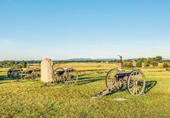
Official Records of the Union and Confederate Armies in the War of the Rebellion, Series 1, Part 1, Vol. XXXI. Pp. 341- 344.





• Wert, Jeffry D. General James Longstreet: The Confederacy’s Most Controversial Soldier: A Biography. New York: Simon & Schuster, 1993. Markel, Joan L “The Battle Of Eastern Tennessee Turns Into A Futile Attack,” American Battlefield Trust’s Hallowed Ground Magazine, Fall 2013.

• Sorrel, Gilbert Moxley. Recollections Of A Confederate Staff Officer. The Neale Publishing Company, 1917.
• Korn, Jerry, and the Editors
of Time-Life Books. The Fight for Chattanooga: Chickamauga to Missionary Ridge. Alexandria, VA: TimeLife Books, 1985.
• Todd, William. The Seventyninth Highlanders, New York Volunteers in the War of Rebellion: Press of Brandow, Barton & Co.,
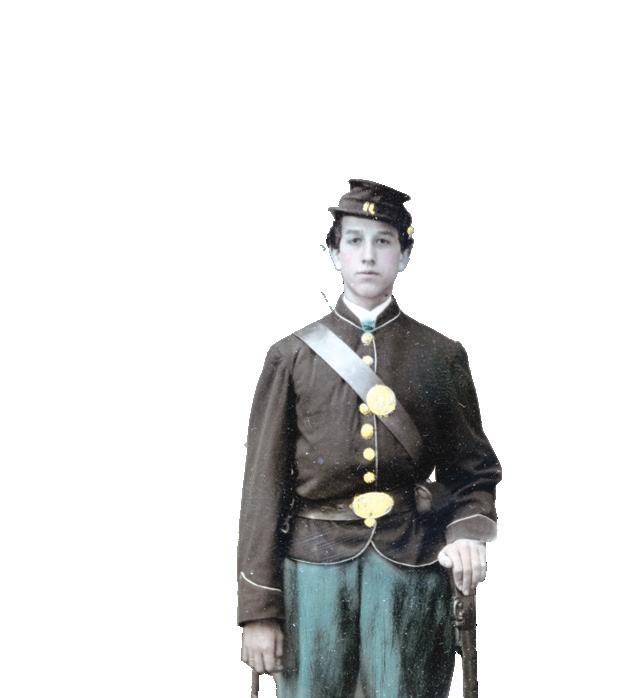
21 December 2020 Civil War News 21 December 2020 Civil War News For information: Call (770) 362-8671 or (716) 574-0465 Email: anita@ americandigger.com Both shows Open to Public: Saturday: 9-5 Sunday: 9-3 Dealer Setup: Friday 1-7 PM Saturday 7-9 AM americandigger.com/american-digger-events/ Omar Shrine Temple 176 Patriots Point Rd. Mt Pleasant, SC January 2-3, 2021 Lowcountry Antique Militaria & Americana Show July 24-25, 2021 Camp Jordan Arena 323 Camp Jordan Pkwy. East Ridge, TN Chattanooga Antique Militaria & Americana Show Swords & Knives • Antique Firearms Dug & Non-dug Relics • Civilian Items & Jewelry Bottles & Stone Artifacts Art, Photos, & Books • Militaria & Americana All Eras to WWII • Metal Detectors Awards & Prizes Both shows feature all this and more: Display!Trade! Buy!Sell! AAABBB AAABBB American Digger Magazine now hosts two great shows annually! Historical Publications, LLC Civil War News • 800-777-1862 520 Folly Road, Suite 25 PMB 379 Charleston, SC 29412 www.CIVILWARNEWS.com UP-TO-DATE COVERAGE • PRESERVATION NEWS • BOOK REVIEWS SHOWS, LIVING HISTORY AND REENACTMENTS • HISTORICAL ARTICLES MONTHLY COLUMNS • CALENDAR OF EVENTS STAY INFORMED! Only $38.50/One Year • $66.00/ Two Years THE MONTHLY CURRENT EVENTS NEWSPAPER -FORCIVIL WAR ENTHUSIASTS SINCE 1974 12 ISSUES PER YEAR PRINT & DIGITAL EDITIONS AVAILABLE CALL OR SUBSCRIBE ONLINE TODAY! 2018 CW N Vol. America’s Monthly Newspaper Civil War Enthusiasts Civil 48,000 states! County Civil War Trust’s Path to Preservation CW N Vol. 44, 48 2018 $3.50 Civil War News Monthly Newspaper Civil War Enthusiasts Holzer page Dancing Inside Appraiser ARMS! BordonaroPenn.— Many soldiers death, has cottagetaking these though,would ballroomthemselvesing called ghosts 1890’sGettysburgenjoyorganizers theGettysburg, Louis,largest held Conference this heldnot additional accompanying photos Hotel Dancing the Night Away at the Gettysburg Hotel Jeff motion Lincoln Scholar Harold Holzer’s Oration at the 154th Anniversary of the Gettysburg Address Gettysburg this statuewith arm Proclamation,uniqueAfrican colormonumentmay character To above Critics frommemory.groundstatuecrisis—now above spot. that nationsculpturewhen, ignitedwasengaged reckoning some historiansremoved,hour, countlessmemory itself. controversial when Lincoln INSIDE EVERY ISSUE Publishers/Authors Send your book(s) for review to: Civil War News 520 Folly Road, Suite 25 PMB 379 Charleston, SC 29412 bookreviews@civilwarnews.com Digital Issues of CWN are available by subscription alone or with print plus CWN archives at CivilWarNews.com Deadline for submissions is the 20th of each month. Email: ads@civilwarnews.com
by Larry Babits, Josh Howard, Matt Brenckle
This column follows up on Joe Bilby’s mentioning buck shot at Gettysburg (October CWN) so we decided to provide some additional outstanding details. This article looks at American buckshot use before and during the War.
On Gettysburg’s third day, General Pettigrew’s old North Carolina brigade came up against the “inner angle” during the climax of the big charge. Behind the stone wall was Smyth’s Brigade that included the 10th New York, partially armed with .69 smoothbores, and the 12th New Jersey known as the “Buck & Ball Regiment” (Thomas 1981:61; 1997:104).
“The regiment was armed with the Springfield smoothbore musket, caliber. 69–a terrible weapon at close range. The usual cartridge carried a large ball and three buckshot, but many of the men, while awaiting the enemy’s advance, had opened their boxes and prepared special cartridges of from ten to twenty-five buckshot alone.... I doubt whether anywhere upon that field a more destructive fire was encountered than at the proper time blazed forth from its front” (Potter cited in Thomas 1997:104). The volley struck home when Pettigrew’s men were “within 40 yards,” or “fifty yards from the stone wall,” halfway to the inner angle’s wall (Wragg 2000:181, 196), and a “moan went up from the field, distinctly to be heard amid the roar of the battle, but on they went, too much enveloped in smoke and dust now to permit us to distinguish their lines of movement, for the mass
More on Buckshot
appeared more like a cloud of moving smoke and dust than a column of troops” (Sawyer 1881:131).
As Joe pointed out, buckshot has been used for some time. He also noted that multiple loads, including extra and cut musket balls have been as well. Since as early as 1607 when Samuel Champlain fired his arquebus at Iroquois using four balls, shooters have continued to work at ensuring their shot counted. Archaeological finds include Jamestown, Va., where a man was, perhaps, accidentally shot with a bird, buck, and ball load prior to 1620. In 1760, Hugh Waddell’s North Carolina provincial militia helped repel an attack on Fort Dobbs by unleashing a surprise volley with seven buckshot and a round ball at a range inside 30 paces. That’s close range, but it is not all about a close engagement.

The most famous Civil War unit using the Model 1842 with buck and ball was the Union’s Irish Brigade. General Thomas Meagher wanted his men to fire at close range and then follow it up with a bayonet charge.
At Sharpsburg (I’m taking a Southron focus here), the Irish Brigade fought Confederate regiments armed with rifled muskets. One regiment of the Irish Brigade, the 28th Massachusetts was armed with Enfield Rifles, but the other four still had their .69 caliber smoothbores at Gettysburg (Thomas 1981:60).
From the Sunken Lane, the defenders opened up at 50 yards and the Irish Brigade took heavy casualties. At 50 yards, traditional thinking says the Irish were too far away to charge an alert, competent, and unbroken

enemy while they were at the effective long range fringe of their own weapons. While the Irish inflicted casualties, they were unable to drive the Confederates away and eventually ran out of ammunition.
Their percussion ignited .69 caliber smoothbores might
have been marginally more accurate for the big round ball but the light weight, .31 caliber buckshot tended to scatter. On top of that, the Irish were firing downhill and people firing downhill tend to fire over their target. Consequently, much of the Irish buckshot seems to



have sailed over Confederates in the Bloody Lane. For whatever reason, a large amount of buckshot, nearly one third of the fired shot found in the Piper Orchard, was buck and ball, presumably from the Irish Brigade (Sterling 2000:339-340). Overshooting might thus be seen as a better reason for the Irish Brigade’s lack of success, but the piles of bodies in the lane say some of their shot hit home, along with that of other units using rifled weapons.
Given our received wisdom, the distances here are instructive. Fighting with what was basically an 18th century weapon, the Irish Brigade could not inflict enough casualties to demoralize their opponents. A 50 yard charge against rifled weaponry was not feasible. The Confederates were hurt but not routed. The Irish Brigade ran out of ammunition and had to be relieved.
The Confederates also found buck and ball effective as reported by the Third North Carolina’s Colonel William L. DeRosset’s account of the regiment’s engagement with the 11th and 12th Pennsylvania Reserves, who noted our regiment’s “smooth bore muskets with the buck and ball cartridge did most excellent service being at very close quarters not over 100 yards from the first line of Yankees” (Armstrong 2016:74-75). The 11th and 12th Pennsylvania Reserves were facing the Third but their casualty total is a caution on the effectiveness of buck and ball. At Sharpsburg, the Eleventh had 7 killed and 17 wounded while the Twelfth suffered 13 killed and 47 wounded, plus 4 missing (Sypher 1865:392). The Pennsylvanians were in small regiments, about 200 men, and had been steadily worn down with similar losses at Second Manassas and South Mountain (Sypher 1865:357, 374).
Engaged multiple times at Sharpsburg, the Third lost 46 killed and 207 wounded of their 547 officers and men (Carman 2012:II:595,607). The Pennsylvania regiments had already engaged the 1st Texas, coincidently with buck and ball (Carman 2012:II:102; Sypher 1865:382), then advanced halfway into the Cornfield, gotten disordered, and when struck one at a time by the Third, fell back (Carman 21012:II:108). The two Union regiments, in the confusion of being enfiladed
22 Civil War News December 2020 22 Civil War News December 2020
15 yard target.
30 yard target.
35 yard target.
while their visibility was limited, may have been threatened by the wide frontage the North Carolina regiment presented that exceeded their combined numbers. The Third then drove off the inexperienced 128th Pennsylvania from close range (Carman 2012:II:122,124).
This documentary information is pretty interesting but how does buck and ball actually strike home? There is a general feeling that buckshot was
not “useful” outside 25-30 yards. We roughly tested some ideas about shooting buck and ball in 2005 comparing the Brown Bess, Charleville, and 1842 smoothbores, firing off hand with one experienced shooter and two with no prior experience firing live ammunition. No wadding was used other than a cleaning patch on top of the buckshot to keep it from rolling out. The round ball went in on top of the powder, then the buckshot.
The buckshot was .36 caliber because there is evidence that Revolutionary War Southern militia, especially Marion’s partisans, used larger buckshot, but the ready availability of the .36 caliber shot was a major contributing factor.

As expected, there were
infantry formation was calculated at 20-24 inches of frontage per man (Gibbon 1970:54). The vertical distance was seen as the torso’s center of mass. Obviously this early test did not accurately represent a linear formation because any shot deviating from the center line would not be recorded but other men would have been standing to either side. Shot that went lower or flew a bit high could also hit a soldier in ranks. The heavier .36 caliber buckshot also may have flown truer than buckshot more typically used in .69 and .75 caliber weaponry.
To correct for deficiencies noted in this firing, a bigger target, standardized cartridges, and longer ranges were used. A reproduction Model 1842 was selected as the weapon because the percussion ignition would not require priming from the cartridge, thus ensuring less variation in the powder charge and a possible lessening of force due to the flintlock’s open touchhole.
The buck and ball cartridges were furnished by Jefferson Arsenal (TheJeffersonArsenal@ hotmail.com). 240-409-2566. 2829 Fry Road, Jefferson, MD 21755. They made up cartridges with one .662 round ball and three .311 buckshot. Three buckshot fit in the .69 M1842 (or a Charleville) barrel without unwrapping. In a similar fashion, the larger .30-32 shot fit into a .75 Brown Bess. Having the cartridges made up by one firm ensured some standardization.

Five shots were fired at five yard intervals from 15 to 100 yards. The shooter fired from a seated position. Bench shots were chosen to ensure regularity of aiming and less movement during the firing process. The musket was charged with 60 grains, FF powder first, then the round ball, followed by the buckshot without patch but still wrapped in the cartridge paper. The paper may have helped remove some powder fouling.
more hits at the shorter ranges. For comparison with combat against a battle line, these results were somewhat misleading because the target was 20 inches wide by 32 inches high. These measurements were dictated by readily available paper stock and knowledge that a linear
There were actually two targets during the 2020 test firing. The larger brown cardboard was six feet wide, or 3 men shoulder to shoulder, and 6' 2" feet high. A 23 inch wide white band down the target’s center line represented a single individual in a battle line, allowed better aiming, and showed more clearly where bullets struck. The target stood about three inches off the ground on the target frame footing.


Hits were also recorded as “center man hits” by tracing the outline of a 5' 6" by 24 inch wide soldier centered on the

23 December 2020 Civil War News 23 December 2020 Civil War News
50 yard target.
75 yard target.
100 yard target.
Buck and Ball Cartridge and contents. Courtesy Jefferson Arsenal.
Fired buck and ball. Note one buckshot still in wrapper (top left) recovered at 85 yards.
Table 1
Projectile Hits
Loyal Legion of the Confederacy
CSA National Defense Medals & other banned internet items Civil
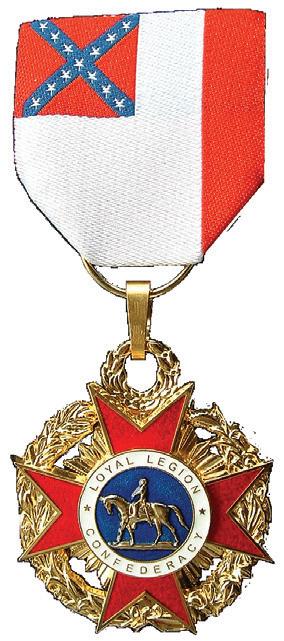
1 Smithbridge Rd., Unit 61, Chester Heights, PA 19017
aiming point (Duane 1810:75). All round balls that did not hit the silhouette would have hit a similar figure to the right or left, as did most buckshot.
Some shot that went high between the simulated heads of the front rank individuals would have hit a soldier making ready to fire between the two front rank men but would have missed if the line was not in the make ready or fire positions. Projectiles that did not hit the wider, taller brown cardboard target were counted as flyers.
Using the wider, taller target made an important distinction for identifying where buckshot hit. Firing seated also probably improved accuracy but the number of buckshot hits recorded was definitely much higher, despite using the smaller (.31), lighter buckshot. Unexpectedly, the round balls were still striking the silhouette at 100 yards. Comparing the 2005 results with what we learned in 2020 was interesting.
Inferences
The larger round ball hit within the central outline of a soldier more than half the time (53/90, 58.8%) and most were in the torso suggesting a debilitating, if not mortal, wound. On the wider target, almost all round balls hit within the zone representing a three man front rank (85/90, 94%). Buckshot that struck the silhouette’s arms or legs, or to either side of the central silhouette, would have generated some wounds that would have
severely injured the soldier, especially those in the lower torso or legs. Buckshot that struck the head was capable of penetrating bone and thus badly hurting the victim if damage to the target frame is any indication.
Conclusions
Whether the distance between the 12th New Jersey and Pettigrew’s old brigade led by Colonel John Marshall, was 40 or 50 yards is immaterial. At either range, buck and ball is lethally effective. Even at 70 yards, round balls hit the central silhouette outline 40% of the time while the buckshot dropped dramatically to 10%. The wider target showed that, at 70 yards, all five round balls hit torsos and more than a third of the buckshot did as well. As part of a single coordinated volley that created “a slaughter pen” (Wragg 2000:196), the shock effect drew commentary from veterans.
The 12th New Jersey had approximately 400 officers and men. Underestimating that total, at least 325 soldiers fired their buck and ball charges with one round ball and 12-15 buckshot, they unleashed over 4200 projectiles into the faces of about 900 men advancing in Pettigrew’s Brigade. This buck and ball study indicates that there were almost five projectiles for any man approaching the Inner Angle. Still, they recovered, formed something of a line, fired back, and small groups charged, some crossed the stone wall into the area behind the

Outer Angle. The buck and ball volley wreaked horrible damage but did not stop them. That happened when additional volleys continued the devastation.
Without any doubt, then, in the words of an 1846 treatise, the smoothbore M1842 “is now all it has been, and in some points much improved…In the hands of one who has studied its properties, [it] will throw a ball with an accuracy that would surprise a large portion of those who are in the habit of using it” (Bosworth cited in Haecker and Mauck 1997:68).
The authors would like to acknowledge the cooperation of the Pitt County Wildlife Club, Greenville, NC, whilst conducting the shooting trials. They are grateful for the assistance of Mike Burkey, Les Jensen, Dean Nelson, and Charles Haecker.
References Cited
Armstrong, Marion V. Jr.
2016 Opposing the Second Corps at Antietam. University of Alabama Press, Tuscaloosa.
Carman, Ezra A.
2012 The Maryland Campaign of September 1862 Vol. II: Antietam. Edited by Thomas G. Clemens, Savas Beatie, El Dorado Hills, CA.
Duane, William 1810 Military Dictionary. Philadelphia.
Gibbon, John.
1970 The Artillerist’s Manual Benchmark Press, Glendale, New York (originally published New York, 1860).
Haecker, Charles M., and Jeffrey G. Mauck
1997 On the Prairie of Palo Alto. Texas A&M University Press, College Station.
Sawyer, Franklin
1881 A Military History of the 8th Regiment Ohio Volunteer Infantry. Cleveland, Ohio.
Sterling, Bruce B.
2000 Archaeological Interpretations of the Battle of Antietam through Analysis of Small Arms Projectiles. In Archaeological Perspectives on the American Civil War edited by Clarence R. Geier and Stephen R. Potter, pp. 323-346. University Press of Florida, Gainesville, FL.
Sypher, J. R.
1865 History of the Pennsylvania Reserves. Elias Barr & Company, Lancaster, PA.
Thomas, Dean S.
1997 Round Ball to Rimfire – A History of Civil War Small Arms Ammunition. Thomas Publications, Gettysburg, PA.
1981 Ready ... aim ... fire! Small Arms Ammunition in the Battle of Gettysburg. Osborn Printing Co, Biglerville, PA.
Wragg, Rod
2000 Covered with Glory The 26th North Carolina Infantry at Gettysburg. Harper Collins, New York.
About the Authors Larry Babits is a semi-retired battlefield archaeologist and currently the Editor-in-Chief for Civil War News. He shoots, less competitively today, with the First Maryland. Josh Howard is a self-employed historical researcher. A former Civil War reenactor, he has co-authored Revolutionary War books on the North Carolina Continental Line and the Battle of Guilford Courthouse. Matthew Brenckle holds degrees in archeology and maritime history from Brown University and East Carolina University. For twelve
24 Civil War News December 2020 24 Civil War News December 2020
War Recreations WWW.CWMEDALS.COM cwmedals@yahoo.com
Range Silhouette Hits Wide Target Hits Narrow Target Hits 1 shooter 2020 (includes silhouette) (two shooters in 2005) Yards Ball Buckshot Ball Buckshot Ball Buckshot 15 5 15 5 15 10 30 20 5 15 5 15 10 30 25 5 14 5 15 10 30 30 5 11 5 14 10 27 35 5 8 5 14 10 30 40 3 7 5 14 10 18 45 4 7 5 13 10 15 50 2 6 5 13 10 11 55 5 6 5 15 Not Fired 60 2 5 5 12 “ 65 2 3 5 11 “ 70 2 3 5 11 “ 75 2 6 5 8 80 2 1 4 11 85 1 5 4 10 90 1 5 4 8 95 2 2 4 7 100 0 3 4 9 N= 53/90 122/270 85/90 200/270 Digital Issues of CWN are available by subscription alone or with print plus CWN archives at CivilWarNews.com Want To Advertise In Civil War News? Email us at: ads@civilwarnews.com






Fort Fisher Contact Mike at: 910-617-0333 • mike@admci.com Items Wanted! Provenance a Must 48 E. Patrick St., Frederick, MD. 301-695-1864 / civilwarmed.org Divided by Conflict. United by Compassion. REINFORCEMENTS MAKE ALL THE DIFFERENCE!!! Nobody even comes close to building a Civil War tent with as much attention to reinforcing the stress areas as Panther. Our extra heavy duty reinforcing is just one of the added features that makes Panther tentage the best you can buy! PANTHER Catalog - $2 Web: www.pantherprimitives.com 160 pages of the best selection of historical reenactment items from Medieval era to Civil War era. Includes over 60 pages on our famous tents and a 4-color section. Your $2 cost is refundable with your first order. SEND for copy TODAY The Best Tents in History P.O. Box 32N Normantown WV 25267 (304) 462-7718
The Graphic War highlights prints and printmakers from the Civil War discussing their meaning and the print maker or artist’s goals.
Currier and Ives published two similar lithographs of the notorious abolitionist John Brown. In October 1859 Brown and a gang of antislavery fanatics attacked the U.S. Armory at Harpers Ferry, Virginia. The “raid” was squelched by Colonel Robert E. Lee, along with future noted figures of the Civil


War, Stonewall Jackson and Jeb Stuart. Supposedly John Wilkes Booth was in the crowd and witnessed Brown’s execution. Ten raiders were killed; six others, along with Brown, were captured; five escaped and were never captured. Six civilians including two slaves and one free African-American were killed. One U.S. Marine was killed and one wounded. Brown was taken to the Charles Town courthouse for trial and, in less than two months, he was tried, convicted, and hanged. At
the December 2 hanging, Brown was prohibited any last words but he managed to write a few comments slipped to his jailer. The remaining six raiders were executed on December 16, and March 16, 1860.
Almost immediately, Brown, his men, and his rash, ill-prepared raid became contentious. In his official report, Lee branded Brown as “a fanatic or madman.”1
To this day, Brown remains a controversial figure as he and his band of raiders became the center of raging debate. Was he a man sent from God to liberate the black man or was he a dangerous, deranged fanatic as Robert E. Lee portrayed him?

During the war, the lithographic publishing firm of Currier and Ives firmly came down on the side of those who saw Brown as an avenging angel. In May 1863, the firm published a small folio black and white print complete with overdrawn melodramatic figures. It depicted Brown leaving jail on his way to the gallows. The title margin, consisting of five lines, explained it all: “John Brown.” “Meeting the
Slave mother and her Child on the Steps of Charlestown jail on his way to execution.” “The artist has represented Capt. Brown regarding with a look of compassion a Slave mother and Child who obstructed/the passage on his way to the scaffold. Capt. Brown stooped and kissed the Child…then met his fate.” “From the original painting by Louis Ransom.” The original painting of “John Brown on His Way to Execution” is owned by Oberlin College. It now hangs in the Paul Lawrence Dunbar High School in Washington, D.C., having been lent to the school by the college in April, 1919.2
According to the Library of Congress catalogue entry, “The strikingly Madonna-like slave woman is seated on a stone railing, holding an equally Christlike infant. One of Brown’s guards reaches forward, about to push
26 Civil War News December 2020 26 Civil War News December 2020
John Brown
John Brown. Circa December 12, 1859 photographers James Wallace Black (1825–1896), Martin M. Lawrence (1808–1859). Black & Batchelder, copyright claimants. Library of Congress.
John Brown the Martyr. Library of Congress. Library of Congress.
her away. In the foreground a mustachioed and elegantly uniformed soldier waits impatiently, hand on his sword hilt. Behind Brown a figure from the American Revolution, wearing a tricornered hat emblazoned ‘76,’ watches with concern. The flag of the state of Virginia with the motto ‘Sic semper tyrannis’ flies prominently above Brown’s head. A statue of Justice, with its arms and scales broken, stands forgotten behind the railing at left.” Perhaps the most outrageous image presented by artist Ransom is the scowling, Prussian looking military figure to the right of the tableau. His presence, obviously to denote authority, smacks of a European operatic/comedic farce that would have proven unworthy of Gilbert and Sullivan.3

Yet it is this image (with the slave mother and child) that survived to grace Currier and Ives second iteration of the scene. In the later, ca. 1870 lithograph, Currier has removed all but those four figures, which are set now in a religious tableau. The scowling “Prussian” officer has moved his right arm up and with a pointed finger (the fickle finger of fate?) indicates the direction of the scaffold as Brown contemplates the slaves at his feet. Currier left no doubt about its intention. The firm reduced

the lines in the title margin down to two, and altered the main title to simply “John Brown—The Martyr.”
Endnotes:
1. Col. Robert E. Lee. “Report to the Adjutant General Concerning the Attack at Harper’s Ferry.” Reproduced in Linder, Douglas O. Famous Trials. University of MissouriKansas City School of Law
2. Ms. minutes of the Prudential committee of Oberlin College, April 11, 1919, office of the secretary. This title was furnished by the painter’s son, Eugene Ransom. see James C. Malin, “The John Brown Legend in Pictures,” The Kansas Historical Quarterly, v. VIII (November, 1939), pp. 339341. As cited on the website: https://www.kshs.org/p/kan-
sas-historical-quarterly-ransom-s-john-brown-painting/12845.
3. https://tile.loc.gov/storage-services/service/pnp/ pga/09200/09212v.jpg.
After 43 years in the museum field, Salvatore Cilella devotes his time collecting American prints and maps and writing. His last professional position was President and CEO of the Atlanta History Center. His most recent books are Upton’s Regulars: A History of the 121st New York Volunteers in the Civil War (U. Press Kansas, 2009). His two-volume Correspondence of Major General Emory Upton, (U. of Tennessee Press, 2017), received the 2017-–2018 American Civil War Museum’s Founders Award for outstanding editing of primary source materials. His latest book “Till Death Do Us Part,” an edit of
27 December 2020
News 27 December 2020 Civil War News
Civil War
“John Brown. Meeting the Slave-mother and her Child on the steps of Charleston jail on his way to be executed.” Library of Congress.
A Tribute to Edwin C. Bearss: Champion of West Virginia Battlefields

 by Hunter Lesser
by Hunter Lesser
Edwin Cole Bearss, legendary battlefield guide and preservationist, Chief Historian Emeritus of the National Park Service, and decorated Marine veteran of World War II, passed away on September 15, 2020, at age 97. See battlefields.org for a marvelous eulogy to his amazing life.
As NPS Chief Historian and a board member of what is now the American Battlefield Trust, Ed was a tireless advocate for battlefield preservation nationwide. He played a key role in preserving numerous properties in West Virginia, including Rich Mountain Battlefield. Ed supported efforts by the fledgling Rich Mountain Battlefield Foundation, ensuring this important site would be protected for the ages.
Ed was a masterful interpreter and spellbinding battlefield guide. He believed you had to walk a battlefield to understand it. His deep, raspy voice and dramatic style were unforgettable, aptly described by one reviewer as “Homeric monologues.” Ed kept a breakneck schedule into
his 90’s, on the road for some 200 days a year, with a huge following of loyal fans, the Bearss Brigade.
I was fortunate to be Ed’s “color man” on a number of West Virginia battlefield tours. A few anecdotes might best describe the magic of this “Pied Piper” of history:


Ever the Marine, Ed was indefatigable. Once he drove through the night to lead a tour early the next morning. Dismissing our concerns, he replied, “I’m running on adrenaline!” Even later in life, Ed enjoyed racing up steep terrain to the historic “high ground” while leading tours. He eyed his younger guests impatiently as they huffed and puffed to keep up at battlefields like Rich Mountain, Kessler’s Cross Lanes, Greenbrier River, and Camp Allegheny. Pointing out features with his ever-present swagger stick, Ed used the ground to drive home his colorful narratives.
One day as our tour bus bounced to a halt at Valley Mountain in Pocahontas County, Ed jumped out and began to

narrate the events of Robert E. Lee’s first Civil War campaign. Weather played a prominent role in the story. It happened to be raining as we got off the bus, and everyone sported rain gear or umbrellas. Not Ed. Standing in the cold rain, clad in a cotton t-shirt, he began to spin the tale.


“It was raining harder than this in 1861,” Ed rasped while relating the non-stop rain, the sickness, and failure of Lee’s campaign. “Much harder than this!”
As Ed continued, the rain got heavier. He was soaking wet, but in no hurry. Soon the storm became a downpour. Ed wore a “Rich Mountain Battlefield” cap, which flattened on his head from the pummeling rain. Finally, with a gleam in his eye, Ed boomed: “NOW it’s raining like it did in 1861!”
The haunting landscape at Camp Allegheny made that mountaintop stronghold one of Ed’s favorite Civil War battlefields, “and I’ve seen most of them,” he added with a wink. During the Congressionally appointed Civil War Sites Advisory Commission tour in the 1990’s, I helped Ed guide a busload of distinguished historians, dignitaries, and Washington staffers to various West Virginia battlefields. One spring day, as the bus climbed U.S. Rt. 250 to the intersection of a gravel road that led to Camp Allegheny, we discovered three inches of freshly fallen snow! Tree branches hung ominously in the narrow roadway, giving it the look of a tunnel.
The bus driver would go no further. The beltway staffers balked as well. We were stymied. I knew Ed desperately wanted that group to see Camp Allegheny, as did I. Seated behind the driver, Ed turned to the rear and looked at me, seated beside historian James McPherson of Princeton. He rasped: “How far is it to Camp Allegheny?”
“Less than two miles,” I answered cheerfully. Ed repeated loudly to the group; “Hunter says it’s less than two miles.”
“Is it a good road, Hunter?”
“A gravel forest road with good base,” was my reply. Ed cried out, “Hunter says it’s a good road!”
“Do you think we can make it, Hunter?” Ah, the crux of the



Ed Bearss spoke to the Civil War Round Table of Atlanta on October 14, 2008. President Barbara Long presents him an Honorary Member plaque. matter. “Yes, I replied warily, thinking of the repercussions if the bus slid off the mountain, “if we take it slowly.”

“Hunter says we can make it!
Ed bellowed, “LET’S GO!” And we did. Camp Allegheny figured prominently in their report to Congress. When you visit an historic
28 Civil War News December 2020 28 Civil War News December 2020
THE FINEST HISTORICAL ANTIQUE MILITARIA
Markert info@csacquisitions.com 16905 Nash Road • Dewitt, Virginia 23840 804-536-6413 • 804-469-7362
Wallace
www.csacquisitions.com
Subscribe at CivilWarNews.com
Rousing Rendition of an Abolitionist Legend
Reviewed by Robert Murray

The Good Lord Bird is a new Showtime mini-series centered on the life of John Brown, told through the eyes of Little Onion (Henry Shackleford), a young black man played by newcomer Joshua Caleb Johnson. Little Onion joins Brown’s anti-slavery crusade disguised as a girl. Excuse me? Trust me; it all makes sense in the first few minutes. The series is based on James McBride’s 2013 novel that won the National Book Award for fiction. The film series was created by star Ethan Hawke..
Race issues proliferate throughout each episode, as you would expect of a series covering Brown’s escapades from 1857 Kansas to 1859 Harpers Ferry. Gender issues come into play in both humorous and thought-provoking ways, particularly when Onion works in a Pikesville, Mo., brothel. However, what should really intrigue the readers of this publication is the accurate history depicted in an over-the-top fashion.

First, there is Brown himself,
in all his zealous, fire-breathing glory, raiding Pikesville with singular fury. Interspersed with this violent nature is a caring man who feels passionately about his cause and his God, sometimes to the chagrin of his eldest son Owen. To say Hawke makes John Brown his own is an understatement; this is a dream acting assignment for him. J.E.B. Stuart and Captain Henry Pate both make appearances in Kansas during the first episode; ironically the two men will die together in far off Virginia at the Battle of Yellow Tavern.
Pate plays the part of a combatant in the Battle of Black Jack, a contest some historians say was the first battle of the Civil War, and which is portrayed comically due to Brown’s religious theatrics and lack of military acumen. On a more serious note, Reverend Martin White, a real figure in Bleeding Kansas, kills Brown’s son Frederick in cold blood, and it is interesting to see the grief Brown struggles with as he stubbornly continues his crusade against slavery. Finally, there is the depiction of Frederick Douglass, amplified
by the love triangle he clearly displays to Brown and Onion in his Rochester, N.Y., home. Ottilie Assing, a German abolitionist, and Douglass’s wife Anna are continually vying for the great man’s affections under the same roof. At least one Douglass biographer claims that Douglass and Assing were indeed lovers. The Frederick Douglass portrayed by Daveed Diggs, who was excellent as Thomas Jefferson in the musical Hamilton, is lascivious and materialistic, two things I did not envision of the former slave turned abolitionist leader. Perhaps more galling is the night of drinking with Onion, as Frederick Douglass made it very clear at this point of his life that alcohol was anathema to him, a way for masters to further control their slaves.
This mild complaint aside, I have found the series very entertaining and I can’t wait to see how the finale in Harpers Ferry is filmed by veteran director Albert Hughes. Hawke and Hughes have successfully captured Brown’s life and times, as well as the spirit of McBride’s fantastic novel, represented at
the beginning of each episode: ‘All of this is true. Most of it happened.’
Robert Murray was born in northern Virginia and currently lives in the Atlanta area. He is the author of the Civil War blog The Blue & the Greyhound (www.


The American Civil War was the rst war in which both sides widely used entrenchments, repeating ri es, ironclad warships, and telegraphed communications. It was also the rst American War to be extensively photographed. Mathew Brady, Alexander Gardner and Timothy O’Sullivan are famous for having made iconic photographs in the Civil War’s eastern theater. George N. Barnard deserves to be ranked in this top tier for his photographic work in the war’s western theater. A civilian photographer hired by Gen. William T. Sherman’s chief engineer to take pictures of forti cations around Atlanta, Barnard took several hundred of them in and around the city in the fall of 1864. His most famous is the site of Union Maj. Gen. James B. McPherson’s death in the battle of Atlanta, July 22, 1864. Thus far, no comprehensive, de nitive listing has been made of the photographer’s work. For this book we have chosen a hundred images we deem “signi cant.”

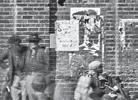

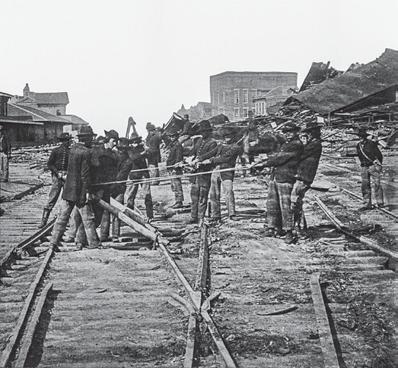


128 page Paperb ac k: $19.95 (+$3.50 S & H)




Ordering

29 December 2020 Civil War News 29 December 2020 Civil War News “The STORIES BEHIND THE PICTURES” 100 Significant Civil War Photographs CHARLESTON IN WAR By Stephen Davis & JACK W. MELTON JR Name Shipping Address City State Zip 160 pages • OVER 100 PHOTOS • MAPS • INDEX • BIBLIOGRAPHY • ISBN: 978-1-61850-167-7 Paperback: $19.95 (+$3.50 S & H) • Released Jan. 2020 3 ways to order YOUR COPY! CALL US 800-777-1862 ORDER ONLINE www.historicalpubs.com fill out this form BELOW & mail with a check for $23.45 to: Historical Publications LLC 520 Folly Road, Suite 25 PMB 379, Charleston, SC 29412 (S.C. residents include 9% sales tax of $1.80) newly Barnard and Charles photograph, selected as e Great Fire allow book are Confederates Harbor Reminiscences of Federal history historical works. such as (1838–1910). DAVIS & MELTON 100 SIGNIFICANT CIVIL WAR PHOTOGRAPHS CHARLESTON IN THE WAR
“The best little book on Barnard”
info:
s&h South Carolina residents add
sales tax Mail a check to: Historical Publications LLC 520 Folly Road, Suite 25 PMB 379 Charleston, SC 29412 or Order online at www.historicalpubs.com Wrecking Atlanta Northern Engineers Prying Up Track themselves,tothepointofreprintingthedrawingintheirregimentalhistoryof1889with thecaption,“theFirstMissouriEngineersdestroyingarailroadshowingtheuseofhooks made by them for the purpose.” Barnard Under the Microscope for Monday, November 7. Freedpeople on the Boxcars 67 Congress images bear no captions (as do Poe’s pictures), so students Barnardiana have to standing just beyond their parapet. thesharpskirmishinginfrontofit.Federaltroops,however,neverassaultedtheConfederate works surrounding Atlanta. Peachtree Battery–Another View Order these books online at www.HistoricalPubs.com
$19.95 plus $3.50
9%
Subscribe online at CivilWarNews.com
The Ball Repeating Carbine

As the American Civil War ground into its third year of combat, the ever conservative Ordnance Department began actively looking for metallic cartridge carbine designs for the U.S. cavalry. The success of the Model 1860 Spencer rifle and carbine had finally softened most of the institutional objections within an Ordnance Department that preferred not to rely upon patent metallic cartridge ammunition that could not be easily produced at the U.S. Ordnance ammunition laboratories. As a result, a number of cartridge carbines were contracted for during the War’s last eighteen months, including the Ball and Palmer carbines, both of which were produced by the same manufacturer. While many


new designs were relatively innovative, most were not delivered in time to have any effect on the war and many were never even issued to US troops.

The Ball carbine was designed and patented by Albert Ball of Worcester, Mass. Ball had spent the 1850s working for various Massachusetts based gunmakers, including Lucius Pond.
After Ball secured a patent for a breechloading, metallic cartridge carbine (#38,935) on June 23, 1863, the patent rights to produce the carbine, were subsequently purchased by E.G. Lamson of Windsor,m Vt., in order to produce the carbine.
Lamson had been a principle of the firm Lamson, Goodnow & Yale (LG&Y) that organized in 1861 to produce rifle muskets on contract for the U.S. government. Lamson, Goodnow & Yale had purchased the majority of the assets of the defunct
Robbins & Lawrence Company, also of Windsor, Vt. Robbins & Lawrence held an earlier contract to produce Pattern 1853 Enfield rifle muskets for the British government during the Crimean War so they had all the tooling and machinery necessary to produce that model long arm. L.G.&Y. became one of the three firms, plus Colt and Amoskeag, to produce the “Special Model” U.S. M1861 rifle musket. The gun was a sort of Enfield / Springfield hybrid championed by Samuel Colt, and his primary designer of the period Elisha K. Root. The “Special Model” had many Enfield-style features and was easier to produce on the machinery that LG&Y acquired from Robbins & Lawrence than the standard U.S. M1861 rifle musket. In 1864, Goodnow & Yale left the firm, and Lamson took sole control. At this time Lamson began actively seeking contracts to produce breechloading metallic cartridge carbines for the U.S. military. In addition to purchasing Ball’s patent rights, Lamson also purchased the patent rights to the Palmer bolt-action carbine. Lamson managed to secure contracts to deliver one thousand each of these patent carbines. Although both were originally to be produced in .44 rimfire, the U.S. Ordnance Department changed the specification in mid-stream, requiring the guns to be manufactured in .50 Rim Fire government. The newly adopted .50 rimfire gov’t cartridge was actually the improved 56-50 Spencer
and represented an attempt by the Ordnance Department to standardize calibers of self-contained cartridge arms, thus reducing the number of specialized cartridges in service.




Two sample Ball carbines were delivered to the Ordnance Department on Jan. 17, 1865. With Ball now working as Lamson’s superintendent, the company proceeded to manufacture 1,000 Palmer and Ball designs each. None would be delivered before the end of the War. The 1,000 contracted Palmer carbines were all delivered by mid-June 1865, some two months after Gen. Robert E. Lee surrendered. However, the re-tooling to produce the Ball Carbines in the new caliber had thrown a significant wrench into manufacturing efforts resulting in numerous delays. It would be May 1866 before the Ball
carbines would be delivered to the Ordnance Department. The end of the Civil War meant there would be no additional U.S. military contracts for his designs, and that orders for martial arms were going to end abruptly. In 1868 Ball left the E.G. Lamson company, and the firearms industry, and went to work for the Sullivan Machinery Company of Claremont, N.H. He lived until 1927, and received one hundred and thirty-five design patents during his lifetime.
The Ball carbine represented a sort of “improved” Spencer carbine. The Ball design used a tubular magazine, as did the Spencer, but it was mounted under the gun barrel, instead of in the buttstock. The seven-round magazine was loaded by lowering the triggerguard, thus opening the magazine. This allowed insertion of cartridges directly


30 Civil War News December 2020 30 Civil War News December 2020 www.CollegeHillArsenal.com Tim Prince College Hill Arsenal PO Box 178204 Nashville, TN 37217 615-972-2418
Close up view of the obverse receiver and loading port of the Ball carbine.
Ball’s magazine fire-arm patent No. 38,935.
into the magazine tube.
The magazine was tensioned by a long spring that had to be compressed and retained to allow loading. This was accomplished by pulling a long rod that resembled a cleaning rod, out from the carbine’s forend. When the rod was fully extended, the spring was compressed and was captured by a small catch at the end of the forend. Once the magazine was fully loaded, the catch was released, and the spring tensioned the magazine to push the cartridges towards the action.
Much like a Spencer, lowering the triggerguard opened the action, ejected a fired cartridge, and allowed a fresh cartridge to be pushed onto the cartridge lifter. Closing the action chambered the round. As the action could only be opened when the carbine was cocked, it was now ready to fire.
The Ball carbine had a 20.5inch round barrel and a twopiece smooth walnut stock and forend. Like most cavalry carbines of the era, a sling bar and ring were mounted on the left side of the receiver. The barrels were blued; the receivers were color casehardened, as were the triggerguard, hammer, and buttplate. The forend was secured by a barrel band about mid-way between the receiver and muzzle, and by a combination barrel band/end cap near the muzzle that contained the magazine spring catch mechanism. The spring compression rod, which extended below the lower right side of the barrel was left “in the white” and not finished.




The guns were not serial numbered but were marked on the left side of the receiver in six horizontal lines, reading: E. G. LAMSON & CO / WINDSOR, VT / U.S. / BALL’S PATENT / JUNE 23, 1863 / MAR 25, 1864. The guns were inspected by U.S. arsenal sub-inspector George G. Saunders and his script GGS cartouche was applied to the reverse wrist. Saunders had a career of some fifteen years as a Springfield Arsenal civilian inspector and his marks are found on everything from pre-Civil War 3rd Model Colt dragoon revolvers to post-war Ames saber bayonets for the SpringfieldRemington M1870 naval rifles. The carbines were equipped with an L-shaped aperture leaf
sights as were many of the era’s U.S. carbines. The short leaf was graduated to 100 yards, the pierced aperture in the long leaf was set at 400 yards, and the top of the leaf was sighted to 600 yards.
Despite Ball carbines not seeing any military service, it is quite possible that some of the gun’s features were noted by other designers. The under-barrel tubular magazine enclosed in a wooden forend and loaded from the receiver end rather than the muzzle end may well have inspired Nelson King to improve the Henry rifle design, resulting in what would become the Winchester M1866.
While most non-standard and obsolete arms in the U.S. military inventory were sold as surplus rather quickly after the War, Ball carbines remained in inventory until 1901. At this time a total of 984 were sold as surplus to Marcus Hartley for a mere 12 cents each. Interestingly, the equally never issued, “late to the dance” Palmer carbines were sold at the same time but brought a much higher 30.5 cents each. In both cases the guns truly sold for “pennies on the dollar” as the original contract prices had been $25 and slightly less than $21 each respectively. It is somewhat typical of government surplus sales that the 984 Ball carbines were sold for a total of $118.08, less than they paid to acquire only five during the war!
Tim Prince is a full-time dealer in fine & collectible military arms from the Colonial Period through WWII. He operates College Hill Arsenal, a web-based antique arms retail site. A long time collector & researcher, Tim has been
31 December 2020 Civil War News 31 December 2020 Civil War News
Overall obverse view of a Ball patent carbine by E.G. Lamson. All photos by Tim Prince.
Overall reverse view of a Ball patent carbine by E.G. Lamson.
View of the Ball carbine with lever lowered, showing the action open, and the loading access through the receiver to the tubular under barrel magazine.
Reverse receiver of the Ball carbine, showing the sling bar and ring with inset details showing the receiver markings and the inspection cartouche of George G. Saunders.
Digital Issues of CWN are available by subscription alone or with print plus CWN archives at CivilWarNews.com
The Letter
for my grandfather, for whom I was named.
academy for young boys in the upstate.
By
In 1978, my mother returned from Charleston with a white shoe box tied with a string. On the cover, two words were written in large letters: “FOR DAVID.” Having found it in a closet in my Uncle Johnny’s house, my mother said, “This is for you.” Later, when I opened it, I found many letters, photographs, obituaries, battle plans, and other documents written during the Civil War. When I looked at the handwriting, it appeared to be that of my great grandfather, Robert Flavel Jenkins, who died in 1936, long before I was born. I then realized that these papers had been intended not for me, but

Many letters in the box were written by Robert’s father, Micah Jenkins, who commanded a South Carolina Confederate regiment, largely from the upstate. These letters to his beloved wife, Caroline Jamison Jenkins, are not ordinary ones. The salutations begin with: “My own darling,” “My dearest one,” and “My own precious wife.” They speak of battles, of hope, of despair, and of a relationship of two people deeply in love.
Micah John Jenkins, “Prince of Edisto,” was born at Old Oak Plantation on Edisto Island, S.C., Dec. 1, 1835, the youngest son of Captain John Jenkins (1794–1854) and his wife Elizabeth Grimball Clark (1803–1864).

When he was fifteen, he entered the Citadel and graduated first in his class in 1854. The next year, then nineteen years old, Micah visited the Head of the Board of Visitors of the Citadel, General David Flavel Jamison (1810–1864), who lived in Orangeburg, S.C. He came to discuss with General Jamison his plans for opening a military

There, the handsome young Micah Jenkins met Caroline Harper Jamison (1837–1902), the exquisitely beautiful daughter of the general. At first, D.F. Jamison did not trust Micah and warned him about trifling with his daughter. But this match proved successful, and on July 3, 1856, after a courtship of over a year, Micah and Caroline were married before the rising sun by the Reverend Benjamin Morgan Palmer (1818–1902) in the little Presbyterian Church of Orangeburg.
The young couple moved to Yorkville, S.C., where Micah, with the help of his good friend Asbury Coward (1835–1925), built a large building with two wings. Micah and Asbury, friends from the Citadel, at the age of twenty established the King’s Mountain Military School, which was designed to prepare boys for the rigors of the Arsenal Academy in Columbia, and the Citadel in Charleston. King’s Mountain Military School grew rapidly, and by 1860, was one of the largest preparatory schools
in the state. The Jenkins family grew rapidly too. In 1857, Micah Jenkins Jr. was born; in 1858, my great grandfather, Robert arrived. In 1859, William, and then in 1861, Whitmarsh was born, followed by the youngest, John in 1863.
By 1860, the clouds of secession gathered over South Carolina. When Abraham Lincoln was elected president, South Carolina reacted. In December 1860, a convention of the people of South Carolina elected D.F. Jamison, Caroline’s father, as the President of the Secession Convention. South Carolina was the first state to secede.
On April 15, 1861, D.F. Jamison, who prepared the fortifications of Charleston Harbor as “Secretary of War for the Palmetto Republic,” wrote to his daughter, Caroline, his description of the bombardment of that fort:



“…Dear Me!” “What a week this last has been,” Jamison wrote, “just after breakfast while the cannoning was going on both sides, Fort Sumter took fire from the shell and shot—that was thrown on her, and soon the whole fort was enveloped in a dense smoke which concealed all but the lower outlines of the building…Amid the smoke and the burning barracks, could be seen the flame from the guns of the beleaguered fortress, followed with the heavy booming of the cannons. Not long after
the fire gained ground, the fire from Fort Sumter ceased, and not a sign of life was to be seen about the fort for some five hours. When the flag staff was shot down by a gun from Fort Moultrie, for some moments it was hoped that it would not be raised again, but it was soon replaced on a stronger staff. Then the firing on our side was redoubled, in about twenty minutes, a white flag was very slowly raised up by the side of the other, but in a moment the United States flag was removed and a white left standing alone. We sent over an officer to inquire of the meaning, and it ended in capitulation which was carried out today. I went over with the governor, Gen. Beauregard, and some to witness [the surrender]….”
At the time of the bombardment, Caroline and her children were staying at Burwood, her parent’s home in Barnwell District of South Carolina. Her mother, Elizabeth Anne Carmichael Rumph Jamison (1814–1888) later wrote a different recollection of that battle: “My daughters and I were not far from the Edisto, and that river transmitted the sound of each gun as it was fired to us. That was our first experience in the war. We, of course were very anxious the next day to hear the result and to know what had occurred ….. We did not know for some days that our friends had not been in danger then at all.
32 Civil War News December 2020 32 December 2020
David J. Rutledge
Micah Jenkins.
Then followed, volunteering. My son-in law, Micah Jenkins and my oldest son David were amongst the first of the volunteers. Then came forming of companies, and the election of officers—then the hurrying off of the volunteer companies to Virginia. The making ready and waiting for the battles to come off was tiresome indeed, but had to be borne weary as it was. The following summer we waited in much suspense for what we then knew must come, — WAR IN ALL OF ITS HORRORS!”
Micah Jenkins enlisted in the Confederate Army in May 1861, as a colonel. Shortly after the Battle of Frayser’s Farm in 1862, he was promoted to brigadier general. At the age of twenty-six, he was one of the youngest men to hold that rank. His regiment became known as the Palmetto Sharpshooters. Formed from South Carolina’s Fifth Regiment, the men were from the upstate counties. They fought from the beginning of the war until its bitter end, from First Manassas to Appomattox. With Jenkins as their commander, they saw action at Williamsburg, Second Manassas, Seven Pines, Fredericksburg, Chickamauga, Lookout Valley, Knoxville, and the Second Battle of the Wilderness, among many others.

During the war, the women supported their efforts. In South Carolina during that conflict the fashion was economy. The song “The Homespun Dress Southern Ladies Wore” with the words: “my hat is palmetto, my dress is homespun too…” described the harsh reality of this time. Food of all kinds was scarce; it was carefully guarded and sent to the soldiers when possible. Clothing was also in short supply. By 1864, Confederate money had inflated to such an extent that one person said, “One carries their money in a basket and their purchases in a purse.”
Regarding the home front, Elizabeth Jamison wrote about what was life was like for the women at Burwood. “We who had to stay at home and wait for news from the army had many times heavy hearts. But there was much for the mothers and mistresses on our southern plantations to do. And, it was astonishing how much was accomplished too. They learned to manufacture homespun, Some of them made it nice and pretty. I had a warping bars and a loom made. And took lessons in weaving from a neighbor that I might teach one of our women to weave cloth for the use of the plantation. …The prices and
scarcity of wearing apparel and groceries had become so great, that my husband sent some cotton bales through the blockading fleet to Nassau and had the cotton exchanged for groceries and dry goods. Our stockings, socks, and gloves, we knitted from homespun cotton yarn…”
Caroline Jenkins wrote the following concerning the difficulty she had clothing her four little boys: “Alas my boys are growing so rapidly that the clothes problem has become acute. The younger children can wear the older boy’s hand-me downs which works out well enough with a little sharing and mending, but what about my eldest boy? I tremble when I think of approaching him with the suggestion that I make him trousers from an old dress. His last pair of trousers went yesterday, and alas, they completely collapsed, without a hope of repair. I discovered an old trunk behind some abandoned farm implements in the barn. I opened it to find several old dresses belonging to past generations, a package of needles, rusty to be sure, but rust can be removed, and they will be good as new— think of it: A whole package of needles. I can hardly believe my good fortune, but best of all there was a man’s overcoat of woolen material that can be remade into coats and trousers for the boys… I cannot help but feel that benign Providence is watching over us.”
Substitutes for basic items also became the standard in South Carolina during the war. Coffee was almost unheard of. “I was on the porch this morning, Caroline Jenkins wrote, “when Mr. Isaac Deveraux passed by looking very sad and worn… He is so absent minded. I doubt that he realizes it though. I invited him in for breakfast and was sorry I did for as he drank his coffee, he murmured: “Slops Maria, slops.” (Coffee made of sweet potatoes and groundnuts may not be the best but it’s our best!)
I said: “What did you say, Mr. Deveraux?” And he answered: “Sorry my dear, I thought I was talking to my wife.” Then Caroline commented: “His wife has been dead for thirteen years. Poor soul, she’s better off rather than living with a man who after all that time is still complaining about her cooking.”
As the war progressed, stressful as life had become on the home front, the hearts of the women were turned to the battlefields, where their men were fighting. “During this time,” Elizabeth Jamison said, “the battles were more and more
bloody. Those were times sadly to be remembered, so full were they of anxiety for those who were going through those bloody battles. We heard constantly of friends who were killed. Of others being wounded, and great and anxious fears filled the hearts of those at home…Desirous of news, yet fearful of its import, only a full reliance on the tender mercy of God could sustain the soul and calm the mind in times of peril such as those.”
Caroline’s experiences were similar. “Each day we went to view the bulletin of the dead and wounded. …. One morning I went with Lydia, and we were merry all the way. Suddenly, we found ourselves laughing in the mist of great silence. We looked at the list. At the top was the name of Lydia’s only brother.”
In truth, Caroline, with Micah away, had very hard time. She had to make day to day decisions alone for the family to provide food, clothing and shelter for her growing boys. At one point, while Micah was as at the front, the merchants pressed her for money. He wrote to her concerning the local vendors: “Will they take Confederate money for debts. If so let me know at once and what you think about it.” Caroline tried not to let her
despair reach her husband. “It was difficult to write cheerful letters,” she said, “when there was so little that is cheerful to recount. We knew our forts are threatened, and that they may even fall….There was so little food, and we had almost nothing in the way of clothing. But there was still firewood, and inside the house, it was still warm and cheerful.”
Micah Jenkins’ duties took him away from his wife and little boys. In September 1863, when he was in Tennessee, hundreds of miles from home, he received the news that Whitmarsh, his youngest child had died from disease. Micah could do nothing to console his wife, except compose one of the most difficult letters he ever had to write:
“Here amid the rack of arms, I have learned…that God has taken from us our beloved child, little Wittie. It fills my heart with sadness, and I feel most hard for you my own darling. Let us look to Him for comfort. He has taken our baby to heaven, and in Christ I give him. Ah, how hard and cruel is this war that even in such troubles I cannot be with you to comfort and console you.”
The next year, 1864, would bring greater loss to the family,



and they would be tested to their very core. In March 1864, Micah Jenkins came home to attend the funeral of his mother and to visit his family. My great grandfather, Robert Flavel Jenkins Sr., Micah’s son, remembered this visit in his later years. Robbie, who was five years old at the time, saved his brother from falling from a second story balcony. His father took him up in his arms and praised his son for this act of courage. Micah put Robbie on his great warhorse Latta and rode with his little boy for the last time. This would be one of the few memories Robert would have of his father. At the train station, Micah Jenkins looked at his friends and family and declared that “he was going to fight his last battle.” He then disappeared into the mist created by the steam of the locomotive.
Elizabeth Jamison summed up Micah Jenkins’ career as follows: “My son-in-law had been wounded again and again, though not seriously injured. He was struck in his breast, the ball was turned from some cause, passed across to his arm and was extracted near his elbow. Chance played some curious freaks in the manner in which he was so often struck in battle. In the First Battle of
33 December 2020 Civil War News 33 December 2020 Civil War News Specializing in Civil War Reenacting and Living History Uniforms, Muskets, Accroutrements and Equipment... We have everything you need and so much more. We are offering speacial Gift Boxes for Christmas this year. Check them out on our website at www.regtqm.com Now offering a full line of Historic Tees and Sweatshirts. Check out the new website www.historic-tees.com
Bull Run his stirrup was struck of [sic, off] his foot. In another fight he was struck in his knee by a spent ball, but not seriously hurt. At Chickamauga, a piece of shell cut into the bridge of his nose—an eighth of an inch more—sight would have been destroyed. At the battle of the Wilderness, the ball penetrated his brain, and a true hearted man, a real Christian soldier, a loving husband and father was taken to the “many mansions,” where no doubt the warm hearted one now waits to welcome the loved ones he had to leave here to struggle through many weary years. He passed away May 6, 1864.”
On that date in the wilderness surrounding Spotsylvania and Orange Counties in Central Virginia, Micah, sick from typhoid fever, rode to the field in an ambulance. He was determined to mount his horse and lead his men into battle. When he exited the ambulance, he threw his arms around Moxley Sorrel, Longstreet’s staff officer and said, “We will smash them now.”
Jenkins’ men were wearing new dark gray uniforms that appeared blue in the dim light of the Virginia wilderness. As Lieutenant General James Longstreet, Major General Joseph Kershaw, and Brigadier General Micah Jenkins were riding on the Orange Plank Road, Jenkins turned to Longstreet and said, “I am happy. I have felt despair for the cause for some months, but I am relieved now, and feel assured that we will put the enemy back across the Rapidan before night.”
Moving down the road,
Confederate soldiers under the command of General William Mahone, who were positioned in the woods, mistook the dark uniforms of the three officers and their staff for Federal troops as the generals approached. Mahone’s men started firing. According to one witness, Jenkins rose in his stirrups and shouted: “Steady men! For God’s sake, steady.”
It was too late; Longstreet and Jenkins were hit, along with two other men of Kershaw’s staff who were killed instantly. Seeing Jenkins fall from his horse, his men on the Orange Plank Road immediately faced to the right, cocked their rifles, and were about to return the fire. General Kershaw, realizing what was about to happen, screamed out to the Confederate infantry, “F-r-i-e-n-d-s!.”
Jenkins’ men then lowered their rifles as Mahone’s troops, realizing their horrible mistake came running out the woods voicing their regret and to trying to help. Ironically, this happened very close to the spot and in the same manner where General Thomas “Stonewall” Jackson was mortally wounded the year before.
As in Jackson’s case, there was little that could be done. Longstreet was on the ground, seriously wounded from a bullet that passed through his neck and into his shoulder. He was removed from the battlefield coughing up blood. Longstreet, though terribly wounded, would survive.

Micah Jenkins, however, lay dying from a mortal wound to his forehead, paralyzing him on one side of his body. Still
conscious, he could not recognize any friends or fellow officers. As he lay there, he continued to call for his men to press forward, obviously thinking he was still leading his brigade into battle. Colonel Asbury Coward, his longtime friend, rushed to Jenkins side, took his hand, and asked: “Mike do you know me?” Coward felt the strong grasp of Micah’s hand as his body convulsed violently. Coward and the other officers in the brigade watched helplessly as Jenkins was gently placed on a litter. Asbury Coward and many of the Palmetto Sharpshooters wept as their young commander was taken to the rear.
When Jenkins arrived at the field hospital, he was still alive, although not conscious. His head wound was so serious that those around him realized “professional aid was useless.” He lived for five or six hours, dying that Friday about half an hour before sunset. According to one of his surgeons present, at the moment Micah Jenkins breathed his last, “a bright,
happy, trusting smile lit up his face.” The surgeon said, “Those around watched, we thought, we felt he was with his God.” His body was washed, and he was dressed in his finest uniform.
The next day the news of Jenkins’ death reached South Carolina. Caroline Jenkins and her children were at Burwood. As was the custom for many trains, when there was bad news, the whistle sounded with long sonorous groans. On that day, Caroline and her family heard the wail of the train, heralding bad news. Caroline, her mother, and her children rushed to nearby Midway station and waited in their carriage. Her father stepped off the train. Seeing his daughter, the grim faced Jamison grasped his daughter’s hand and told her that Micah had been killed. She had been married just short of eight years, and the children, because of his absence in the war, barely knew their father.
Micah’s body was brought back to South Carolina, accompanied by Caroline’s brother John Wilson Jamison (1839–1887). His body first lay in state at the Arsenal Military Academy in Columbia, and then was removed to Summerville, S.C. The following article from the Charleston Courier, recounts his funeral: “The remains of the lamented General Micah Jenkins were interred in Summerville in the graveyard of the Episcopal Church of that place where his mother was buried. The body arrived at Summerville a quarter past three o’clock under the escort of the cadets of the Arsenal Academy in Columbia. The coffin with a Confederate flag laid upon it was placed upon a carriage, and a procession was formed from all of the inhabitants of the village and the convalescent solders in the hospital that were able to attend. Before the procession began the ladies of the village brought in beautiful wreaths and numerous bouquets of flowers and strewed them with profusion upon the coffin.
The coffin was followed by several members of the deceased’s family, including his widow, his father in law, General D.F. Jamison, Major John Jenkins and Dr. Edward Jenkins [his brothers].

Upon the arrival of the remains at the village and during the passing of the processions, the church bells were tolled and every expression of grief and sympathy was exhibited by the inhabitants of the village. The ladies present at the interment bedecked the grave with flowers
and gave vent to their heartfelt sorrow in the tears which were freely shared of over the mortal remains of the departed hero…”
In the 1880’s, Micah Jenkins’ remains and those of his mother were moved from the little cemetery of St. Paul’s Episcopal Church in Summerville, and were reinterred in Magnolia Cemetery in Charleston. Micah was twenty-eight when he died, and he left his twenty-six year old widow to raise their four children alone. Caroline never remarried.

In the box, I found the following prophetic letter Micah wrote to Caroline. Written before the 1862 Battle of Frayser’s Farm in Virginia, it best expresses his hopes and concerns for the future of his family and his despair over being separated from them:
“Hdqers. ‘Palmetto Sharpshooters’ Near Richmond, May 28th, 1862
My Beloved Wife:

I got a letter, five days old from you today, and was happy to hear from you again. I am now in the hands of my God, wife, and I entrust you and my dear children to his fatherly keeping. The great battle is very, very, near I think. I trust our prayers may be favorably considered by our God and that His hand will cover and protect me, so that when this unhappy war is over, I may live to be a husband to you and to my children a father. If it please God to take me away, this early in life, bid my children when they grow old enough to understand, to be good and true men, doing their duty to you, to their country, and their God. Guard and guide them as if I were with you, and be to me a true wife till God unites us in heaven.
It saddens me to think of how strained your circumstances may be, but with good management and economy, which I know you will practice. I hope you will have enough to live comfortably on and to educate our children with. Brother John and Brother Edward will act a brother’s part to my family I know….[T]hough I may fall, yet I hope a blessed peace will soon give back to our country the comfort and prosperity so much to be desired.
My dear wife, I need not tell you that you are my best and only loved, and that my entire, confiding, trusting warm loving heart is yours, fully and truly.
34 Civil War News December 2020 34 Civil War News December 2020
John Wilson Jamison.
Subscribe online at CivilWarNews.com
Central Virginia Battlefields Trust –Turning 25
by Tom Van Winkle

On December 11, 1862, after a weeklong delay in receiving needed pontoon bridges to cross the Rappahannock River, Union Major General Ambrose E. Burnside ordered engineers to lay bridges to Fredericksburg. Intensive Confederate rifle fire delayed the attempt. Aided by Union artillery fire, Federal infantry finally reached the city’s shoreline using the pontoons to traverse the river. On Dec. 12, the remainder of the Union Army of the Potomac followed.
Burnside ordered a series of attacks across a long open field against the Confederates on Dec. 13. The gray-clad soldiers were firmly entrenched in a sunken road, protected by a stonewall. Above them towered Marye’s Heights, fortified with Confederate artillery.
The assaults resulted in massive Union casualties. This, however, was part of Burnside’s plan to pin General James Longstreet
in place while Union Major General William B. Franklin’s left grand division of over 50,000 men assaulted Lee’s southern right flank held by General Thomas J. Jackson. This action took place on ground well known to us today as the Slaughter Pen. Both sides suffered heavy losses with no gain for either.
This December 1862 battle was just the opening salvo of what was yet to come for the region. The following year the armies returned to fight at Chancellorsville and spawn what is known as the second battle of Fredericksburg. The warring parties returned yet again in 1864 with Generals Ulysses S. Grant and Robert E. Lee facing off and beginning what became known as the Overland Campaign.
The armies moved on from the Wilderness to Spotsylvania Court House. Over 100,000 casualties, killed, wounded, and captured, occurred in the short 18-month period. Fredericksburg was looted and destroyed, area farms were stripped of livestock and fencing burned in campfires. Families were displaced; many never returned. The area’s population was approximately 15,000 prior to the Civil War rearing its ugly head in the Rappahannock region. It was not until the 1940’s that many would call the area home.
For the same reason the armies fought here, at the midpoint between Washington and Richmond, the area today has
become popular and growing rapidly. For the past 26 years I have lived in Spotsylvania County, growth along the eastern corridor of Route 3 has been frantic. When my wife and I moved here, there were roughly three traffic lights from the exit off route I-95 to the Orange Plank Road, modern day Route 621, in Spotsylvania. Now, I cannot count them all. What was once a fifteen-minute drive is now more than double that on a light traffic day. Strip malls, restaurants, housing developments, and big box stores have taken over the area and continue to threaten many important properties that should add to the stories of our history and of those who fought and died here. The western side of Route 3 is now under assault. CVBT is working diligently on stitching together Jackson’s Flank attack, one small property at a time. January 2021 will begin Central Virginia Battlefields Trust’s 25th year of preserving the important Civil War battlefields of Fredericksburg, Chancellorsville, Wilderness, and Spotsylvania Court House. We have saved over 1,350 acres to date that would have otherwise been lost forever.
Through the early years, we accomplished this with virtually no paid staff. We then required one part-time Director. As the battlefield property inventory grew, so did the legal, tax, and compliance requirements, not to mention taking care of our
Partners (members). A full-time Executive Director joined the team. Most recently, we have added one more: an Assistant to the Executive Director. That makes our entire, and current, paid staff two (2), yes, I said only two, in 25 years. The entire working Board of Directors, and I, the President, are volunteers. We all have specific talents and make use of those abilities to move CVBT forward. In this way, we may proudly state that this low overhead allows us to concentrate donations on saving the battlefields. We do not wish to become a larger organization; we simply strive to be as effective as possible and find new ways to do so.
In October, I was pleased to announce we satisfied the mortgage on our Myer’s Hill property, 73 acres on the Spotsylvania Court House Battlefield, months before our goal. This was a $450,000 purchase, no small amount for us. Our Partners stepped up, and we were awarded grants from the American Battlefield Protection Program and the Virginia Battlefields Preservation Fund. This was especially gratifying as it was accomplished in the face of diminished donations, caused by both the COVID-19 epidemic and the change in the tax code this year.
Of course, we are also currently working on several other parcels that are in different stages of negotiation. I have said it before, these acquisitions and negotiations are never simple or quick, they require patience and determination to result in a win/ win for all parties involved.
On April 16-18, 2021, CVBT will host our annual conference and celebrate our 25th anniversary. We will recall all those who have helped us grow to be the successful organization we enjoy today. Former American
Battlefield Trust president, Jim Lighthizer, has called CVBT “One of the most effective regional battlefield trusts in the country.” Who am I to disagree?

We have had a busy year. Our Executive Director, Terry, and his assistant, Sarah, have done a great job developing online programs to fill the gap created by cancelled tours and meetings due to the pandemic. One program, “At Ease,” has developed such a following we may continue it for some time to come. Visit our website and sign up for this series and our 2021 conference. www.cvbt.org
There are many stories yet to be told and battlefield acreage needing preservation. Saving our history, not erasing or rewriting it, will serve this nation. Our past, however unpleasant it may be at times, should be studied and understood, only then may we learn from it. Walking on a Civil War battlefield allows us to see, in our minds eye, what took place in that moment of history.
Our work at CVBT is far from completed and we look forward to our 25th year preserving our nation’s history. I hope you will join us.
Tom Van Winkle is the President of the Central Virginia Battlefields Trust and author of several articles regarding the Civil War. He is also a historical film maker and has produced several productions including a popular local cable TV series “History Scene™”

35 December 2020 Civil War News 35 December 2020 Civil War News
The Civil War drastically effected the Central Virginia area, as illustrated by these refugees returning home after a battle.
Subscribe online at CivilWarNews.com
Tom Van Winkle leads Central Virginia Battlefields Trust into its 25th year of hallowed ground preservation.
Announcing Battle Maps of the Civil War: The Western Theater
The American Battlefield Trust is proud to announce publication of our newest book, Battle Maps of the Civil War: The Western Theater, now available from Knox Books. This full-color, 112-page collection of our acclaimed battle maps is a perfect companion to your own studies or trips into the field and the ideal complement to Battle Maps of the Civil War: The Eastern Theater, published last year and already in its second printing.
The first copies of this reference guide are reserved as gifts for donors to our new campaign to protect an additional 303 acres at Franklin and Lookout Mountain in Tennessee, famous battles featured prominently in the book. Of particular note is the 301 acre tract that played a key role in the “battle above the clouds” that we will place under conservation easement. Not only did it contain the only possible approach that allowed Union General Joseph Hooker to execute his unexpected and wildly successful maneuver against Confederate General Braxton Bragg’s forces on Lookout Mountain, but it is also one of the single largest tracts

of land that can still be saved on the Chattanooga Battlefield.
Once books tied to donations to this appeal are allocated, individual sales will begin with delivery in time for holiday gifting! Visit www.battlefields.org/ MapBookV2 for full details.
Trust Secures Treasured Tract at Antietam’s West Woods

In what could be defined as the most fitting retirement gift, James Lighthizer’s last day as Trust president included his proclamation that three more acres are preserved forever in the West Woods at Antietam, his favorite battlefield. The property marks where numerous Confederate brigades launched their advances into the West Woods and toward the Dunker Church on September 17, 1862. Widely considered to be one of the most critical engagements in American history and a true turning point of the Civil War, the battle was a Union victory that allowed President Abraham Lincoln to issue the preliminary Emancipation Proclamation.
The Trust publicly launched a national fundraising effort to purchase the $310,000 property on August 17, 2020, noting
that a swift closing was necessary to meet the seller’s deadline. With the acreage situated inside the battlefield’s legislative boundary, it was not eligible for any matching-grant sources traditionally used by the Trust. Donors rose to answer the organization’s urgent call to protect the site despite the short window of opportunity. The project also marked inaugural use of donations to the Lighthizer Legacy Fund, created last autumn when the former president announced his retirement after 20 years spent leading the organization.
The victorious preservation of this hallowed ground will prevent future development from infringing on the solemnity of this critical battlefield and lay the groundwork for its eventual transfer to the National Park Service. The accomplishment brings the Trust’s total land saved at Antietam to 463 acres.

“Another Victory for Kentucky!” Mill Springs Battlefield National Monument Joins the National Park System


An October 14 ceremony in Nancy, Ky., celebrated the long-awaited day when Mill Springs Battlefield National Monument officially became part of the National Park System. Other collaborators in the effort
to establish the 421st unit of the National Park Service included Congressman Hal Rogers (RKY), U.S. Senate Majority Leader Mitch McConnell (R-KY), the U.S. Department of the Interior, the National Park Service, the Mill Springs Battlefield Association (MSBA), and local leaders.
Once identified as one of the 25 most endangered battlefields in America, Mill Springs was the site of the Union’s first major victory on January 19, 1862. With some 17,000 soldiers engaged, the Battle of Mill Springs was the second largest Civil War battle in Kentucky. Not only serving as a national rallying call and essential morale booster for the Union, the victory solidified Kentucky’s Union affiliation in the war.
The charge to save this hallowed ground began in the early 90s, initially led by the MSBA. The Trust was soon enlisted in the undertaking alongside the MSBA and government partners, and can now enthusiastically declare that 700 acres have been protected, land that Trust President David Duncan said is “poised to become part of the inheritance of every American.”
The public celebration of Mill Springs’ designation was held on the lawn of the new federal park’s Visitor Center and Museum. Collaborators aplenty were present and all were overjoyed at the accomplishment
that was years in the making. Deemed “another victory for Kentucky” by Congressman Hal Rogers, who also helped establish the MSBA, an emphasis was placed on the historic battlefield’s adept ability to provide future generations with an immersive educational experience that showcases Kentucky’s important role in the Civil War. Acting Superintendent for the site, Elisa Kunz added that the National Park Service’s presence poses ideal opportunities to expand audiences and economic contacts while also safeguarding natural resources.
Mill Springs Battlefield National Monument, including the Visitor’s Center and Museum, is now open to the public. Visitors to the new national monument can also begin a 10-stop, self-guided driving tour of the battlefield from the visitor center.
Perryville Battlefield Nears Completion, Presenting Boundless Potential
In the coming months, Perryville Battlefield State Historic Site will receive the largest addition to the park since it was created in 1936, thanks to the pending transfer of 384 acres from the American Battlefield Trust to the Commonwealth of Kentucky through the Kentucky Heritage Land Conservation Fund (KHLCF). The site is managed by the Kentucky Department of Parks with assistance from the Office of Kentucky Nature Preserves. The additional acreage, valued at $2.5 million and located across the battlefield, represents six properties. Numerous
36 Civil War News December 2020 36 Civil War News December 2020
Antietam’s West Woods.
Battle Maps of the Civil War The Western Theater book cover.
Mill Springs battlefield. Don Sniegowski.
Cannon overlooking the Perryville battlefield. Don Sniegowski. landscape restoration projects on the Trust-preserved lands have been completed thanks to the enthusiastic support of our nonprofit partner, Friends of Perryville Battlefield.
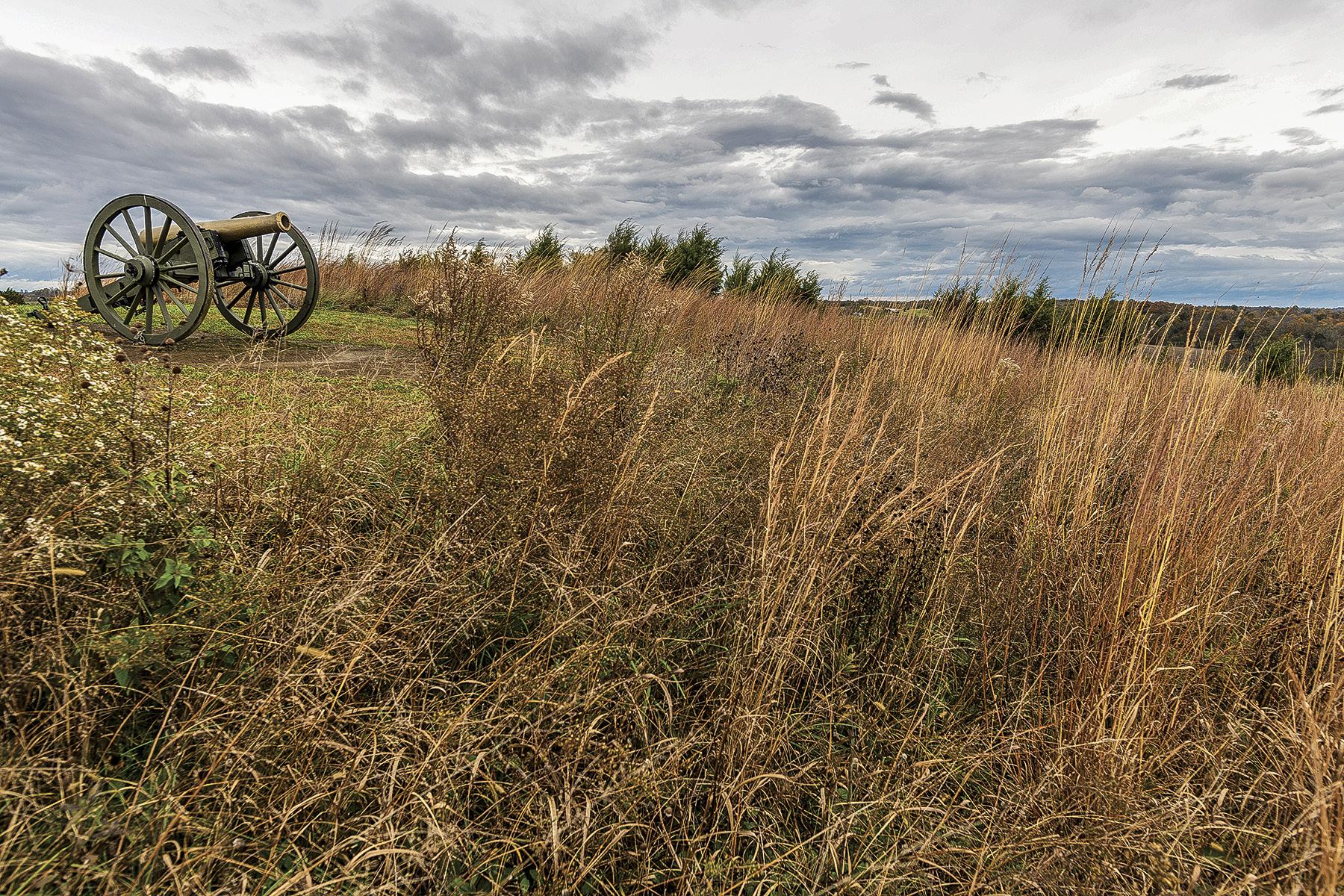
Stressing the magnitude of the future gift, Trust president David Duncan notes that the transfer will result in Perryville becoming “one of the most complete historic landscapes of its kind.” In all, the Trust has protected 1,150 acres at Perryville; 113 were previously transferred from the nonprofit to the park, representing roughly half of all work done by the organization in Kentucky. Nearly all this work was completed through cooperative efforts, including matching grants from the federal American Battlefield Protection Program, logistical support from the Commonwealth of Kentucky, and the support of the Boyle County Fiscal Court. This remarkable battlefield saw ferocious fighting between the Union Army of the Ohio and the Confederate Army of Mississippi on October 8, 1862. The Battle of Perryville lasted five hours and was among the most brutal of the Civil War with over 7,000 total casualties. While a tactical victory for the Confederacy, it was an
important strategic victory for the Union that left Kentucky in Union hands for the remainder of the war.


An obvious historic asset to a Commonwealth that has demonstrated a deep commitment to battlefield preservation, the park provides great economic, recreational, and environmental benefits for the region and the state. Tourists to Kentucky are said to spend $458 per household per trip and many are drawn to its battlefields and historic sites. These new lands at Perryville bring even greater opportunity for those invested in recreational activities like kayaking, canoeing, and fishing. The battlefield also preserves forested watershed and rare species habitat protection, including threatened and endangered species of bats and insects. Zeb Weese, executive director of the Office of Kentucky Nature Preserves and chairman of the KHLCF Board, reports that Perryville is host to a significant Monarch butterfly population and provides a picturesque destination for bird-watchers.
The Commonwealth and the Trust reached a preliminary agreement regarding the transfer of all properties in July 2019, when the Kentucky


100 Significant Civil War Photographs:

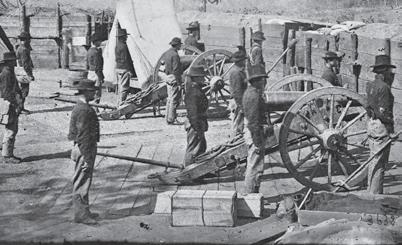
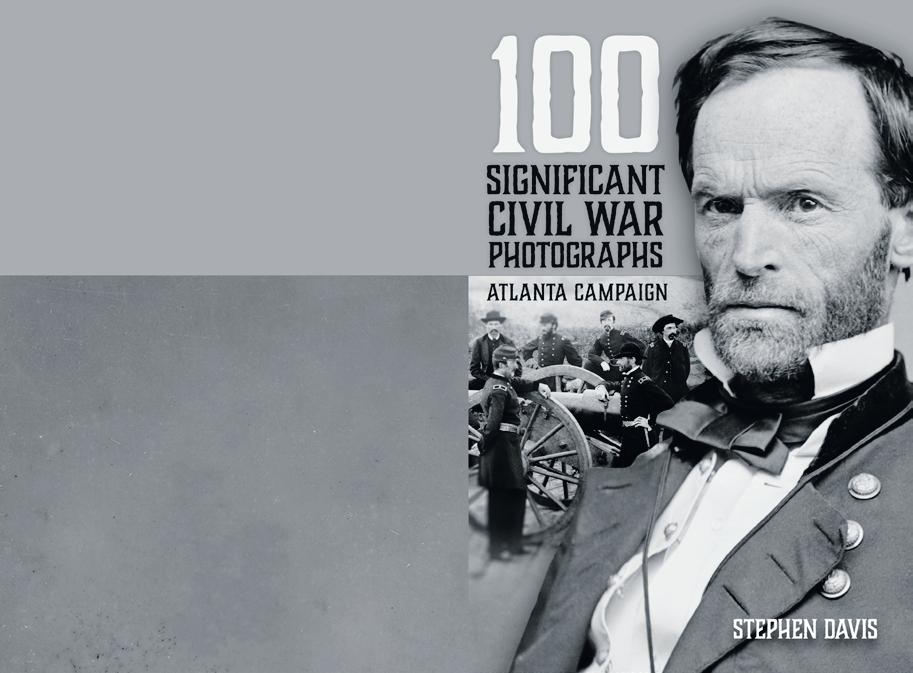



Atlanta Campaign collection of George Barnard’s camera work. Most of the photographs are from Barnard’s time in Atlanta, mid-September to mid-November 1864, during the Federal occupation of the city. With this volume, Stephen Davis advances the scholarly literature of Barnardiana.



37 December 2020 Civil War News 37 December 2020 Civil War News
The American Civil War was the first war in which both sides widely used entrenchments, repeating rifles, ironclad warships, and telegraphed communications. It was also the first American War to be extensively photographed. Mathew Brady, Alexander Gardner and Timothy O’Sullivan are famous for having made iconic photographs in the Civil War’s eastern theater. George N. Barnard deserves to be ranked in this top tier for his photographic A civilian photographer hired by Gen. William T. Sherman’s chief engineer to take pictures of fortifications around Atlanta, Barnard took several hundred of them in and around the city in the fall of 1864. His most famous is the site of Union Maj. Gen. James B. McPherson’s death in the battle of Atlanta, July 22, Thus far, no comprehensive, definitive listing has been made of the photographer’s work. The Library of Congress has 130 images; the U. S. Military Academy at West Point, New York, has at least 98 photographs, donated by Captain Poe’s widow. Other repositories, such as the Gilder Lehrman Institute of American History in New York City, have smaller collections. For this book we have chosen hundred images we deem “significant,” though other students may wonder at some of our selections. We hope that this work will stimulate further interest in Barnardiana, and that other scholarly volumes are yet to come. The Atlanta Campaign STEPHEN DAVIS 100 SIGNIFICANT CIVIL WAR PHOTOGRAPHS ATLANTA CAMPAIGN $19.95 + $3.50 shipping 128 pages, photographs, maps, bibliography. $19.95 + $3.50 shipping. Softbound. ISBN: 978-1-61850-151-6. www.HistoricalPubs.com. Order online at www.HistoricalPubs.com or call 800-777-1862 Heritage Land Conservation Fund approved a $400,000 grant to acquire this acreage from the Trust. The Trust and the Commonwealth are in the pro cess of finalizing all necessary due diligence steps to complete the transfer process, and in do ing so; look forward to the po tential that the new lands offer. Please visit www.MKShows.com for updates. Cancelled Cancelled Deadlines for Advertising or Editorial Submissions is the 20th of each month. Email Ads or Events to ads@civilwarnews.com
Chris Mackowski
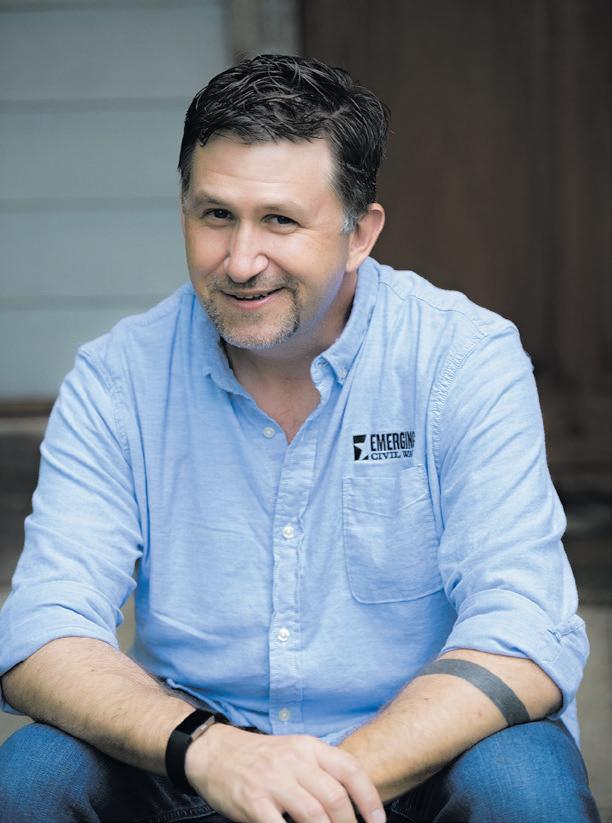 From the Editor
From the Editor
“No period of American history makes greater demands on the historian than that of the Civil War,” historian C. Vann Woodward wrote in his introduction to James McPherson’s The Battle Cry of Freedom.
I recently came across Woodward’s quote while looking at McPherson’s 2000 Jefferson lecture for the National Endowment for the Humanities, a lecture worth reading, here, if you haven’t already: https://www.neh.gov/ about/awards/jefferson-lecture/ james-mcpherson-biography.
As I often do with quotes I find interesting, I posted Woodward’s comment as my Facebook status. As if in agreement with Woodward’s sentiment, one friend quoted Tony Horwitz quoting Gertrude Stein: “There never will be anything more interesting in America than that Civil War, never.”
“As a writer on Reconstruction, Woodward must have known that was not entirely true,” replied one friend, himself a writer on Reconstruction. I wondered if perhaps Woodward thought it was true even when compared against the complexities of Reconstruction.
Another friend said future historians will point to 2020 as the period that made great demands on historians. The Age of COVID, a contentious presidential race, social justice protests and civil unrest, cataclysmic wildfires, all in a post-truth context, will certainly challenge any historians who try to sift through events.
We’re all students of the Civil War, and so we understand its multi-faceted complexities, even if many of us focus on, say, just the military aspects or just a single battle (Gettysburg fans, I’m looking at you!). So, knowing how steeped we are, I ask: Do you agree with Woodward? If not, what period do you think would qualify as the period of American history that places the greatest demands on historians?
—Chris Mackowski, Ph.D. Editor-in-Chief
ECW News & Notes
The annual book issue of Civil War News (November 2020) featured the top-ten lists of more than thirty historians who discussed their favorite books. Among those who included their lists were ECW’s Sarah Kay Bierle, Meg Groeling, Chris Kolakowski, and Chris Mackowski.

Sarah Kay Bierle wrote a piece for the November 2020 Civil War News about Pelham’s Corner and Latimer’s Knoll, two “Artillery Positions to Visit, Stories to Tell” on the Fredericksburg battlefield.
the book. “Zachery Fry is to be commended for this thoughtful and deeply researched book,” wrote reviewer Paul Taylor. H.R. Gordon’s interview with Tony Horwitz, which appeared in Entertaining History: The Civil War in Literature, Film, and Song, has been excerpted for the current issue of America’s Civil War magazine. Gordon and Horwitz talk about the legacy of Confederates in the Attic. The magazine also includes a brief introduction by the book’s editor, Chris Mackowski.
Meanwhile, Entertaining History received a great review in the October 2020 issue of Civil War Times. Reviewer Ethan Rafuse lauded “the many positive aspects of this study, which offers plenty to not just inform, but also entertain, its readers.”
WWI historian and author Mitchell Yockelson is working with Meg Groeling on the final edit of Meg’s Elmer Ellsworth bio, First Fallen. “He reminded me that Hemingway said there were no great writers, only great re-writers,” she says, “so onward we go!” Meg is also getting ready to begin a regular series at ECW, “Your Weekly Walt Whitman.” Why? “We all need a little Walt Whitman in our lives, especially during the time of Covid-19,” Meg explains. In the November 2020 issue of Civil War News, Meg reviewed Stephen Ash’s Rebel Richmond: Life and Death in the Confederate Capital. Finally, Meg concludes, “The wildfires in California are almost out, so all’s quiet along the Pacific Ocean tonight.”
Chris Kolakowski spoke on October 15 as part of the Battle of the Bulge Association’s Virtual Conference. You can see that talk here: https://vimeo.com/showcase/7691151. He also spoke on October 16 at the Pritzker Library in Chicago on “Nations and Empires in the Balance: WWII in Southeast Asia.” You can see that talk on the library’s FB page: https://www.facebook. com/PritzkerMilitaryLibrary/videos/346836559756631/?epa=SEARCH_BOX).
signing for Hellmira. “Guests also enjoyed great bourbon from Rabbit Hole Distilling during a special tasting event,” Derek adds.
10 Questions . . . with
David T. Dixon
David T. Dixon is one of Emerging Civil War’s newest members. His new book is Radical Warrior: August Willich’s Journey from German Revolutionary to Union General. He is also the author of The
process along the way to help rein you in if you begin to lose objectivity. They say absence makes the heart grow fonder. That is as true in marriage as it is in biography with some important caveats. You must never fall in love with your subject and, unlike a marriage; you should always be forthright and vocal about your subject’s faults and idiosyncrasies. I’ve been married for 36 years and only doing biography for a fraction of that time, but I try to keep our dead houseguests confined to my office as much as possible.
Of all the people you could have chosen for your latest book, why Willich?
Gertrude Stein’s famous quote about the Civil War remains true: the war remains a constant, and complicated, source of fascination. Library of Congress.

Zack Fry, a member of ECW’s “Engaging the Civil War” editorial board, received a positive review in the October 2020 issue of Civil War Times for his recent book A Republic in the Ranks: Loyalty and Dissent in the Army of the Potomac. The book, said reviewer Rick Beard, “is a welcome reminder that Union victory during the Civil War was won on more than one battlefield.” The November 2020 issue of Civil War News also reviewed
Derek Maxfield’s book Hellmira: The Union’s Most Infamous Civil War Prison Camp – Elmira, NY, part of the Emerging Civil War Series, received a positive review in the Fall 2020 Journal of America’s Military Past. “The book’s only shortcoming is its inexplicable lack of an index,” said reviewer Steven C. Haack, who was apparently unaware that no ECWS books have indexes.
Gather American Eatery in Lewiston, N.Y., hosted Derek on Oct. 13 for a book talk and

Lost Gettysburg Address. You can read his full ECW bio here: https://emergingcivilwar.com/ author-biographies/authors/ david-t-dixon.
You have an interest in what you call B-list history. What attracts you to those Civil War figures?
Unfortunately, “great white man military history” still dominates the field of Civil War biography. Leaders like Grant, Lee, Sherman, and other top tier figures are important, but so much emphasis on them distorts our view of the Civil War as an event that subsumed every aspect of American society for four years. Second and third tier characters, including free blacks, enslaved people, women, children, state politicians, businesspeople, and so many other groups lived and endured this terrible event in ways that we need to understand and appreciate.
You spend a lot of time with a person when you write a biography about him or her. What’s that like?
Well, it is like having a third person in your marriage, spicy and disruptive at the same time. Successful biographers, like stage actors, know how to immerse themselves in a character, trying to think as they thought, while regularly pulling off the costume to examine their subject from a detached point-ofview. Combining intimacy and distance is very challenging, so it helps to have colleagues and readers who are involved in the
I picked Willich for two reasons. First, he meets my criteria of a second-tier character who lacks a book length biography, but has a dramatic life story and a compelling connection to important people and events. Second, the man himself sacrificed so much to advance what he called “a solution to the social question.” He renounced his noble status, alienated himself from his family, abandoned a 17-year military officer career, and was exiled from his homeland for his efforts to advance the global causes of human rights and democratic government. His consistency and his dedication were remarkable. With the anniversary of the Gettysburg Address coming up, tell us a little bit about your previous book, which ties into that.
I was very fortunate to stumble upon Charles Anderson, the man who gave the third address on what is now known as Dedication Day on Nov. 19, 1863. The speech manuscript was never published and only recently discovered at a ranch in Wyoming. A newsy article morphed into a full-length biography when I investigated Anderson’s unusually dramatic and eventful life. How did an 1861 Texas slave owner end up following Lincoln in 1863 and become governor of Ohio in 1865? It is a crazy but true story that really opened a lot of doors for me into the tight-knit Civil War community of scholars and enthusiasts.
Who needs a biography that hasn’t had one yet or had one recently (or had a good one)?
Why?
An obvious candidate is Charles Anderson’s brother Robert, who surrendered Fort Sumter in 1861. He is a fascinating figure and his Mexican War service is much overlooked. David Silkenat is considering that project as we speak, he tells me.
38 Civil War News December 2020 38 Civil War News December 2020
www.emergingcivilwar.com
David T. Dixon discussed the lost Gettysburg Address during 2016’s Sacred Trust lecture series.
Lightning Round (short answers with a one-sentence explanation)
Favorite primary source?



Records of the Southern Claims Commission: one of the few places you can find intimate, first hand testimony from thousands of Unionists, women, and blacks on the Confederate home front.


Favorite Civil War-related monument?
It is iconoclasm and sacrilege, I know, but I have never liked battlefield monuments as I think they detract from the experience of envisioning the battlefield as it was during the war. I prefer unobtrusive educational signage.
Favorite unsung hero of the Civil War era?
I’m going to go with Civil War nurse Mary “Mother” Bickerdyke in particular and women in the field and on the home front in general. The role of women in supporting combat soldiers has been underappreciated throughout world history.
What’s a bucket-list Civil War site you’ve not yet visited?
I have not yet been to the Clara Barton National Historic Site, so I am anxious to visit that museum.
Favorite ECWS book that’s not one of your own?
I really enjoyed Meg Groeling’s The Aftermath of Battle. I would love to see more books in the ECW series that focus on aspects of the Civil War other than battles.
page featured a great line-up of October programming. Chris Mackowski.
“American culture often embraces myths that later become accepted as popular history,” the authors explain. By investigating the allure and power of Hickok’s myth, Ashdown and Caudill explain how American journalism and popular culture have shaped the way Civil War–era figures are remembered and reveal how Americans have embraced violence as entertainment.
Copies are available from SIU Press here: http://www.siupress. com/books/978-0-8093-3788-0.
ECW Multimedia
Have you been following the ECW YouTube page? You can check it out by going to YouTube and search “Emerging Civil War.”
This past month:
• Phill Greenwalt recounted his explorations of Western Theater battlefields, including individual videos from Shiloh, Natural Bridge, and Richard Taylor’s surrender site.
• Chris Mackowski visited the grave of Confederate memoirist Sam Watkins.
• David Dixon talked about his Augustus Willich bio, Radical Warrior.
• Jonathan Noyalas, Jay Richardson, and Nikki Roland of Shenandoah University discussed their research into Union veterans in the Shenandoah Valley.

• Ben Kemp shared news about Grant Cottage being on track to become a National Historic Landmark.
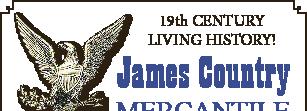
Plus, we have all sorts of other cool stuff going on there. Be sure to subscribe to the Emerging Civil War YouTube channel to get all the latest.

actions. The two that get all the attention was the final action at Saratoga, N.Y., in 1777, that solidified French involvement for the American cause in the American Revolutionary War, and the British surrender at Yorktown in 1781.
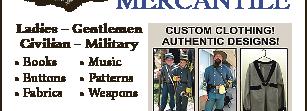



A significant action on the outskirts of Philadelphia on Oct. 4, 1777, also weighed heavily in French considerations. That battle, Germantown, was the focus of a “Rev War Revelry” Zoom chat and a recent publication by our friends at Savas Beatie, LLC, authored by Michael C. Harris. To check that video, head over to Emerging Revolutionary War’s Facebook page: https://www.facebook. com/emergingrevwar/.
The fourth action happened in 1780 in northwest South Carolina, at Kings Mountain, where American militia, the “Overmountain Men,” destroyed a Loyalist contingent led by Major Patrick Ferguson. This action was also covered in a “Rev
War Revelry.”
In early November, ERW historians will be heading to Virginia for some research and site
exploration. We’ll bring these sites, virtually, to you. Continue to check the blog (www.emergingrevolutionarywar.org) and
ECW Bookshelf
The latest book in our Engaging the Civil War Series is now out: Imagining Wild Bill: James Butler Hickok in War, Media, and Memory by Paul Ashdown and Edward Caudill, published by Southern Illinois University Press.

We also make a number of our interviews available as free podcasts on our Patreon page: https://www.patreon.com/ emergingcivilwar.
By Phill Greenwalt
October saw four pivotal

39 December 2020 Civil War News 39 December 2020 Civil War News
The ECW YouTube
Living historian David T. Wright portrays “Wild Bill” Hickok on the cover of the newest Engaging the Civil War Series release. Chris Mackowski.
Subscribe at CivilWarNews.com
CIVIL WAR BOOK,___ B mv 11:
Civil War News book reviews provide our readers with timely analysis of the latest and most significant Civil War research and scholarship. Contact email: BookReviews@CivilWarNews.com.

Lincoln: The Silent Abolitionist Aroused
Lincoln and the American Founding. By Lucas E. Morel. Notes, bibliography, index, Southern Illinois University Press, siupress.com, 2020, 165 pp., cloth, $24.95.

Reviewed by Wayne Wolf
Two Bloody Weeks in May 1864
Decisions at The Wilderness and Spotsylvania Court House: The Eighteen Critical Decisions that Defined the Battles. By Dave Townsend. Maps, photos, illustrations, diagrams, bibliography, endnotes, appendices, 382 pp., 2020. The University of Tennessee Press, www.utpress. org. $34.95, paperback.

Reviewed by Gould Hagler
appropriately and never delves into “what if” history.
This book, one of the Concise Lincoln Library Series, analyzes Lincoln’s reliance on his interpretation the nation’s Founding Fathers’ intent to shape his opposition to slavery and its expansion. Energized by the 1854 Kansas-Nebraska Act, Abraham Lincoln, the silent abolitionist, jumped back into politics to force America to accept the principles of human equality and individual rights that he believed would provide common ground for diverse people to live together in harmony. Additionally, safeguarding the right of people to self-government was the key to preserving democracy, not only for the United States but as a model for the whole world.
Beginning in the late 1850s, Lincoln’s speeches were aimed at convincing the Civil War generation to appreciate what the foundation documents, the Declaration of Independence and the Constitution, meant and how they could be interpreted to secure liberty and equality for all. These two documents
formed the sine qua non of Lincoln’s political thought. He never strayed from his interpretation of what the Founding Fathers desired, contending that they supported the eventual elimination of slavery, accepting it initially only as a necessary evil to unite the colonies.
To Lincoln then, human equality was to be the driving force of the Republican Party’s national public policy. By standing up for equality and individual rights of Black Americans, White Americans could be taught how to defend their own rights.
While over 16,000 books have been written about Abraham Lincoln, Lucas Morel has found a niche that exhaustively chronicles the shaping of Lincoln’s political views on slavery. Lincoln’s political growth has been covered in numerous other volumes, e.g. Michael Burlingame’s Abraham Lincoln: A Life and Kenneth Winkle’s The Young Eagle: The Rise of Abraham Lincoln, Morel limits his concise analysis to how Lincoln used the Declaration of Independence to refute his critics on the slavery question and establish an unbending path toward emancipation and full equality.
This book is well researched, makes ample use of primary sources, and is well written and academic in its presentation.
My only criticism is the frequent repetition of material that needlessly elongates the text. For most Lincoln scholars, much of this material has already been read, leaving a recommendation for purchase to those scholars who wish to narrowly address Lincoln’s speeches on the slavery question.
Wayne L. Wolf is Professor Emeritus at South Suburban College, past President of the Lincoln-Davis Civil War Roundtable, and the author of numerous books and articles on the Civil War, including Two Years Before the Paddlewheel and The
Decisions at The Wilderness and Spotsylvania Court House, authored by retired engineer Dave Townsend, is the seventh in a series of books published by UT Press that analyze critical decisions made by Federal and Confederate commanders and the impact those decisions had on the course of the fighting. Previous books in the series cover four battles (Stones River, Second Manassas, Chickamauga, Chattanooga) and two campaigns (Atlanta and the 1862 invasion of Kentucky). Townsend dissects decisions that defined the opening battles of the Overland Campaign. Some of the analysis relates to very large issues, Lincoln’s selection of Grant as general-in-chief being the biggest of them all, a decision that defined the campaign as a nonstop slugfest from May 1864 until Lee’s surrender nine months later. In other cases, the author drills down to relatively minor tactical matters, such as Fitzhugh Lee’s decision to defend the Brock Road north of Spotsylvania by mounting a fighting, step-by-step retreat.
For each of the 18 key decisions Townsend starts with a concise explanation of the options available, then expounds on the one chosen, and next proceeds with analyzing the decision’s impact. In some cases he also discusses alternate scenarios, what could have happened had another choice been made, but the discussion is confined
In the preface, the author states that the book’s “fundamental premise is that the reader is somewhat familiar with what happened during the battles.” There is, consequently, somewhat less focus on what happened and more on why events happened. Still, considerable space is devoted to an account of the course of the two battles, a narration that will be helpful for readers not thoroughly familiar with all the details. For most readers, I believe, Townsend has struck the proper balance.
Townsend relies mainly on primary sources, weighing their reliability carefully and giving more credence to orders and correspondence contemporaneous with the battle. He points out that after action reports were often written after considerable time had lapsed and that the writers of memoirs can have faulty recollections and agendas other than historical accuracy.

Minor mistakes, and I spotted a few typos and noticed that Shelby Foote’s famous work is cited as having four volumes, not three, are not numerous or serious enough to distract or detract. More significant is the overall plan by which the book is organized.
The four main chapters comprise 166 pages containing the analysis of the commanders’ options and decisions. These chapters naturally contain the battle narrative referred to above.

The first appendix, a battlefield guide, is 127 pages. Much of this long appendix is devoted to additional battle narrative. The result is a disjointed and sometimes repetitive account.
The format is somewhat inconvenient and may cause confusion for the reader, but this is far from a fatal flaw. The narration, though split up, is written clearly. The maps—essential for the reader following these complex operations—are also well done.
Appendices II and III provide the Union and Confederate orders of battle. You can’t tell the players without a program, and in this campaign there were lots of players, big players making the decisions being analyzed and the lesser lights trying to carry them out.
Gould Hagler is a retired lobbyist living in Dunwoody, Ga. He is a past president of the Atlanta Civil War Round Table and the author of Georgia’s Confederate Monuments: In Honor of a Fallen Nation, published by Mercer University Press in 2014. Hagler speaks frequently on this topic and others related to different aspects of the Civil War and has
Email: ads@civilwarnews.com
40 Civil War News December 2020 40 Civil War News December 2020
Publishers/Authors Send your book(s) for review to: Civil War News 520 Folly Road, Suite 25 PMB 379 Charleston, SC 29412 bookreviews@civilwarnews.com
Deadline for submissions is the 20th of each month.
The Andersonville of the North Comes Alive
Hellmira: The Union’s Most Infamous Civil War Prison CampElmira, NY (Emerging Civil War Series). By Derek Maxfield. Appendices, Footnotes, 192 pp., 2020. Savas Beatie LLC. www.savasbeatie.com. $14.95. Softcover.

Reviewed by David Marshall
become very popular in recent years. In this thoughtful account and compelling analysis of the challenges those in charge of prisoner of war camps, Derek Maxfield does a nice job in explaining the difficulties camp administrators faced in several Northern and all Southern POW camps, and how they succeeded or failed to overcome them.
“Hellmira” is a solid introduction to prisoner of war camp history; it is an outstanding addition to the Emerging Civil War Series.
“Hellmira” actually covers several Civil War prison camps but the volume’s focus deals with the prison camp at Elmira. The book expands its breadth by incorporating topics either ignored or lightly touched on in other Civil War histories.
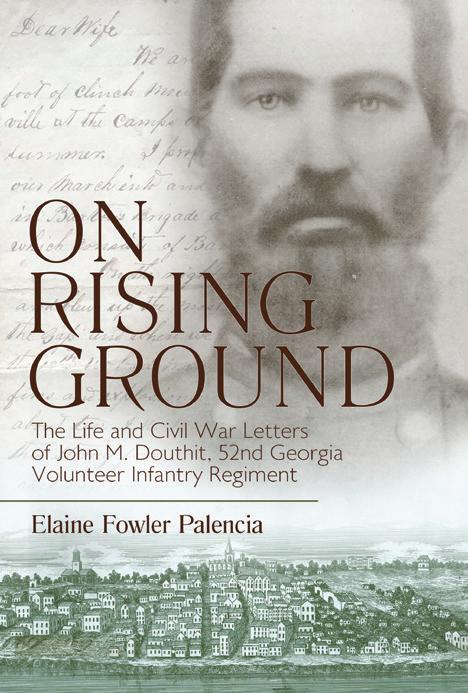
commanders, surgeons, staff officers, and other important Union authorities such as Edwin Stanton.
After setting the scene and spending time analyzing controversial decisions made by individuals such as Lt. Col. Seth Eastman, Benjamin Tracy, Lt. Col. Stephen Moore, Maj. Henry Colt, and Dr. Eugene Sangers, the bulk of the text describes issues that worsened throughout the camps existence. Maxfield blends Union and Confederate accounts with a solid depth and balance.
challenges of war and prison camp. He uses quotes from participants judiciously. The anecdotes spur the reader’s interest and whet the appetites of prison camp enthusiasts. Maxfield makes an important point in his fascinating epilogue chapter on “The Melancholy Debate” that the humanitarian tragedies produced by the POW camps stained the meaning of the U.S. flag.
abundance of helpful images. The text is well written, clear, informative, and easy to read. The result is both an excellent guide book and a history lesson at an attractive price.
Hellmira: The Union’s Most Infamous Civil War Prison CampElmira, NY, is a compelling study that fills gaps in Civil War prison camp historiography that has
Maxfield tells the story of the “Andersonville of the North” from the summer of 1864 to July 1865, doing a solid job of elucidating why it was important and also symbolic of the horrendous treatment of captured Confederate soldiers during the conflict.
Like many historians, Maxfield places blame, and a little credit, on the Elmira Prison Camp
The main text of the book is approachable. Although the author only briefly discusses some topics such as the creation of long term POW camps during the conflict, withholding food due prisoners, the lack of shelters, limited clothing especially during the cold winters, the failed exchange of prisoners, the evolution of Camp Elmira, and the inhumane treatment of the prisoners, Maxfield presents the prisoners’ human experience. Maxfield has included a wealth of first-hand accounts and anecdotes by officers and common soldiers who experienced the
This outstanding title published by Savas Beatie, includes a very useful driving tour that includes ten important stops with their GPS coordinates as well as directions and an explanation of each tour stop. A tour guide and introductory book on any subject must be clear and precise in its directions, which this guide does well. The detail provided at each stop is well-written and not overwhelming. For casual visitors this guide should be a welcome companion during a visit to the Elmira Prison Camp.
An important addition contained in this balanced work is the seven appendices including “How Elmira Gave the World Mark Twain” as well as suggested reading, maps, and an
INTO TENNESSEE AND FAILURE JOHN BELL HOOD
 by Stephen Davis Nov 2020 • $35, hardcover
by Stephen Davis Nov 2020 • $35, hardcover
Overall, Hellmira is a long-needed addition to the story of this prison camp, and it will make a fine addition to the reading list of any serious student looking at POW camps, including those already well-read or those just beginning their journey. Serious Civil War buffs will find the narrative has much to offer; novices should enjoy the introductory story and battlefield trampers will love the well-planned tour route.
David Marshall is a high school American history teacher in the Miami-Dade School district for the past thirty-four years. A lifelong Civil War enthusiast, David is president of the Miami Civil War Round Table Book Club. In addition to numerous reviews in Civil War News and other publications, he has given presentations
In Volume One, Texas Brigadier To The Fall oF aTlanTa (Dec 2019), Stephen Davis traced Hood’s rise from lieutenant of cavalry in Virginia to commanding general of the Army of Tennessee. Here in Volume Two, inTo Tennessee and Failure, Davis picks up the story in September–October 1864, tracing Hood and his army into North Georgia and Alabama, then on to Tennessee in late November at Spring Hill and Franklin. Then to the battle of Nashville on December 15-16, where the Army of Tennessee was routed from the field. By the time it ended its retreat in North Mississippi, Confederate authorities were ready to relieve Hood from command. Seeing it coming, the general offered his resignation in January 1865. Davis’s theme in Volume One was the ambition that drove Hood to seek higher and higher rank. Here, while recognizing Hood’s loyalty to the Confederate cause, he discerns Hood’s unflattering traits: questioning the courage of his men, bickering with other generals, and concealing from his superiors the extent of his disaster in Tennessee.
INCIDENTS IN THE LIFE OF CECILIA LAWTON
A MEMOIR OF PLANTATION LIFE, WAR, AND RECONSTRUCTION IN GEORGIA AND SOUTH CAROLINA

Jan 2021 • $25, hardcover edited by Karen Stokes
Cecilia Lawton’s life was changed forever when the bloodiest war in American history began in 1861. The daughter of a wealthy Georgia plantation owner, she was married at the age of sixteen and went to live at her husband’s plantation in South Carolina, but a few months later, she found herself fleeing from the army of General William T. Sherman as it ravaged the state. She observed the aftermath of this brutal campaign in Georgia and South Carolina, writing of what she saw in vivid, horrific detail. Told in her own words, this is the true story of Cecilia Lawton, a young woman who faced incredible challenges with determination and courage.
ON RISING GROUND
THE LIFE AND CIVIL WAR LETTERS OF JOHN M. DOUTHIT, 52ND GEORGIA VOLUNTEER INFANTRY REGIMENT
by Elaine Fowler Palencia Jan
2021 • $27, hardcover
When John M. Douthit enlisted as a private in Fannin County’s 52nd Volunteer Infantry Regiment in 1862 and marched to train at Camp McDonald, he left behind a pregnant wife, an eighteen-month-old daughter, and a small farm. A precious cache of family letters traces him to south of Cumberland Gap, Kentucky, Murfreesboro, and finally to Vicksburg, where five North Georgia regiments solidified into what became known as the Barton-Stovall Brigade. The author, John’s great-great granddaughter includes family stories and her own mother’s memories of John’s wife Martha.
41 December 2020 Civil War News 41 December 2020 Civil War News
toll-free
www.mupress.org 866-895-1472
s
Subscribe at CivilWarNews.com
They Left Us Here To Die Illumination of Vital, Yet Often Overlooked, Civil War History Along the Rio Grande Valley
Andersonville: An American Tragedy. By William Baird. Illustrated, bibliography, William Baird Publishing, 2020, 188 pp., softcover. $11.99.

Reviewed by Wayne L. Wolf
untrained local militia to guard the prison, and the deteriorating condition of Southern railroads that hindered the supply chain to the prison.
Accompanying the logistical challenges noted above, the author weaves in the personal stories of men connected with the prison. For example, Dorence Atwater, who kept a secret dead list of prisoners at the fort, John McElroy who published his personal story as a prisoner in 1879, Fr. Peter Whelan, the Catholic priest who sacrificed his own health to minister to the religious needs of the prisoners, and Captain Henry Wirz, who became the only Confederate executed for war crimes, give faces to the tragic number of dead and dying men of Andersonville.
The Civil War on the Rio Grande, 1846–1876. BachaGarza, Roseann, Christopher L. Miller, and Russell K. Skowronek, eds. College Station: Texas A&M University Press, 2019. 326 pages, photos, maps, bibliography, index, preface, and endnotes by chapter, with foreword by Gary Gallagher. Paperback, $37.50.
Reviewed by William J. Bozic Jr.
in which we live in now.”
A prelude that defines the mindset of the authors is followed by an outstanding narrative of the early Rio Grande settlement written by Christopher L. Miller. This is an absolute must read because it sets the stage for everything else in the book, and also helps the reader understand the modern Rio Grande Valley because many of the same families who initially settled the region are still the powerbrokers. Author Douglas Murphy’s second chapter deals with the connection between the Mexican War and the Civil War, plus goes a long way toward explaining the reasoning behind book’s title.
McBride covers the US Colored Troops, largely from Kentucky, who occupied the valley from 1865 to 1867. That chapter is followed by the African-American military experience along the Rio Grande by James Lieker. There are some nice photos of existing buildings created by these African-American troops with compelling new information well worth getting the book.
In this self-published work of the tragedy on Andersonville, William Baird has crafted a story of the prisoners, guards, doctors, and clergy who ministered to the thousands of Union soldiers imprisoned on land farmed by Benjamin Dykes. Over 13,000 Union troops died at Ft. Sumter (Andersonville) in little over a year beginning in February 1864. What caused this massive loss of life was analyzed and five overriding factors were deemed responsible.
The first of these factors was the performance of Gen. John H. Winder. Overall commander of Confederate prisons, Winder’s inability to get the needed supplies of food, lumber, and medicine to the improperly housed prisoners left Andersonville prisoners to starve, live in vermin infested “shebangs,” and die from lack of medicine or proper hospital shelter.
Secondly, the murky Confederate chain of command not only hampered General Winder but made the work of post commander Henry Wirz and medical doctors, impossibly hard to procure materials. Added to these two causes was the local populace’s opposition to the impressment of food supplies they themselves needed for survival, the increasing manpower needs of the Army of Northern Virginia that left only
Additional events of courage and generosity add a sense of self-sacrifice to the men of Ft. Sumter. For example, Fr. Whelan took out a personal loan to provide 16,000 loaves of bread to prisoners; the discovery of an unpolluted spring gave fresh water that saved lives; Capt. Wirz’s parole of prisoners who traveled to Washington to beg President Lincoln to resume prisoner exchanges (he never met with them), and the tireless work of Clara Barton to get word of prisoner’s fate to their waiting families, all shine as people helping people in a time of great need.
Two historical errors appear in this novel. Camp Chase was located in Ohio not Chicago; Jefferson Davis died in 1889 not 1869. Additionally, an editor might have eliminated a number of grammatical, punctuation, type setting, and spelling errors. Nevertheless, this book is recommended for the novice historian who wants a quick overview of Andersonville prison. More comprehensive analyses can be found in Ovid Futch’s History of Andersonville Prison Revised Edition or William Marvel’s Andersonville: The Last Depot.
Wayne L. Wolf is Past President of the Lincoln-Davis Civil War Roundtable and the author of numerous books and articles on the Civil War including The Last Confederate Scout and Two
If asked when the war started, many Civil War buffs would say with the firing on Fort Sumter in April 1861, and if asked when the war ended, some Civil War buffs might answer Appomattox Courthouse with the surrender of Robert E. Lee’s Army of Northern Virginia, others might say Bennett Place where Joseph E. Johnson’s remnants of the Army of Tennessee surrendered. Some might even propose Citronelle, Ala., or Galveston, Texas. Of course there is room for many other answers depending on how we determine the start or end of the conflict, so with this in mind The Civil War on the Rio Grande 1846 to 1876 supplies food for thought.
The book is a collection of 11 essays dealing with various aspects of the war, and, in particular, how to redefine the chronology and location based on an interpretation that the first US troops entered the area in 1846 and the war really didn’t end until military Reconstruction stopped in 1876. The Rio Grande Valley is described as a coastal plain from Laredo to the Gulf of Mexico. It is postulated in the book that “The intersections of races, cultures, economic forces, historical dynamics, and individual destinies that made up the unique world of the Rio Grande Valley are the same as those that made the contemporary United States and the increasingly interconnected and messy world

Chapter 3, by M.M. McAllen, is concerned with life along the lower Rio Grande Valley during the Civil War, adding insights into topics not usually covered.
Roseann Bacha-Garza handles race and ethnicity along the antebellum Rio Grande along with the emancipation of slaves and mixed race colonies in Chapter 4. Irving W. Levinson covers the separate wars and shared destiny of Mexico and the United States in Chapter 5.
Readers should keep in mind that Mexico was engaged in its own civil war between conservatives supported by the French vs. liberals favored by the Lincoln administration. While evading the naval blockade strangling the Confederacy, the Confederates often allied themselves with the more conservative French supported government of Emperor Maximilian to obtain much-needed military supplies and sell valuable cotton to anxious buyers from around the world. This chapter delves into complex economic, military, political, and social issues, and will probably be a great history lesson for those unfamiliar with the impact of, and on, Mexico.
In Chapter 6, Jerry Thompson discusses the conflict between troops led by Confederate José de los Santos Benavides and his nemesis Juan Cortina. It’s an oversimplification to say this was a family feud that lasted generations, but not far off, so the chapter is extremely interesting to read and enlightening. In Chapter 7 Karen and Tom Fort examine the impact of cotton, the lifeblood for the region and the reason for existence of the Mexican town of Baghdad. In chapters 8 and 10 Stephen
Rolando Garza, a veteran National Park Service battlefield archaeologist, does a superb job of providing archaeological insights into the site of the Civil War’s last battle (Palmito Ranch May 12-12, 1865). Russell Skowronek puts the icing on the cake for this book with his chapter on the Rio Grande area as a forgotten front of paramount importance. Having all this material available in a quick reference makes the book a must for those interested in this overlooked facet of the war. For those who find this region especially interesting, a more detailed narrative history can be found in Michael L. Collins, A Crooked River: Rustlers, Rangers, and Regulars on the Lower Rio Grande, 1861–1877 (2018). For those who want to read a great military history devoted to the battles at Palmito Ranch, Ginn and McWhorter’s Palmito Ranch: From Civil War Battlefield to National Historic Landmark (2018) is more highly recommended because it will provide specifics related to the military tactics and the regional strategy from a combat arms perspective.
William J. Bozic Jr. is the former National President of the Descendants of Mexican War Veterans www.dmwv.org . A former school teacher, he is a Park Guide at Jean Lafitte National Historical Park & Preserve in Lafayette and Eunice, Louisiana www.nps.gov/ jela. He travels frequently to South Texas and is currently working on the final stages of Indianola Incidents, a book concerning the 1863-4 Federal occupation of the Texas port city. He has also gained much practical, hands-on experience participating in numerous historical movies as a reenextra.Subscribe
42 Civil War News December 2020 42 Civil War News December 2020
online at CivilWarNews.com Deadlines for Advertising or Editorial Submissions is the 20th of each month. Email to ads@civilwarnews.com
A portrait of the momentous day of Lincoln’s Second Inaugural Address
Every Drop of Blood: The Momentous Second Inauguration of Abraham Lincoln. By Edward Achorn. Appendix, Notes, Bibliography, and Index, 414 pp., 2020. Atlantic Monthly Press, groveatlantic.com. Cloth. $28.

 Reviewed by David Marshall
Reviewed by David Marshall
outstanding narrative reads like a fast-paced novel but provides vivid descriptions of what went on before March 4, 1865, events surrounding that day, the period following, and the effects his message and assassination had on the country. This story is told from the perspective of not only Abraham Lincoln but many soldiers such as Union General’s Ulysses S. Grant and William Sherman, statesman and Supreme Court Justice Salmon Chase, politicians such new Vice President Andrew Johnson, Clara Barton, poet Walt Whitman, Frederick Douglass, family members such as Mary Lincoln, and assassin John Wilkes Booth. Edward Achorn examines Washington’s important individuals who played key roles ending the Civil War and influencing the direction of the U.S. following the great conflict and historic speech.
Vignettes of Coastal North Carolina’s Civil War

Lincoln that he liked his speech on the other hand; Booth was preparing to kill him. This excellent historian shows that many people regard Booth as a coward and his actions did a terrible disservice to U.S. reconciliation and civil rights for blacks.
Gunboats, Muskets, and Torpedoes Coastal North Carolina 1861–1865. By Michael G. Laramie. Photographs, maps, notes, Glossary, index, 347 pp., Westholme Publishing, Yardley, PA.

By March 4, 1865, the four years of conflict were coming to an end leaving over seven hundred thousand American soldiers dead, the Union preserved, and the United States changed forever with the end of slavery. Tens of thousands packed the capitol grounds to witness Abraham Lincoln take the oath of office for his second term as President. Edward Achorn tells a moving story about Washington’s divided power groups, the intrigues after the second inaugural address, and the difficulties Abraham Lincoln had in ending the war and healing the country.
There have many books written on the life of Abraham Lincoln, his presidency, and involvement in the Civil War but few provide so much detail and new information concerning his Second Inaugural speech. This
Every Drop of Blood’s epilogue; The Stuff to Carry Them Through, provides an excellent understanding of what happened following the Second Inauguration. Many radical Republicans such as Ohio senator Benjamin Wade and Michigan senator Zachary Chandler were very hostile toward Lincoln’s plan of reconstruction and, in many ways, the author shows how several were not unhappy with his assassination. One argument Achorn makes is that the Sixteenth President’s righteousness toward the defeated South did not necessarily protect former slaves from Southern discrimination nor the dominating control of reconstruction by radical Republicans. Additionally, Edward Achorn provides an important comparison of two contrasting men, Frederick Douglass and John Wilkes Booth, that offers an important analysis of their actions, thoughts, and meaning about what transpired on March 4 and April 14. Douglass stated to
The words and message of President Abraham Lincoln’s 2nd Inaugural Speech offering reconciliation with the South were not initially admired nor supported by all Democrats, Republicans, Northerners and Southerners. In time it would be viewed as one of the most important speeches in American history and critical to the country moving forward as one nation. This speech and Lincoln’s Gettysburg Address are today on two walls of the Lincoln Memorial where future generations can read and allow these words to resonate for generations. Achorn provides the historical context and importance of Lincoln’s final sentence in his 2nd Inaugural speech, “with malice toward none; with charity for all…,” in 1865 as well as since and today.
This book’s organizational clarity and descriptive description, coupled with the author’s interpretive insights, enable the reader to grasp both details and the larger picture of The Momentous Second Inauguration of Abraham Lincoln. Achorn makes a substantial contribution to scholars and students with this important monograph on the last important words of our 16th President by providing fresh insight that helps readers understand the motivation, strategies, tensions, controversies, and triumphs that characterized the life of Lincoln and Atlantic Press provided readers with 41 helpful images as well as an extensive bibliography, notes, and index. Achorn has delivered a readable study that breaks new ground, is lively, contains interesting engaging prose, ably illuminates the topic, and makes the subject accessible to anyone. This reviewer highly recommends this new study.
David Marshall is a high school American history teacher in the Miami-Dade School district for the past thirty-three years. A lifelong Civil War enthusiast, David is president of the Miami Civil War Round Table Book Club. In addition to numerous reviews in


Reviewed by Lawrence E. Babits
glaring is his constant, except for one example, use of the word pound to describe cannon. He cannot really believe a siege and garrison cannon weighed only 32 pounds; the weight of its solid shot, hence 32-pounder. His misuse of cheval de frise when slashing or abatis is meant goes along with “mini” balls, bursting solid shot, and “twenty-round cartridge boxes,” suggesting he gets the overview but not the details. This reviewer understands what the author meant but found the terminology jarring and indicative of a lack of knowledgeable editorial oversight.
This new book is a beginner’s overview of the Civil War on North Carolina’s coast. In 21 chapters that are basically snapshots of the two initial campaigns and the continuing efforts by both sides to take, or keep, control of the sounds and coastal waters. It follows in the footsteps of John Barrett’s The Civil War in North Carolina (1963) but limits its scope to the coast where it goes into more detail but does not compare in either accuracy or detail with R. Thomas Campbell’s Storm over Carolina The Confederate Navy’s Struggles for Eastern North Carolina (2005) or William R. Trotter’s Ironclads and Columbiads (1989).
The general impression is that this effort is directed at readers starting from a basic, rudimentary knowledge of what happened as Confederates mismanaged and lost key positions and then tried to both protect their interior rail lines and take back what they had lost. The text reads well and is easily understood; even in the midst of the flow, his including specific participant accounts does not distract the reader. The author’s own maps are far better than the difficult to read copies of historical maps. The epilogue is a very useful summary of what happened and why; it could stand alone as a journal article.
There are a number of inconsistencies and errors that will irritate people with a bit more than basic knowledge. The most
Many secondary sources are outdated but there are some surprising current materials including fairly recent archaeological studies not generally found in more popular historical writing. All in all, Laramie has put together a good starting point for anyone wanting to look deeper at the War beyond the Armies of Tennessee and Northern Virginia.
Larry Babits has been reenacting since 1960. He served in the U.S. Army’s B Company, 21st Infantry (Gimlets) during 1963–1966. Babits earned degrees at Maryland and Brown leading to a career teaching archaeology and military history at Washington and Lee, Armstrong State, and East Carolina. A retired rugby player, Larry is now working on the sequel to his studies of the 1781 battles of Cowpens and Guilford Courthouse although he admits to taking breaks from corona self isolation to practice black powder marksmanship, getting

43 December 2020 Civil War News 43 December 2020 Civil War News
Want To Advertise In Civil War News? Email us at ads@civilwarnews.com Call 800-777-1862 CW N Civil War News Inside this issue: H Day see page Remembrance Day, 2019, Gettysburgmembers of the general public –-when Wikipedia estimated there--(Alexander Glisson)






























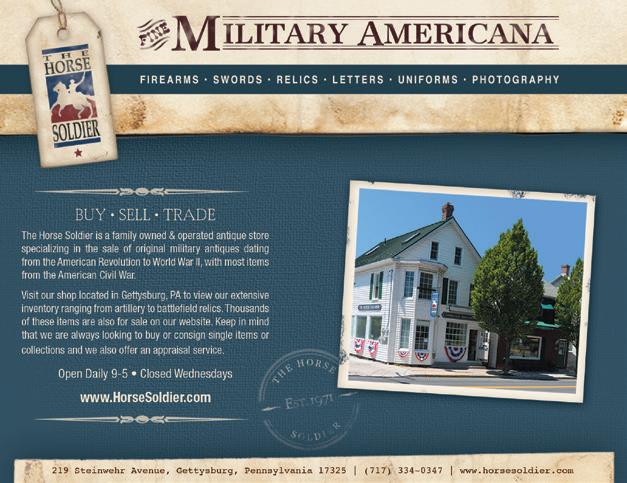
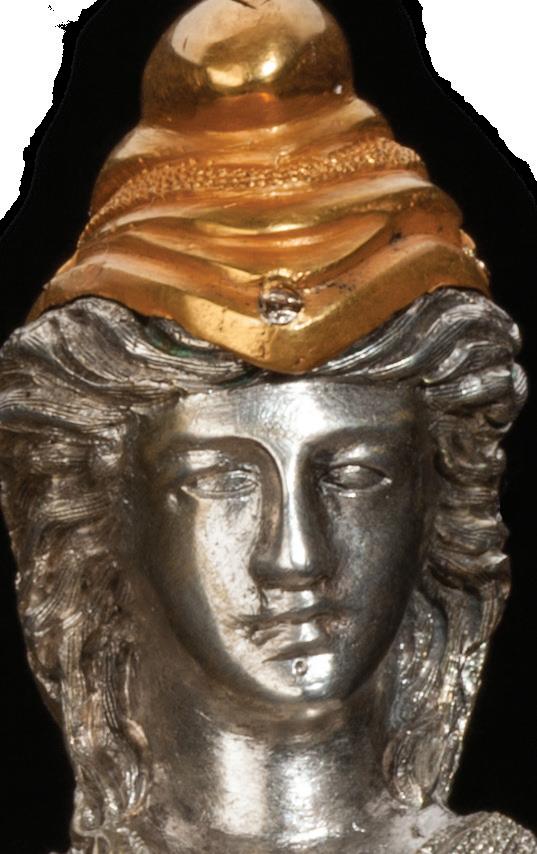

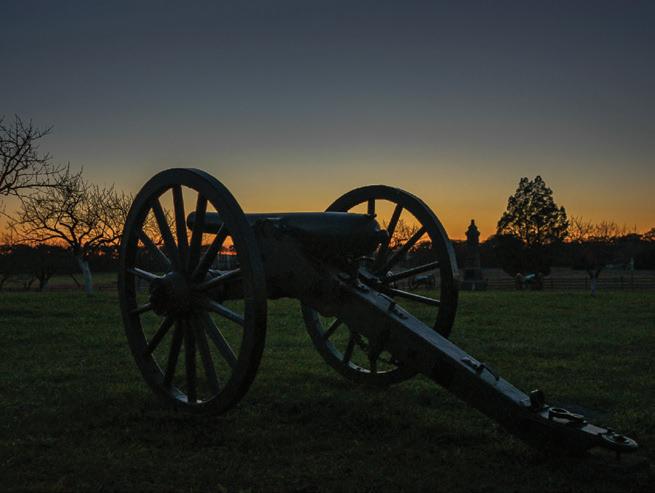










































CivilWarShop.com Offering the Finest Investment Grade Military Memorabilia since 1981 Buy – Sell – Trade Certified Appraisal Services Life Member Company of Military Historians Lynn and Will Gorges, Proprietors 3910 US Hwy. 70 East New Bern, NC 28560 (252) 636-3039 • civilwarshop@gmail.com www.CivilWarShop.com Long Bay Salvage LLC specializes in the recovery and restoration of authentic Civil War Cannon with an emphasis on 10-Inch Columbiads, offering discerning collectors and museums the opportunity to own what has become a rare piece of Civil War history. Long Bay Salvage also works with historical entities (government and private) to recover and conserve large historical artifacts with a specialty in large field and naval artillery pieces. Glenn Dutton Glenn 770-351-7565 Rufus Perdue Rufus 843-315-9818 PLEASE CONTACT US FOR MORE INFORMATION www.LongBaySalvage.com Promoters of Quality Shows for Shooters, Collectors, Civil War and Militaria Enthusiasts Military Collectible & Gun & Knife Shows Presents The Finest Mike Kent and Associates, LLC • PO Box 685 • Monroe, GA 30655 (770) 630-7296 • Mike@MKShows.com • www.MKShows.com Northwest Georgia Trade Center 2211 Dug Gap Battle Road Dalton, GA 30720 February 1 & 2, 2020 Chickamauga (Dalton) Civil War Show Williamson County Ag Expo Park 4215 Long Lane Franklin, TN 37064 December 5 & 6, 2020 Middle TN (Franklin) Civil War Show l Shiloh 2405 Oak Grove Road Savannah, TN 38372 731-438-3541 ShilohRelics.com History@shilohrelics.com owner Rafael Eledge .com Dealing in the Finest Authentic Militaria Since 1995 with an Emphasis on the American Civil War Pistols, Muskets, Carbines, Rifles, Bayonets, Swords, Uniforms, Headgear, Belt Buckles, Cannon, Buttons, Bullets, Artillery Implements Etc. Mid West Civil War Relics MidWestCivilWarRelics.com Allen Wandling Phone: 618-789-5751 Email: awandling1@gmail.com Museum Quality Civil War Union & Confederate Artifacts! We handle the Best Antique Bowie Knifes, Civil War Swords, Confederate D-guards, Antique Firearms, Dug Relics, Buckles & Belts, Identified Relics, Letters, Documents, Images, Currency, Uniforms, Head Gear & Flags. 3500 Shacklett Rd • Murfreesboro, TN 37129 tom@stonesrivertrading.com • (615) 336-2188 StonesRiverTrading.com Tom Hays Proprietor We carry all types of relics, dug & non-dug, Confederate & Federal. 100% Guaranteed. A strong emphasis on dug relics, but also a full line of non-dug relics of all types. Over 30 years experience with a full time, online store since 1997. We also have a shop located five miles from Stones River National Battlefield that is open by appointment. Mid West Civil War Relics MidWestCivilWarRelics.com Allen Wandling Phone: 618-789-5751 Email: awandling1@gmail.com Museum Quality Civil War Union & Confederate Artifacts! We handle the Best Antique Bowie Knifes, Civil War Swords, Confederate D-guards, Antique Firearms, Dug Relics, Buckles & Belts, Identified Relics, Letters, Documents, Images, Currency, Uniforms, Head Gear & Flags. www.CollegeHillArsenal.com Tim Prince College Hill Arsenal PO Box 178204 Nashville, TN 37217 615-972-2418 Preston Bain Nashville, TN (615) 397-5186 www.NashvilleRelics.com Nashville Civil War Relics “Old times there are not forgotten” Buying The 11311 George Carolina Antique Arms Civil War Period Arms & Equipment Michael Dyches www.CarolinaAntiqueArms.com Phone: 864-871-5325 Email: mdyches.ogma@gmail.com Buying and Selling The Finest in Americana 11311 S. Indian River Dr. • Fort Pierce, Florida 34982 770-329-4985 • gwjuno@aol.com George Weller Juno P.O. Box 342 Thompsons Station, TN 37179 615-585-0115 Email: brubon2@bellsouth.net Franklin Relics P.O. Box 342 Thompsons Station, TN 37179 615-585-0115 Email: brubon2@bellsouth.net Franklin Relics Specializing in Accoutrements, Edged Weapons, Firearms and Uniforms FranklinRelics.com Bruce Hohler Proprietor Specializing in Buttons, Buckles, Currency, Hat Devices and other Military Artifacts. www.AmericanRelics.net Allen Phillips 1014 Reservoir St., Suite B Harrisonburg, VA 22801 American Relics Phone: 540-476-1969 Email: americanrelicsnet@gmail.com www.CivilWarBadges.com Everitt Bowles, Owner • 770.926.1132 1036 Washington Avenue Woodstock, Georgia 30188 The Largest Selection of GAR & UCV Hundreds of Memorabilia Items from Rev War through Vietnam Secure & Easy Guaranteed Authenticity of Every Item Vin Caponi Historic Antiques Vin Caponi, Jr. 18 Broadway Malverne, NY 11565 Store: 516-593-3516 Cell: 516-353-3250 rampantcolt@aol.com http://www.vincaponi.com We carry a very large inventory of Colt and Civil War firearms including muskets, carbines, rifles and accoutrements. Our inventory of historic antiques and firearms begin at the early collectors level and range all the way up to the advanced collector and investors level. 8895 Town and Country Circle • Knoxville, TN 37923 Phone: 865-693-3007 info@armyoftennesseerelics.com Civil War Artifacts Nick Periut Proprietor ArmyofTennesseeRelics.com Buying and Selling High Quality Images, Belt Buckles and Plates, Artillery Shells, rare Bullets and Buttons! Richard Gersten (708) 786-8630 PO BOX 31113, CHICAGO, ILLINOIS 60631 www.YankeeCollector.com Specializing in Early Americana, Civil War American Indian, Old West, WW I & II Guns, Swords & Memorabilia www.uniondb.com 34 York St • Gettysburg, PA 17325 Phone: 717-334-2350 • Email: bsynnamon@gmail.com Specializing in Authentic Civil War Artifacts The Union DrUmmer Boy Courtesy Library of Congress A Museum Where You Can Shop! Contact Glenn Dutton at: glennjdutton@aol.com or 770-351-7565 BUYING & SELLING Field & Heavy Artillery Cannon, Shells, Fuses & Etc. Highly Embellished Rarities Michael Simens HistoricalArms.com Tel: 440-744-9088 • mail@HistoricalArms.net Beauregard’s Gold Inlaid Manhattan Revolver Rare Accoutrements Michael Simens HistoricalArms.com Tel: 440-744-9088 mail@HistoricalArms.net The Only Complete Beaumont-Adams CS Naval Rig Michael Simens HistoricalArms.com Tel: 440-744-9088 • mail@HistoricalArms.net Unusal Firearms Treeby Chain Gun, One Of Only Five Produced The 2020 Civil War Dealers Directory is available to view or download a free copy visit: www. civilwardealers.com/dealers.htm. Here are the current advertisers in this years directory.









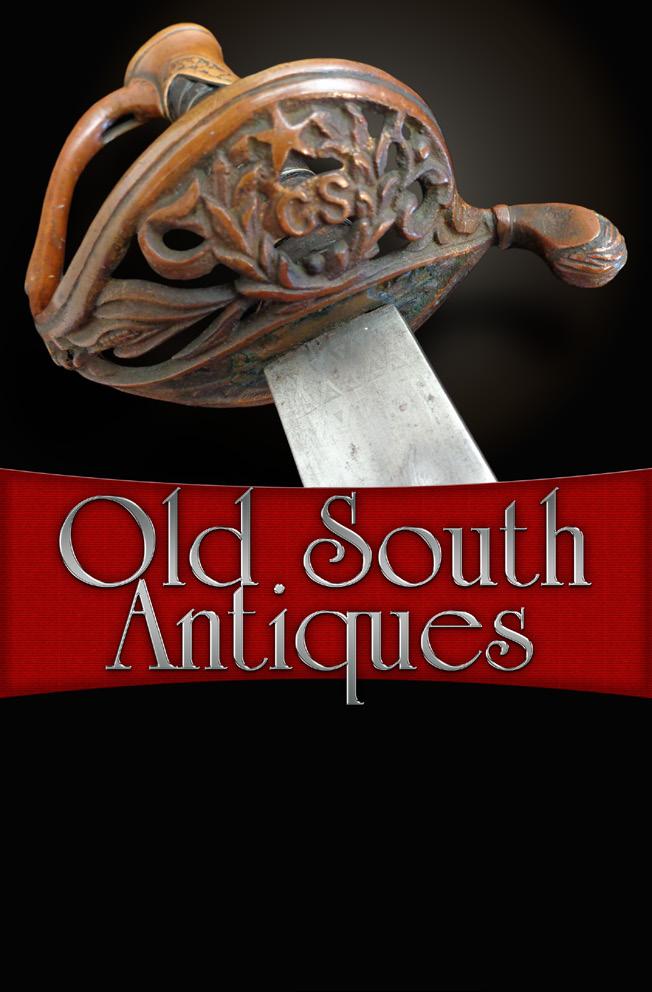






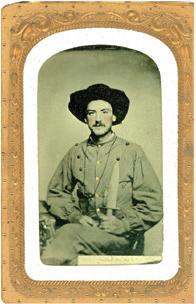
























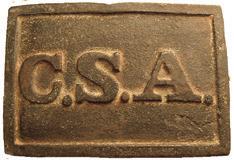









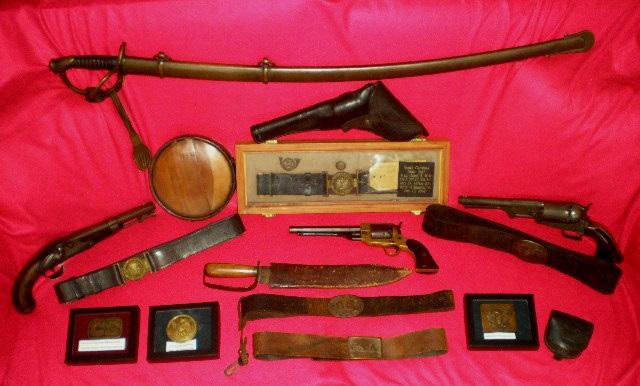









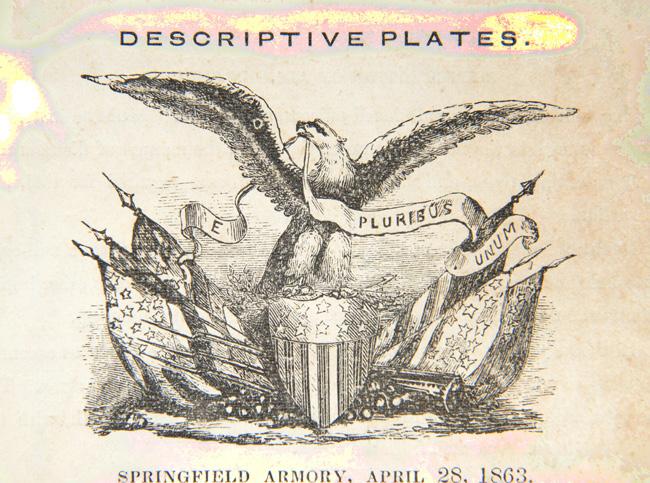





Michael Simens HistoricalArms.com Tel: 440-744-9088 • mail@HistoricalArms.net Beautiful Winchesters A Conrad Ulrich Masterpiece Remarkable Presentations A Gift To Eli Whitney, Jr. Michael Simens HistoricalArms.com Tel: 440-744-9088 • mail@HistoricalArms.net Spectacular Groupings Inscribed And/Or Notarized Provenances Michael Simens HistoricalArms.com Tel: 440-744-9088 • mail@HistoricalArms.net Michael Simens HistoricalArms.com Tel: 440-744-9088 • mail@HistoricalArms.net Magnificent Swords Georgia Presentation To William J. Hardee. Later Confederate Lieut. General. We Buy, Sell, Authentic And Appraise World-Class Historical Artifacts Valuable Colts Michael Simens • HistoricalArms.com Tel: 440-744-9088 • mail@HistoricalArms.net Attributed To Rembrandt Peale Fine Antiques & Militaria Military Items 1650-1945 Armor Swords Firearms Bayonets Equipment Accoutrements www.csarms.com PO Box 602 9150 John S. Mosby Hwy. Upperville, Virginia 20185 Shop Phone: 540-592-7273 Email: sophiacsarms@aol.com C.S. Arms, Inc. Specialize in U.S. & British Militaria Old South Antiques, LLC Hickory Hill Mansion, 9222 Wickham Manor Way, Ashland, VA 23005 CARSON SQUEEGIE JENKINS 321.505.7524 WWW.SQUEEGIE.NET DESIGN SERVICES PRINT MEDIA ILLUSTRATIONS WEB ADVERTISING ANIMATIONS PACKAGE DESIGN CORPORATE BRANDING PRINT & MAGAZINE ADS LOGO DESIGN TEXTILE/ T-SHIRTS WEBSITES DESIGN MENU DESIGNS BROCHURES EVENT POSTERS BUSINESS CARDS 3D RENDERINGS MARKETING NEW BUSINESS START-UP PACKAGES AVAILABLE The Historical Shop Margaret & Cary Delery Box 73244 Metairie, LA 70033 Phone: 504-467-2532 c.j.delery@att.net www.historicalshop.com Since 1978 selling rare Americana Historical Shop The e Early American items through the Civil War artifacts, autographs, photography, currency, bonds, historical displays, military items, and more…… P.O. Box 160 • Kingston, TN 37763 Phone: 803-431-1798 • Email: vann@veteransattic.com www.VeteransAttic.com Vann Martin United Confederate Veterans, Grand Army of the Republic, Civil War Photographs and other Civil War items. Civil War Military Longarms a Specialty ConfederateArmsCompany.com 1209 Victor II Blvd., Morgan City, La. 70380 Cell: 985-518-1802 • Email: leegray@LHprinting.com Lee Gray Confederate Arms Company PO Box 129 Dover, TN 37058 Buying & Selling: Images Artillery Firearms Dug Relics Edged Weapons Non-dug Artifacts John & Nikki Walsh Fort Donelson Relics FortDonelsonRelics.com Full Line Civil War Artifact Dealer Email: john@fortdonelsonrelics.com P.O. Box 160 • Kingston, TN 37763 Phone: 803-431-1798 • Email: vann@veteransattic.com www.VeteransAttic.com Vann Martin United Confederate Veterans, Grand Army of the Republic, Civil War Photographs and other Civil War items. David K. Parks Military Antiques PO Box 180674 Utica, MI 48318-0674 Phone: 586-871-6462 Email: dkpma@comcast.net Offering a large selection of Civil War and Historical Memorabilia ranging from the Revolutionary War to World War I (emphasis on the American Civil War). On line catalog regularly offers over 700 items from nearly every category of collecting. www.RelicsOfHistory.com “Reproduction Antique Spectacles to suit all sights” Authentic reproduction Civil War era eyeglasses to fit your lifestyle. Historically accurate, ophthalmic quality eyeglass frames suitable for reading, distance, bifocals, progressive lenses, sunglasses & nonprescription tinted lenses. Made for full time wear. “Spectacles are most overlooked, most obvious way to spoil an otherwise fine impression.” Thomas Valenza, Optician When you are ready to complete your impression, visit us online for detailed information about our spectacles: www.HistoricEyeWearCompany.com Prices start at $139.95 862.812.4737 Left: Unidentified Union soldier wearing oblong spectacles (Library of Congress) Above Right: First Lieutenant Adam J. Slemmer, defender of Fort Pickens (U.S. Army Heritage & Education Center) The Best Civil War Era Spectacles Buying and Selling original Civil War Confederate & Union Buttons, Belt Buckles, and Accoutrements. NCCivilWarRelics.com PO Box 2122 • Morehead City, NC 28557 • Phone: 252-671-7770 Email: sales@nccivilwarrelics.com or AGaskins1@ec.rr.com Allen Gaskins North Carolina Civil War Relics Robert Jones • 119 Frances Ave. • Stanhope, NJ 07874 Phone: 973-810-2976 • Email: Bob33rd@optonline.net We sell original Civil War artifacts, both excavated and non-excavated. There is also a selection of mid-19th century antiques. Yankee Rebel Antiques www.YankeeRebelAntiques.com Proprietor, Robert Jones, is the author of seven books on Civil War subjects: The Civil War Canteen Civil War Artillery – A Pictorial Introduction Children at the Battle of Gettysburg –Their Unforgettable Summer The Civil War Canteen Second Edition, Battle of Gettysburg –The Relics, Artifacts & Souvenirs, The Civil War Soldier – His Personal Items, and The Civil War Canteen – Third Edition He has also written articles for North/South Trader Civil War magazine. Order his books online at http://www.lulu.com/spotlight/civilwarbooks Promoters of Quality Shows for Shooters, Collectors, Civil War and Militaria Enthusiasts Military Collectible & Gun & Knife Shows Mike Kent and Associates, LLC • PO Box 685 • Monroe, GA 30655 (770) 630-7296 • Mike@MKShows.com • www.MKShows.com February 1 & 2, 2020 Chickamauga (Dalton) Civil War Show November 14 & 15, 2020 Capital of the Confederacy Civil War Show December 5 & 6, 2020 Middle TN (Franklin) Civil War Show l l Antique Flag Conservation Services Save your family heirlooms and valuable textiles Specialist in Civil War flag Restoration and Conservation Custom affordable rates free estimates/fully insured email heritageconservationva@gmail.com Or call Josh Phillips at 540-320-6588 Heritage Conservation, LLC SELLING CIVIL WAR MILITARIA Journey’s End Antiques Antiques • Collectibles Paper Money • US Coins Furniture • Glassware Old Toys, Dolls & Trains Paul Brill apbrill@earthlink.net Home: 910.725.0466 | Cell: 910.638.4542 Southern Pines, NC 28387 journeysendantiques.com Firearms & Militaria Auctioneers or Better! On Expensive Items and Valuable Collections %0 Seller’s Commission The Tradition Continues - New Facility, Same Family and Great Location We are pleased to announce the purchase of the former Auction Facility of World-Renowned Hall-of-Fame Auctioneer James Julia. This acquisition will give us one of the largest firearms auction compounds in the industry with nearly 50,000 square feet of climate controlled and secured space dedicated to the promotion, presentation and handling of fine firearms collections. Our Fall 2019 Firearm Auction generated nearly $5.5 Million in sales for our consignors - Our largest to date! Call our offices to be part of our next Premier Firearms Auction Consignments Now Being Accepted 199 Skowhegan Rd | Fairfield, ME 04937 207-453-2114 civilwar@poulinauctions.com Website: poulinauctions.com Stephen Poulin, ME Lic # 1115 Presentation Sword of Gettysburg Hero General Alpheus Williams (est. $20,000 30,000) Sold $41,125 Sold $41,125 Rigdon & Ansley Confederate Revolver Carried By Captain Luther M. Clements, Co. F, 41st Alabama (Est. $25,000-35,000) Unique 1864 War 6 Tube Cartridge Box 5,000) Sold $7,635 Sold $41,710 Hand Sewn Civil War Era 13 Star Flag (Est. $3,000-5,000) Sold $38,185 Sold $36,425 Confederate Bilharz Muzzleloading Carbine (Est. $15,000-20,000) Loading Percussion Carbine (Est. $20,000-30,000) Loading Carbine (Est. $15,000-20,000) Sold $23,500 Sold $23,500 Fine Cook & Brother Athens Georgia Confederate Percussion Carbine (Est. $20,000-25,000)
The Atlanta Campaign























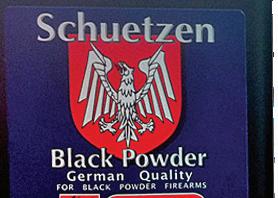














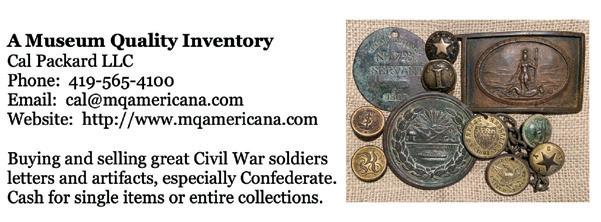







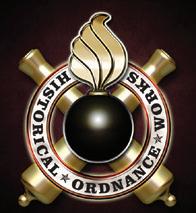





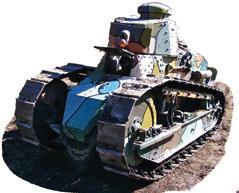











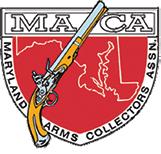






























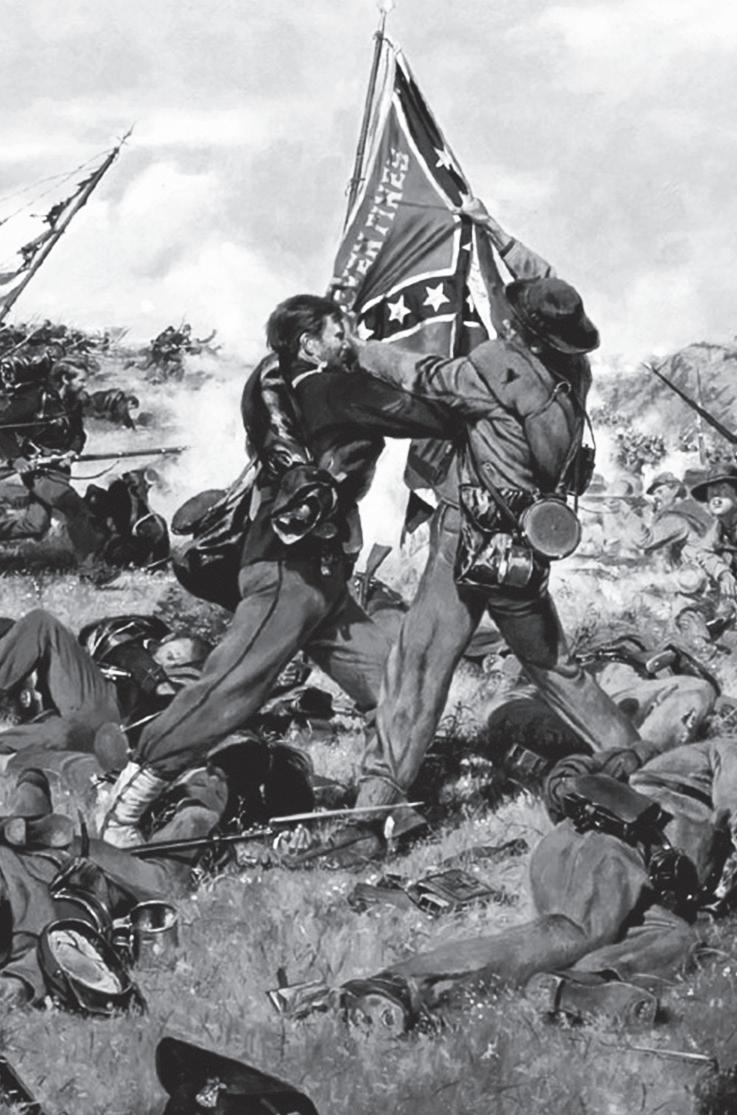





46 Civil War News December 2020 46 Civil War News December 2020 JJ Military Antiques Buying and Selling Original Rev War – WWII Guns, Swords, Bayonets, Molds, Flasks, Tools and Accoutrements. Specializing in all Civil War Union & Confederate Artifacts. www.jjmilitaryantiques.com PO Box 18 • Mt. Bethel, PA 18343 • Phone: 610-599-0766 Email: jjmilitaryantiques@gmail.com THE FINEST HISTORICAL ANTIQUE MILITARIA Wallace Markert info@csacquisitions.com 16905 Nash Road • Dewitt, Virginia 23840 804-536-6413 • 804-469-7362 www.csacquisitions.com JJ Military Antiques Buying and Selling Original Rev War – WWII Guns, Swords, Bayonets, Molds, Flasks, Tools and Accoutrements. Specializing in all Civil War Union & Confederate Artifacts. www.jjmilitaryantiques.com PO Box 18 • Mt. Bethel, PA 18343 • Phone: 610-599-0766 Email: jjmilitaryantiques@gmail.com e American Civil War was the rst war in which both sides widely used entrenchments, repeating ri es, ironclad warships, and telegraphed communications. It was also the rst American War to be extensively photographed. Mathew Brady, Alexander Gardner and Timothy O’Sullivan are famous for having made iconic photographs in the Civil War’s eastern theater. George N. Barnard deserves to be ranked in this top tier for his photographic work in the war’s western theater. A civilian photographer hired by Gen. William T. Sherman’s chief engineer to take pictures of forti cations around Atlanta, Barnard took several hundred of them in and around the city in the fall of 1864. His most famous is the site of Union Maj. Gen. James B. McPherson’s death in the battle of Atlanta, July 22, 1864. us far, no comprehensive, de nitive listing has been made of the photographer’s work. e Library of Congress has 130 images; the U. S. Military Academy at West Point, New York, has at least 98 photographs, donated by Captain Poe’s widow. Other repositories, such as the Gilder Lehrman Institute of American History in New York City, have smaller collections. For this book we have chosen a hundred images we deem “signi cant,” though other students may wonder at some of our selections. We hope that this work will stimulate further interest in Barnardiana, and that other scholarly volumes are yet to come.
100 Signi cant Civil War Photographs: Charleston in the War features newly restored images of scenes in the famed city, taken 1860–1865. e cameramen include the better-known, such as George N. Barnard and George S. Cook, as well as some lesser-known ones: Samuel Cooley, Charles Quinby, the partners Haas & Peale, Osborn & Durbec. Text by Stephen Davis and Jack Melton accompanies each featured photograph, describing the pictured scenes and the history surrounding them. e selected images depict a variety of settings: that portion of Charleston known as e Battery, the “Burnt District” (the area of the city destroyed by the Great Fire of December 1861), the Charleston Arsenal, and the many churches that allow Charlestonians to call theirs “the Holy City.” Special sections of this book are devoted to the huge Blakely guns imported from England by the Confederates and close-ups of Barnard’s views. e history of Civil War Charleston goes back to e Defense of Charleston Harbor (1890) by John Johnson, Confederate major of engineers, and to Reminiscences of Forts Sumter and Moultrie in 1860-’61 (1876) by Capt. Abner Doubleday, Federal second-in-command. Since then Charlestonians have contributed to the history of their city, notably Robert N. Rosen and Richard W. Hatcher III. e historical text surrounding 100 Signi cant Photographs draws on these and other works. A unique feature is its reliance upon the writings of actual participants, such as Augustine T. Smythe (1842–1914) and Emma Edwards Holmes (1838–1910). As a contribution to this literature, 100 Signi cant Civil War Photographs: Charleston in the War o ers rewards for all readers, from the casual novice to the serious student. CHARLESTON IN THE WAR DAVIS & MELTON 100 SIGNIFICANT CIVIL WAR PHOTOGRAPHS CHARLESTON IN THE WAR Stephen Davis & JACK W. Melton JR. ORDER ONLINE AT www.historicalpubs.com GET The STORIES BEHIND THE PHOTOS 100 Signi cant Civil War Photographs: Charleston in the War features newly restored images of scenes in the famed city, taken between 1860–1865. The cameramen include the better-known photographers of the era, such as George N. Barnard and George S. Cook, as well as some lesser-known ones. Detailed descriptions of each scene and the history behind them paint a vivid portrait of life for Charlestonians during the con ict. As a contribution to this literature, 100 Signi cant Civil War Photographs: Charleston in the War o ers rewards for all readers, from the casual novice to the serious student. e Artilleryman is a quarterly magazine founded in 1979 for enthusiasts who collect and shoot cannons and mortars primarily from the Revolutionary War, Civil War to World War II. Now expanded and fully illustrated in rich color throughout the entire magazine. The Artilleryman Magazine magazine SUBSCRIBE TODAY! 520 Folly Road, Suite 25 PMB 379, Charleston, SC 29412 800-777-1862 • mail@artillerymanmagazine.com www.ArtillerymanMagazine.com Civil War Show Civil War Show CARSON SQUEEGIE JENKINS 321.505.7524 WWW.SQUEEGIE.NET DESIGN SERVICES PRINT MEDIA ILLUSTRATIONS WEB ADVERTISING ANIMATIONS PACKAGE DESIGN CORPORATE BRANDING PRINT & MAGAZINE ADS LOGO DESIGN TEXTILE/ T-SHIRTS WEBSITES DESIGN MENU DESIGNS BROCHURES EVENT POSTERS BUSINESS CARDS 3D RENDERINGS MARKETING NEW BUSINESS START-UP PACKAGES AVAILABLE • WEBCAT WEBSITE SYSTEM GrayCat Systems is proud to announce Version 10 of our popular Webcat CMS (Content Management System.) This Internet catalog system easy for the web novice to use yet powerful enough to please an advanced user. To see Web-Cat in action visit www.GrayCatSystems.com backbone connections that delivers optimal performance with absolute scalability. Our experienced and courteous technical sta is led by senior systems architect with over 35 years specializing in information systems designs. All web hosting and software packages are supported 24 hours a day, days a week by our technical team. GrayCat Systems is your answer for professional user-friendly programs and great service. • HOSTING & SOFTWARE DESIGN “GrayCat Systems and Carson Jenkins have helped turn my internet business into one of the web's premiere Civil War artifact sites. wouldn't use any other provider.” Rafael Eledge www.ShilohRelics.com “Expertise, innovation, and dedication to service are hallmarks of GrayCat Systems.” Jack Melton, Jr. Artilleryman Magazine "I can't say enough about the excellence of GrayCat Systems' software and the exceptional quality of their service!" Steve Sylvia North South Trader's Civil War Magazine www.NSTCivilwar.com • BUT DON'T TAKE OUR WORD FOR IT... for more information, visit www.graycatsystems.com 43rd Annual Ohio Civil War Show Including WWI & II 28th Annual Artillery Show Military Material From 1775 Through 1945 Saturday May 2nd – Sunday May 3rd 2020 Sat. 9:00 – 5:00 | Sun. 9:00 – 3:00 Richland County Fairgrounds, Mansfield, Ohio Location: US-30 and Trimble Road 800 Tables of Military Items, Books, Prints and More For Buy, Sell, Trade & Display SPECIAL FEATURES Artillery Demonstrations & Cannon Firing Demonstrations Civil War & WWII Encampments Sutler’s Row Field Hospital Scenario • Period Church Service Camp Chase Fife & Drum & 73 OVI Regimental Band Gettysburg Address Presented by President Lincoln Marlboro Volunteers Traveling Museum & Military Vehicles $7 Admission (includes parking) – Under 12 FREE Handicap Facilities, Food and Door Prizes www.ohiocivilwarshow.com For Information Call: 419-884-2194 Facebook: Ohio Civil War Show Ohio Civil War Show, LLC The Maryland Arms Collectors Assoc., Inc. presents The “Original Baltimore” Antique Arms Show Since 1955 Maryland State Fairgrounds Timonium, MD North of Baltimore, York Road, MD. - Rt. 45 1,000 8-Foot Tables March 21-22, 2020 Public Hours: Sat. 9 to 5, Sun. 9 to 3. Admission: $10.00 – Modern Handguns are Prohibited –Complete information on web site: www.baltimoreshow.com Or Call 443-497-9253 Known as the “CROWN JEWEL” of Collector’s Shows! 1,000’s of Civil War Treasures! Plus! Revolutionary War • Spanish-American War Indian Wars Mountain Men • Bowie Knife Antique Arms • Fur Traders World Wars & II April 25 Sept. 26 2020 • CHICAGOLAND’S NATIONAL 11 Civil War Buttons William Leigh PO Box 145 Hamilton, VA 20159 Phone: 703-777-8549 Email: wmleigh@msn.com Website: http://www.civilwarbuttons.com Collector & Purveyor of American Military Buttons. Our business is founded on the fundamental principle that our customers are our most important resource. Buy with confidence and be assured that the items you order are authentic & accurately represented. Also, interested in purchasing all types of buttons, uniforms, other historical & military items that you may have to offer. Dixie Relics Steve & Melody Strickland PO Box 17 Cumming, GA 30028 Phone: 770-633-5034 Email: 66thgeorgia@bellsouth.net Website: http://www.dixierelicsonline.com eBay ID: Dixierelics Civil War Firearms, Edged Weapons including excavated and non-excavated relics. Our specialty is American Civil War but we do deal in World War and World War II militaria. Hayes Otoupalik Militaria PO Box 8423 Missoula, MT 59808 Phone: 406-549-4817 Email: hayesotoupalik@aol.com Website: http://www.hayesotoupalik.com We have been collecting and dealing in American Militaria from 1830 to 1960 for over 45 years. We Buy, Sell, Trade, Appraise. Your satisfaction is always assured. See our website for over 5,000 assorted items for sale. American Militaria 12 J h J H y ANT QUE AND COLLECTOR WEAPONS G t y b g PA j h y h 717 337- 3013 Historical Publications LLC Jack & Peggy Melton 520 Folly Road Suite 25 PMB 379 Charleston, SC 29412 Phone: 800-777-1862 Email: mail@civilwarnews.com Email: mail@artillerymanmagazine.com Website: http://www.CivilWarNews.com Website: http://www.ArtillerymanMagazine.com Owner and publishers of Civil War News and publisher of The Artilleryman Magazine. Historical Ordnance Works Thomas J. Bailey PO Box 2236 Woodstock, GA 30188 Phone: 770-928-2298 Email: TBa6518757@aol.com Website: http://www.historicalordnanceworks.com Museum Quality Reproduction & Restoration of Civil War Era Ordnance, Tools and Implements. Cannon carriages built and repaired. GET SERIOUS ABOUT COLLECTING! “LET’S CHARGE TO VICTORY!” in JOSHUA’S ATTIC website. Specializing in Photos, Insignia, Weapons, Shells, Plates, Accoutrements and Anything Cool. Visit: www.JoshuasAttic.com 13 LostNFoundRelics Robert & Honey Bushnell 1011 Madison Street Shelbyville, TN 37160 Phone: 931-580-0778, 931-492-4777 Email: quality1@cafes.net Email: lostnfoundrelics@gmail.com Website: http://www.lostnfoundrelics.com We sell artifacts from Medieval, Viking, Civil War, WWII and all ERAS in between. All items are guaranteed authentic. MidTenRelics/YesterYear Larry Hicklen 3511 Old Nashville Hwy. Murfreesboro, TN 37129 Phone: 615-893-3470 Email: larryhicklen@comcast.net Website: http://www.midtenrelics.com Since 1977! Our specialty is museum quality Civil War artifacts for sale, both Union and Confederate items including artillery, swords, rifles, muskets, belt buckles, buttons, currency, images, and documents. Visit us online, at shows and by appointment only. North MS Civil War Relics Tony & Lydia Moore 357 Hwy. 72 E, PO Box 83 Burnsville, MS 38833 Phone: 662-802-0041, 662-665-2290 Email: Tony@nmsrelics.com Website: http://www.nmsrelics.com We offer a wide range of Civil War relics – always having plenty of excavated items. We are always looking to purchase “New” items. Come by our shop or call/email us and be sure to look for us at most major shows. 14 Rick Burton’s Civil War Antiques 931-B S. Main St. #110 Kernersville , NC 27284 Phone: 336-830-1203 Email: ccrelics@ccrelics.com Website: http://www.ccrelics.com Authentic Civil War Military Items with emphasis on Confederate. Revolvers, muskets, carbines, swords, knives, pistols, buttons, bullets, belt plates, cannon and artillery projectiles. We sell both non-dug and dug relics, Union and Confederate. We also offer military objects from the American Revolution, War of 1812, Mexican War, Indian War, World War I and World War II. Regimental Headquarters Karen Eubanks PO Box 5257 Falmouth, VA 22403 Phone: 540-455-7691 Email: regimentalhq@cox.net Website: http://www.regimentalheadquarters.com Ebay User Id: Regimentalheadquarters Authentic American Civil War Artifacts. Dug & non-dug. Specializing in Buttons and ID tags. I setup at many shows and also sell on eBay. Over 30+ years experience. Contact me if there is something you are looking for. RegimentalHeadquarters.com Pecard Leather Care Co. Phil Wadzinski Reanna Rosloniec 1836 Industrial Dr. Green Bay, WI 54302 Phone: 920-468-5056 Email: info@pecard.com, reanna@pecard.com Website: http://pecard.com Handcrafted conditioners for every type of leather in today’s marketplace. Small, family owned and made in the USA since 1902. Pecard Leather Care Dressing, lotions and oils will preserve, protect and prolong the life of leather. Perry Adams Civil War Relics Ben Greenbaum & Bill Irvin Petersburg, VA Ben’s Phone: 804-310-6098 Bill’s Phone: 804-943-3475 Email: ben@perryadamsantiques.com, bill@perryadamsantiques.com Website: http://perryadamscivilwarrelics.com Appraisers, brokers, and consultants for historically significant Confederate and Union artifacts, together with American Revolutionary War and War of 1812. Buying and selling militaria for over 40 years. Both Ben and Bill are credentialed appraisers with the International Society of Appraisers (ISA). National reputation. Will travel for appraisals, consultations, and purchases of collections. All items are guaranteed authentic. 6 ACE Pyro & Fire Art – Black Powder ACE Pyro Saline, MI 48176 Phone: 877-223-3552 Website: http://www.acepyro.com Fire Art Clearfield, PA 16830 Phone: 814-765-5918 Website: http://www.fireartcorp.com Master Distributors of Schuetzen/Wano Black Powder 1FA, 2FA, 3FA, 4FA and Meal-D. Brian & Maria Green, Inc. Brian & Maria Green PO Box 1816 Kernersville, NC 27285 Phone: 336-993-5100 Email: bmgcivilwar@triad.rr.com Website: http://shop.bmgcivilwar.net Confederate & Union autographs, letters, documents, diaries, Confederate currency, Confederate postal history, UCV & GAR encampment & first day covers. Our long time experience as dealers and collectors of Civil War material assures you a service second to none. Bowling Green Drummer Herman Kinder 14 Clayridge Court Bowling Green, KY 42103 Phone: 270-842-8058 or 270-779-3104 Email: cwbgdlr@twc.com Website: http://www.bowlinggreendrummer.com Bowling Green Drummer buys, sells & trades on quality, original Civil War, Indian Wars, Old West, WWI & WWII artifacts & militaria. This site has quality Civil War & other era militaria including WWI & WWII items. Regular high quality Union & Confederate artifacts are listed as well as items that are not normally seen on most Civil War websites. Burnt Hickory Relics David Baity & Jeff Cash Dallas, GA (Atlanta area) David’s Phone: 770-871-8753 Email: csa1864dab@comcast.net Jeff’s Phone: 678-471-4014 Email: RelicDealer67@gmail.com Looking to buy one piece or entire Civil War collections. Buy, sell and trade. Specializing in quality dug relics such as artillery, bullets, cartridges, Confederate and Union belt buckles, plates and buttons. Will travel to buy collections. www.NGRHA.com 42nd Annual Southeastern Civil War Antique Gun Show and Cobb County Civic Center 548 S. Marietta Parkway, S.E., Marietta, Georgia 30060 Free Parking $6 for Adults Veterans and Children under 10 Free August 8 & 9, 2020 Saturday 9–5 Sunday 9–3 Over 230 8 Foot Tables of: Dug Relics Guns and Swords Books • Frameable Prints • Metal Detectors • Artillery Items • Currency Inquires: NGRHA Attn.: Show Chairman P.O. Box 503 Marietta, GA 30061 terryraymac@hotmail.com Historical Publications, LLC Civil War News • 800-777-1862 520 Folly Road, Suite 25 PMB 379 Charleston, SC 29412 www.CIVILWARNEWS.com UP-TO-DATE COVERAGE • PRESERVATION NEWS • BOOK REVIEWS SHOWS, LIVING HISTORY AND REENACTMENTS • HISTORICAL ARTICLES MONTHLY COLUMNS • CALENDAR OF EVENTS STAY INFORMED! Only $38.50/One Year • $66.00/ Two Years THE MONTHLY CURRENT EVENTS NEWSPAPER -FORCIVIL WAR ENTHUSIASTS SINCE 1974 12 ISSUES PER YEAR PRINT & DIGITAL EDITIONS AVAILABLE CALL OR SUBSCRIBE ONLINE TODAY! CWN Civil War Trust’s Path to Preservation CW N----Dancing Away Gettysburg Hotel Scholar Harold Holzer’s Anniversary the Gettysburg------INSIDE EVERY ISSUE AUTHENTICATION SERVICES International Society Appraisers Appraisers Association of America John Sexton ISA-CAPP 770-329-4984 • CivilWarAppraiser@gmail.com FOR VALUABLE AMERICAN HISTORIC ITEMS OF ANY GENRE collectors and museums. attend most major trade shows and auctions nationwide. Con dential appraisals and consultations Consultations as to best monetize valuable objects or collections in current markets. Over 40 years experience The 2020 Civil War Dealers Directory is available to view or download a free copy visit: www.civilwardealers.com/dealers.htm. Currently taking reservations for the 2021 Civil War Dealers Directory. Contact Jack Melton at info@historicalpubs.com or call 800-777-1862. Deadline for reservations is Nov. 20 and material deadline is Nov. 29, 2020.
Trivia Answers
Civil War News – 12 Issues Per Year
Terms and Conditions
The following terms and conditions shall be incorporated by reference into all placement and order for placement of any advertisements in Civil War News by Advertiser and any Agency acting on Advertiser’s behalf. By submitting an order for placement of an advertisement and/or by placing an advertisement, Advertiser and Agency, and each of them, agree to be bound by all of the following terms and conditions:
1. All advertisements are subject to acceptance by Publisher who has the right to refuse any ad submitted for any reason.
2. The advertiser and/or their agency warrant that they have permission and rights to anything contained within the advertisement as to copyrights, trademarks or registrations. Any infringement will be the responsibility of the advertiser or their agency and the advertiser will hold harmless the Publisher for any claims or damages from publishing their advertisement. This includes all attorney fees and judgments.
3. The Publisher will not be held responsible for incorrect placement of the advertisement and will not be responsible for any loss of income or potential profit lost.
4. All orders to place advertisements in the publication are subject to the rate card charges, space units and specifications then in effect, all of which are subject to change and shall be made a part of these terms and conditions.
5. Photographs or images sent for publication must be high resolution, unedited and full size. Phone photographs are discouraged.
6. At the discretion of Civil War News any and all articles will be edited for accuracy, clarity, grammar and punctuation per our style guide.
7. Articles can be emailed as a Word Doc attachment or emailed in the body of the message. Microsoft Word format is preferred. Email articles and photographs: mail@civilwarnews.com
47 December 2020 Civil War News 47 December 2020 Civil War News Publishers: Please send your book(s) for review to: Civil War News 520 Folly Road, Suite 25 PMB 379, Charleston, SC 29412 Advertisers In This Issue: 100 Significant Civil War Photographs: Atlanta 29, 37 100 Significant Civil War Photographs: Charleston 19, 29 American Battlefield Trust 19 Ace Pyro LLC 21 Artilleryman Magazine 28 Brian & Maria Green 2 Civil War Guru – Steve Munson 9 C.S. Acquisitions – Wallace Markert 28 CS Arms – Cliff Sophia 34 CWMedals.com, Civil War Recreations 24 Civil War Navy Magazine 10 Civil War News 21 Civil War Shop – Will Gorges 9 College Hill Arsenal – Tim Prince 30 Dell’s Leather Works 9 Dixie Gun Works Inc. 6 Estate Sale – Civil War Items 10 Georgia’s Confederate Monuments – Book 14 Gettysburg Foundation 27 Greg Ton Currency 13 Gunsight Antiques 29 Harpers Ferry Civil War Guns 21 The Horse Soldier 25 James Country Mercantile 39 Jeweler’s Daughter 32 Le Juneau Gallery 5 Mercer University Press 41 Mike McCauley – Wanted Fort Fisher Artifacts 25 Miller’s Millinery 17 Military Images Magazine 17 National Museum of Civil War Medicine 25 N-SSA 39 Owens and Ramsey Booksellers 43 Panther Lodges 25 The Regimental Quartermaster 33 Richard LaPosta Civil War Books 40 Suppliers to the Confederacy – Book, Craig Barry 8 Ulysses S. Grant impersonator – Curt Fields 20 University of Tennessee Press – Shaffer 19 University of Tennessee Press – New Titles 37 Events: American Digger Events 21 MKShows, Mike Kent 3, 37 Morphy’s Auctions 11 Poulin Auctions 48 Rock Island Auction 7
c c c c c c Charge my: Discover MasterCard Visa NAME ADDRESS ADDRESS CITY STATE ZIP CODE EMAIL $41 - 1 year USA Print $51 - 1 year USA Print & Digital $71 - 2 year USA Print $91 - 2 year USA Print & Digital $29.95 - 1 year Digital only Payment Enclosed Check # Card # Exp. Date Security Code Name on Card New Renewal c Make checks payable to Historical Publications LLC. c c c c
(required for digital subscription) USA Subscriptions Only No Canada or International Mail to: Historical Publications LLC 520 Folly Road, Suite 25 PMB 379, Charleston, SC 29412 Civil War News is now is now is a secure polybag with plain cover sheet for privacy Subscribe online www.CivilWarNews.com PHONE Required 800-777-1862
1. H.L. Hunley
2. USS Housatonic
3. USS Hartford (flagship)
4. Holly Springs
5. Herman Haupt
6. Hancock, Hays, Harrell
7. Ambrose Powell Hill
8. John B. Hood
9. Nickname for General Joseph Hooker
10. Isham Harris







 by Leon Reed
by Leon Reed
















 By Lawrence E. Babits
By Lawrence E. Babits













































































 by Shannon Pritchard
by Shannon Pritchard
































































 by Hunter Lesser
by Hunter Lesser





































































 From the Editor
From the Editor
























 by Stephen Davis Nov 2020 • $35, hardcover
by Stephen Davis Nov 2020 • $35, hardcover




 Reviewed by David Marshall
Reviewed by David Marshall










































































































































































































































